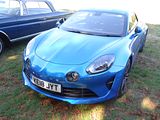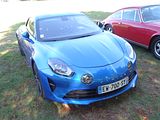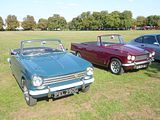The first Concours of Elegance, held in 2012, was conceived as a one-off event, as part of Her Majesty the Queen’s Diamond Jubilee. It was so well received that plans were quickly made for another event the following year, this time at a different Royal Palace, swapping Windsor Castle for St James Palace in central London. And you could say that after that event went down at least as well as the first, the die was cast for an annual event to be squeezed into the motoring calendar. Initially, the event moved to a different venue every year but when the location for the 2017 Concours was announced to be a return to Hampton Court, so it was also declared that this would be the home of the event right through to 2022, thereby committing this event to the calendar for at least five more years. With the exception of the 2015 event which was up in Edinburgh, I’ve attended every one and always enjoyed them very much, so although the 2018 event, like previous years, clashed with a lot of other tempting events going on at the same time, it was an easy decision to prioritise this one. The Concours takes place over three days, Friday to Sunday, and on this occasion, I attended on the Saturday. Here is what I saw.
THE 2018 CONCOURS
This is the core of the event, of course. A Steering Committee, comprised a number of well-known names across the industry, are responsible for drawing up a list of cars to attend, with criteria including the fact that they have not been shown at this event before and that they are in some way special and in most cases rare. As is often the case with older cars, despite the best of intentions, not everything goes quite to plan, so a look at the list of cars declared to be in the display and those that were actually on site do not quite correlate with a few that simply were not there and a couple that were present but which did not feature on the official list. I am pretty sure that the photographer did not miss any of the cars that were on site, so that does mean some text with no accompanying photo. In the best traditions of a Concours, there is a competitive element, with an award for Best in Show, decided by the owners of the cars. This year it went to the stunning Mercedes-Benz S Barker Boat-Tail.
1903 Panhard et Levassor O4R
This is a 1909 Isotta Fraschini Tipo A FENC. The Isotta Fraschini Tipo FE was an early Italian race car, and the Isotta Fraschini Tipo FENC is the road version and is considered one of the earliest examples of a sports car. Long rumoured to have been designed by Ettore Bugatti, the racing FE and road going FENC voiturettes were designed by pioneering Italian engineer Giuseppe Stefanini, with collaboration from chief design engineer Giustino Cattaneo. Drawing from his first race car design, the monstrous 17.2 L SOHC inline-four in the Isotta Fraschini Tipo D, which lasted but one lap in the 1905 Gran Premio di Brescia, Stefanini applied similar principles on a diminutive scale. In early 1908 he created the Tipo FE for entry in the Grand Prix des Voiturettes at Dieppe. The racing FE was the prototype for the production model, the FENC (FE Non Competizione). The FE, with its innovative 3000 rpm, 18 hp, 1.2 litre SOHC inline-four was designed to the minimum 600 kg (1323 lbs) weight limit for the 1908 Grand Prix de Voiturettes, and had a top speed of 95 km/h at an engine speed of 2500 rpm. It featured a 3-speed transmission with direct-drive top gear (not a 3-speed with overdrive as some early historians thought). While the three examples built were not particularly successful in their only competition at Dieppe on July 6, 1908 (8th, 14th, DNF), the FE heralded the death knell for the locomotive-like single- and twin-cylinder race cars of the day. The FE’s design became the Continental standard and the archetype for the small high performance sports car, although Isotta Fraschini themselves abandoned the concept almost immediately. None of the FEs are known to survive. Consistent with Isotta Fraschini’s policy of deriving road cars from its race cars, the prototype FE quickly led to a road-going FENC design in the latter half of 1908. A larger engine capacity of 1.32 litre rated at 14 hp at 2500 rpm, with a cross-drive water pump and magneto, and a four- rather than three-speed transmission (evidenced by driving any of the remaining FENCs) were the major changes. Four versions were offered in 1909: bare chassis, Tipo A (Dieppe racing type, no fenders, running boards, or lights), 6750 Lire (fenders, running boards, lights an additional 250 Lire) – this version $2750 US; Tipo B (touring type, cloth roof, fenders and lights), 6950 Lire; Tipo C (touring type, leather and cloth roof, fenders and lights), 7870 Lire. Top speed at 2500 rpm was 75 km/h with European wheels (710 mm) and 84 km/h with export wheels (810 mm). Due to the severe economic conditions following the Panic of 1907, and a fading of buyers’ interest in voiturettes, the FENC was produced for only about one year. Today only five Tipo FENCs are known to exist of less than 100 built.
This striking 95-year-old 1913 Renault Type DP Coupé Chauffeur is unique in its originality; every single body panel and piece of interior trim is as it was when it was built. Owned by the same family for its entire life, it’s an impeccable piece of history, featuring three types of lighting: gas for the headlights, electric for the interior and oil for the rear red lamp.
1912 Rolls-Royce Silver Ghost Torpedo Phaeton ‘Taj Mahal’
1914 Rolls-Royce Silver Ghost Torpedo Phaeton
1924 Alfa Romeo RL Targa Florio #2. In the early 1920s, the Italian automotive engineer, Giuseppe Merosi, designed the Alfa Romeo RL. This was not his first design for Alfa; his history with the company dates back to the early 1910s when he designed the A.L.F.A. 24 HP. During the mid-1910s he designed a DOHC four-cylinder engine that had 16-valves and displaced 4.5-litres. The Alfa Romeo RL was produced from 1922 through 1927. It had a displacement size of 2.9-litres from its six-cylinder engine, that would continue to increase in size throughout the years, culminating with a 3.6-litre size and around 125 bhp. There were four versions of the RL created, the Normale, Turismo, Sport, and RLTF (for Targa Florio). The RLTF was a purpose-built, racing versions that was stripped of non-essential items, given sleek designs, and weighed about half of the other versions. The engine was finely tuned and given seven main bearings and double carburettors. It was used in competition by such legendary drivers as Ugo Sivocci, Enzo Ferrari, Antonio Ascari, and Giulio Maset. The stage on which the Alfa Romeo RL achieved its greatest triumphs was the Targa Florio, where it secured a one-two finish in 1923 (in the two-seater spider configuration). Ugo Sivocci piloted the winning car and a third RL finished in fourth place. Sivocci’s car was the first painted with a green cloverleaf on a white background, which would later become the hallmark of Alfa Romeo competition cars and sportier production models. Numerous racing drivers enjoyed success after choosing the RL, from Giulio Masetti and Antonio Ascari to Giuseppe Campari and a young Enzo Ferrari. The 1923 edition of the Targa Florio served up a barnstorming finale. Alfa Romeo entered five RL models driven by: Antonio Ascari (the father of future Formula 1 World Champion Alberto), Giuseppe Campari, Giulio Masetti, Enzo Ferrari and Ugo Sivocci. On the fourth and final lap of the Madonie circuit, Ascari emerged first from the hills, but around two hundred metres from the finish line his car broke down and stopped on the Cerda station bend. With the help of mechanics, who climbed into the car with naive enthusiasm, Ascari managed to cross the finish line first, but the race commissioners ordered him to retrace his steps and finish the race without the extra passengers. In the meantime Sivocci, who had been in second place until that point, took over the lead and clinched the first of Alfa Romeo’s ten victories in the Targa Florio, as well as the first international triumph for the Milanese car maker.
The 1925 Bugatti Type 35 Grand Prix Two-Seater is often thought of as THE classic Bugatti. The Type 35 was phenomenally successful, winning over 1,000 races in its time. It took the Grand Prix World Championship in 1926 after winning 351 races and setting 47 records in the two prior years. At its height, Type 35s averaged 14 race wins per week. Bugatti won the Targa Florio for five consecutive years, from 1925 through 1929, with the Type 35. The original model, introduced at the Grand Prix of Lyon on August 3, 1924, used an evolution of the 3-valve 1991 cc overhead cam straight-8 engine first seen on the Type 29. Bore was 60 mm and stroke was 88 mm as on many previous Bugatti models. 96 examples were produced. This new powerplant featured five main bearings with an unusual ball bearing system. This allowed the engine to rev to 6000 rpm, and 90 hp was reliably produced. Solid axles with leaf springs were used front and rear, and drum brakes at back, operated by cables, were specified. Alloy wheels were a novelty, as was the hollow front axle for reduced unsprung weight. A second feature of the Type 35 that was to become a Bugatti trademark was passing the springs through the front axle rather than simply U-bolting them together as was done on their earlier cars. A less expensive version of the Type 35 appeared in May, 1925. The factory’s Type 35A name was ignored by the public, who nicknamed it “Tecla” after a famous maker of imitation jewellery. The Tecla’s engine used three plain bearings, smaller valves, and coil ignition like the Type 30. While this decreased maintenance requirements, it also reduced output. 139 of the Type 35As were sold. The Type 35C featured a Roots supercharger, despite Ettore Bugatti’s disdain for forced induction. Output was nearly 128 hp with a single Zenith carburettor. Type 35Cs won the French Grand Prix at Saint-Gaudens in 1928, and at Pau in 1930. Fifty examples left the factory. The final version of the Type 35 series was the Type 35B of 1927. Originally named Type 35TC, it shared the 2.3 litre engine of the Type 35T but added a large supercharger like the Type 35C. Output was 138 hp, and 45 examples were made. A British Racing Green Type 35B driven by William Grover-Williams won the 1929 French Grand Prix at Le Mans. The Type 35 chassis and body were reused on the Type 37 sports car. Fitted with a new 1496 cc straight-4 engine, 290 Type 37s were built. This engine was an SOHC 3-valve design and produced 60 hp The same engine went on to be used in the Type 40.
This 1929 Mercedes-Benz S Barker Tourer ‘Boat Tail’ was based on the 1927 Mercedes S-Type. Originally owned by racing enthusiast and British Racing Drivers’ Club co-founder Earl Howe, this ‘Boat Tail’ car was fitted with a revolutionary body which incorporated a lightweight and aerodynamic shell with unique aircraft-inspired aluminium side pods crafted by English coachbuilders Barker. Over the years, the majority of Earl Howe’s unique specifications were all but lost, until a recent sympathetic restoration brought it back to its former glory.
Also dating from 1929 is this Rolls-Royce Phantom I Brewster Riviera. All Rolls-Royces are special, but some are totally unique. This example may be one of ten Riviera Phantom I cars built, but it’s the only example specified by its owner with gold-plated exterior trim as far as the eye could see. Bought by Irene Schoelkopf Carman in 1929, it also comes fitted with a few of her other ‘optional extras’, including a Dunhill lighter, an intercom for communicating with the driver and a mirror pad.
1929 Rolls-Royce Phantom I Coupé Chauffeur
This 1931 Bugatti Type 54 belongs to American collector Peter Mullin, and it was on show at Prescott on at least a couple of occasions last year. Bugatti developed the Type 54 prototype in 1931 as an alternate approach to competition with Germany’s and Italy’s high-powered racecars. Whereas previous Bugatti racecars had focused on finesse, this model focused on power and it was created in something of a hurry. Rumour has it that the first two Bugatti Type 54s were put together in just 13 days, using Type 45 chassis frames and Type 50 motors, prior to the 1931 Italian Grand Prix at Monza. The Type 50 straight 8 engine has a capacity of 4.972cc and is fitted with twin carburetors and a supercharger to produce around 300hp, but this also made it the largest and heaviest of the Bugatti racecars, so much so that it proved difficult to handle. At times the vehicle’s weight and power caused the tyres to detach from the rims, resulting in a large number of crashes. Archille Varzi drove chassis #54201 to a third place finish in that 1931 Monza event and it was later sold to Czech Republic Prince Jiri Lobcowicz. The Prince was killed racing #54201 at Avus Germany in 1932 and the remains of #54201 were acquired by his friend and fellow competitor Zdenek Pohl. Zdenek had Prague coach builder O Uhlik fit the Roadster ‘Praha’ body seen here, to the repaired chassis #54201. In the 1970’s the ‘Praha’ body was removed from #54201 in favour of a body better suited to competition on the track. Skip Berg, a California car dealer, later still found the Uhlik ‘Praha’ roadster body, and had it fitted to a chassis built up by Uwe Hucke and given the chassis number BC-70 by the Bugatti Owners Club.
1932 Alfa Romeo 8C 2300 Short Chassis Spider
Dating from 1935 is this Tatra 77, a car considered to be the first serial-produced, truly aerodynamically-designed automobile. It was developed by Hans Ledwinka and Paul Jaray, the Zeppelin aerodynamic engineer. Launched in 1934, the Tatra 77 is a coach-built automobile, constructed on a platform chassis with a pressed box-section steel backbone rather than Tatra’s trademark tubular chassis, and is powered by a 60 bhp rear-mounted 2.97-litre air-cooled V8 engine, in later series increased to a 75 bhp 3.4-litre engine. It possessed advanced engineering features, such as overhead valves, hemispherical combustion chambers, a dry sump, fully independent suspension, rear swing axles and extensive use of lightweight magnesium alloy for the engine, transmission, suspension and body. The average drag coefficient of a 1:5 model of Tatra 77 was recorded as 0.2455. The later model T77a has a top speed of over 150 km/h (93 mph) due to its advanced aerodynamic design which delivers an exceptionally low drag coefficient of 0.212, although some sources claim that this is the coefficient of a 1:5 scale model, not of the car itself. The Tatra 77 was a hand-built car with a leather interior. Some cars had a glass partition between the front and rear seats. A sliding roof was available. An unusual feature on a few of the T77 models was a central position for the steering wheel in the dashboard. The front-seat passengers were seated on either side of the driver and the seats placed slightly rearwards as in the modern-day McLaren F1. All other T77’s had the steering wheel on the right-hand side as Czechoslovakia (like a number of other European countries) drove on the left before the Second World War.
Supremely elegant for sure is this 1936 Lancia Astura Bocca Cabriolet. The Astura is the pinnacle of pre-war Lancias, placing it at the summit of pre-war Italian automotive engineering and design. Its combination of luxury and engineering refinement made it an ideal platform for coachbuilders, particularly in its more sporting Corto, or short-wheelbase version. Introduced in November 1931 as a replacement for Lancia’s flagship Dilambda, the new model represented a generational shift. Where the older model featured a 3,960-cc engine moving 2,010 kilograms, the new car would retain the same length but would be lighter and more efficient – its new, reduced displacement engine nonetheless giving it a better power-to-weight ratio than the earlier car. Reflecting a new Italian nationalism, Lancia broke their precedent of assigning their cars the letters of the Greek alphabet and instead named the new model Astura, after an ancient island castle south of Rome. Although Lancia had pioneered monocoque construction in their 1922 Lambda, the Astura was destined for carrozzerie and was given a cross-braced box-section platform to allow wider design latitude. The model was initially offered in a single 125-inch wheelbase as the Tipo 230, but for the 3rd Series, two versions were offered. Nine hundred and eight were built as Lungo, with a wheelbase of 131 inches as the Tipo 233L, while 328 were constructed to Corto specification on a wheelbase of 122 inches as Tipo 233C. Notwithstanding its more conventional construction, like its predecessors the chassis had excellent torsional stiffness, which contributed to its feeling of solidity and refinement. The front suspension retained Lancia’s sliding-pillar independent suspension, while the live rear axle was controlled by friction dampers that could be adjusted to suit with dashboard-mounted controls. A Bijur central lubrication system was provided. The 3rd Series also received a Dewandre brake servo and a 78-litre fuel tank. An option for late cars was a hydraulic braking system, built by Marelli under license from Lockheed. As with the Dilambda that preceded it, the Astura was given a narrow-angle V-8 engine. Initially at 19-degrees with a displacement of 2,604 cc and producing 73 bhp at 4,000 rpm, by the introduction of the 3rd Series in 1933, it had grown to 2,972 cc at an angle of 17-degrees 30-minutes, in which form it produced 82 bhp at 4,000 rpm. The narrow-angle architecture made for a compact unit – narrower than a conventional V-8 and shorter than an inline – with a single cylinder head. The head itself was unusual in having a cast iron lower section and an aluminium upper section. In between is the camshaft driven by a triplex chain with tensioner. The engine also featured an Autokleen oil filter, a unit that rotated a cleaning cylinder every time the engine was started. Although the engine was inherently quite smooth, it was set into the chassis on four rubber isolators. Fitted with a factory berlina body, the 3rd Series Astura weighed 1,500 kilograms, while the bare coachbuilders’ platform came in at 960 kilograms. To ensure that the car delivered the performance its well-heeled buyers expected, Lancia recommended that coachbuilders limit bodywork weight to no more than 460 kilograms. Although not primarily a competition car, the 3rd Series Asturas did achieve some success in that realm. In 1934, a Castagna-bodied Astura was driven to 10th place in the Mille Miglia by Mario Nardilli and Carlo Pintacuda. Later that year the same pair won the Giro d’Italia, a six-day, 3,534-mile circuit around Italy, finishing the grueling event in 65 hours, 57 minutes, and 6 seconds at an average of 53.58 mph – a testament to the reliability and road-handling of the model. Further reinforcing the car’s capability, another Astura driven by Giuseppe Farina and E. Oneto finished third. The present car, Tipo 233C chassis number 33-5313, is one of 328 Corto versions produced on the short-wheelbase 122-inch platform. Fitted with engine number 91-1171, it was delivered as a bare chassis to Pinin Farina in the summer of 1936 and clothed in a body designed by Mario Revelli di Beaumont, who took full advantage of the narrow-angle V-8 to create a rakish yet restrained cabriolet design, dubbed the Tipo Bocca. It was commissioned a Lancia dealer in Biella who ultimately ordered a total of six Bocca cabriolets in both corto and lungo chassis. The aerodynamic profile features a sloping, rounded grille, whose horizontal bars are interrupted by a dramatic “waterfall” of chrome strakes running from the slim, elegant bumper to the base of a vee’d windshield. The peaked front fenders are separated from the body by rounded fairings that feature individually integrated headlights and driving lights, while the rear fender spats also contribute to the clean, smooth lines. The open car’s streamlined horizontal emphasis is reinforced by a chrome strake running the entire length of the body as well as horizontal engine compartment vents, features that are accentuated when the halves of the split windshield are folded flat. Gently curving body sides feature an early use of curved side windows. Highlighting the car’s restrained elegance was its subtle, pale grey paint with blue upholstery and power-actuated convertible top, the latter a great novelty for 1936. The newly completed cabriolet was displayed on the Pinin Farina stand at the 1936 Salone del l’Automobile, Milano, where it received the President’s Cup from the Registro Ancetre Club Italia. Following the show, chassis number 33-5313 was acquired by Ghiara & C., Lancia’s main agent in Genoa. Ghiara sold the car to Cav. Piero Sanguineti, a local industrialist, for about 75,000 Lire (the equivalent of about $4,200 at the time). In May 1937, Sanguineti showed the car in the inaugural Concorso d’Eleganza per Automobili, San Remo, where it received a class award. The car was subsequently purchased by Emil Uebel, Lancia’s German distributor, who apparently kept it in his main facility in Berlin-Charlottenburg. Wartime records no longer exist, offering no explanation of whether Uebel sold the car or retained it for himself, or how and where the car survived the conflict. But survive, it certainly did, and in early 1947 it was acquired by American collector Barney Pollard, as part of a package deal with two steam locomotives. Pollard shipped number 33-5313 to the United States and kept the car until 1980, when it was sold to Armand Giglio, former President of the American Lancia Club. Giglio held the car a further two decades, selling it in 2004 to an owner in Connecticut. Other than an older repaint, the car was in largely original condition, but with some deterioration of the body’s wood framing. The new owner undertook restoration of the wood framing, as well as some body preparation work. In this state the car was sold in late 2011 to Orin Smith, who commissioned Vantage Motorworks of Miami to complete the restoration to international concours standards. The finished car easily achieved Best in Class at the Classic Sports Sunday at Mar-a-Lago, and People’s Choice here at Amelia Island, both in 2013. The Lancia subsequently journeyed back to Italy, where it was judged Most Sympathetic Restoration at the 2014 Concorso d’Eleganza Villa d’Este, in the company of a thrilled Mr. and Mrs. Smith. More recently the car was exhibited at the Petersen Automotive Museum in Los Angeles, as part of their “Rolling Sculpture” exhibit of advanced streamlined design. Notably, a sister car to this lovely Astura, in long-wheelbase form was awarded Best of Show at the 2016 Pebble Beach Concours d’Elegance, cementing its importance to design and elegance for the era. This Lancia Astura ‘Corto’ cabriolet perfectly epitomizes Pinin Farina’s design of the pre-war period – restrained elegance with simple but precise details. As such, it represents an opportunity to acquire one of the most important and beautiful examples of Italian engineering and coachbuilding – a show car par excellence, now as then.
Oldest Aston Martin here was this 1937 Aston Martin 15/98 Long Chassis Tourer. Developed directly from the two Aston Martin ‘Speed Models’ destined for the 1936 Le Mans race and equipped with a 1974cc four-cylinder engine, the model we are presenting here has the same mechanical specification, but a longer chassis with room for two passengers in the rear. A very elegant but nonetheless sporting version, thanks to its engine producing 98bhp, from which it derives its name as the 15/98 Tourer. Just 24 cars were built, of which it is understood from the AMOC’s records that only 11 remain around the world.
1937 Alvis 4.3-Litre Vanden Plas Concealed Head Coupé
1938 Bentley 4 ¼ Litre Sports Cabriolet by Erdman & Rossi
1938 Lagonda V-12 Rapide Coupé. In the mid-1930s the Lagonda brand was given a new lease of life, under Technical Director W.O. Bentley, with the aim of creating the legendary V12. Most special of all the Lagonda V12s produced were these Rapide models, fitted with the short sports chassis and gorgeous art deco bodywork.
1949 Bentley Mk VI Lightweight Coupé
This 1949 Ferrari 166 Inter Superleggera is the oldest known Ferrari in the UK and it has quite a history having competed in the Mille Miglia four times. Now on its 6th owner, it is sued regularly and can be seen at a good number of events around the country during the year. The Ferrari 166 Inter was Ferrari’s first true grand tourer. An evolution of the 125 S and 166 S racing cars, it was a sports car for the street with coachbuilt bodies. The Inter name commemorated the victories claimed in 166 S models by Scuderia Inter. The 2.0 litre Gioacchino Colombo-designed V12 engine from the 166 S remained, as did its chassis, though the wheelbase would eventually grow from 2420 mm (95 in) to 2500 mm (98 in). Output was 110 to 140 hp at 6,000 rpm with one to three carburettors. The 166 Inter shared its Aurelio Lampredi-designed tube frame and double wishbone/live axle suspension and 2420 mm wheelbase with the 125 S and 166 S. The first Ferrari GT car debuted at the Paris Motor Show on October 6, 1949. It was an elegant coupe designed by Carrozzeria Touring of Milan who had previously created a number of similar Ferrari and Alfa Romeo models. Customer sales soon started, with 166 Inter models becoming the first Ferraris to be purchased for the road rather than the race track. As was typical at the time, a bare chassis was delivered to the coachbuilder of the customer’s choice. Many used Touring, but Ghia’s one-off Boano coupe was more daring. Others were built by Stabilimenti Farina, who penned a Cisitalia 202-like coupe. Vignale also joined in, presaging their designs of the coming decade, and two cabriolets created by Stabilimenti Farina and Bertone foreshadowed those companies’ later involvement with Ferrari. 37 166 Inters were built from 1948 through 1950 before the car was replaced by the 195 Inter and 212 Inter in 1950 and 1951.
There were two examples of the Aston Martin DB2, a 1950 Aston Martin DB2 DHC 1st Sanction and a later 1953 DB2/4 Coupe. This was the first new post-war Aston, and the first car to adopt the now legendary DB naming convention, reflecting the fact that in 1947 David Brown had bought the Aston Martin and Lagonda companies and incorporated them as Aston Martin Lagonda Ltd. Lagonda’s 2.6 litre dual overhead cam, straight-six engine, more powerful than the pushrod 1.9 litre unit in the Aston Martin 2-Litre Sports, was the main objective in Brown’s acquisition of the company. W. O. Bentley had supervised the engine’s design, which was largely by William (Willie) Watson, an engineer with the pre-war Invicta company who had collaborated on Lagonda’s pre-war V12 and also designed the short-lived post-war version. Work then started on producing a new car, which was called the DB2. This new model would utilise a version of the Lagonda engine in a shortened version of the tube-frame chassis designed by Claude Hill for the Aston Martin 2-Litre Sports, with a fastback coupé body designed by Frank Feeley. Three pre-production cars were entered for the 1949 24 Hours of Le Mans. One, which would become the development car for the production DB2, had the Lagonda straight-6, while the four-cylinder Aston Martin 2-litre unit powered the other two. After six laps the Lagonda-powered car, driven by Leslie Johnson, retired with overheating caused by failure of the water pump. One of the 2-litre cars was in 4th place and running without brakes when it crashed two hours short of the finish, fatally injuring driver Pierre Maréchal. The other finished 7th, crewed by Arthur Jones and Nick Haines. A month later, the larger-engined car, driven by Leslie Johnson and Charles Brackenbury, finished 3rd in the Spa 24-hour race, where one of the 2-litre cars was driven to 5th by Nick Haines and Lance Macklin. For 1950 all three factory team cars were equipped with the Lagonda engine. At the 1950 Le Mans race the one driven by George Abecassis and Lance Macklin finished 5th, with Brackenbury and Reg Parnell bringing another home 6th, which won Aston Martin 1st and 2nd in the 3-litre class. Across the Atlantic, Briggs Cunningham drove his DB2 to 2nd in its class at the inaugural Sebring race meeting in December 1950. The factory team cars continued racing in Europe throughout 1951, including at Le Mans, where Macklin and Eric Thompson took 3rd overall, with Abecassis and Brian Shawe-Taylor 5th. David Brown soon embarked on a series of Aston Martins designed specifically for competition use, starting with the DB3. Meanwhile, the production DB2 debuted at the New York Auto Show in April 1950 and continued in production until April 1953, by which time 411 had been made. The first 49 had a chrome-framed front grille in three separate parts, and large rectangular cooling vents in the front wings. Subsequent cars had a one-piece grille with horizontal chrome slats, and no side vents. The single-piece bonnet was hinged at the front. At the rear of the fixed-head coupé (FHC) a small top-hinged lid gave access to the spare wheel, and luggage space was behind the front seats, accessible only from inside the car. Later in 1950, a Drophead Coupé (DHC) variant was introduced. At least 102 were built. In April 1950, an engine with larger carburettors, inlet camshaft the same as the exhaust (for increased duration), and higher compression ratio pistons (8.16:1) was made available. Aston Martin’s first Vantage upgrade option offered 125 hp. Initially the higher compression ratio made the engine unsuitable for the British market, as the postwar austerity measures of the early 1950s restricted UK vehicles to 72 octane “Pool petrol”. The first DB2 Vantage, LML 50/21, was delivered to, and raced by, Briggs Cunningham in the United States.
A revised version of the DB2 was launched in 1953, called the DB2/4. It was available as a 2+2 hatchback, marketed as a Saloon, as a Drophead Coupé (DHC) and as a 2-seat Fixed Head Coupe. A small number of Bertone bodied spiders were commissioned by private buyers. A further update in 1957 created the Mark III, and this was produced until the launch of the DB4 in 1958.
Far from familiar is this one-off, the 1950 166/212 Export with a body by Fontana which is often referred to as the “Uovo”, Italian for “egg”, a not illogical choice of name given its shape. It started off life as a 166 Barchetta Touring and was engaged in the Tour of Sicily and then the Mille Miglia, where it crashed. Giannino Marzotto asked the designed Franco Reggani to design a new body which coachbuilder Fontana would then realise. In 1951, in its new guise, it entered the same two races but finished neither of them, but would go on to have more success winning the Coppa della Toscana and finishing second in Porto. It appeared many times in the 90s at events and then just disappeared before resurfacing a couple of years ago.
Looking quite similar to that early Ferrari is this 1952 Alfa Romeo 1900 ‘Pre-series’ Sprint Coupé. The 1900C was introduced in 1951 as the coupe version of the four-door Alfa Romeo 1900. The addition of the C in the name wasn’t for coupe as many assume, but for corto – the Italian word for short. Although the 1900 model series was the first with a unibody chassis, and the the first to be fitted with the new 1884cc DOHC inline-4, the then general manager of Alfa Romeo, Iginio Alessio, chose to develop the unibody chassis in such a way that the iconic Italian carrozzerie, or coachbuilders, could build custom bodies for it. He had become concerned with the difficulty posed by creating custom bodies for these newly engineered cars – and as a result of this decision the Alfa Romeo 1900 and 1900C were both bodied by some of the greatest names in Italian coachbuilding – including Zagato, Touring, Pinin Farina, Bertone, Boneschi, Boano, Colli, Stabilimenti Farina, Vignale, and of course, Ghia. Alfa Romeo gave official contracts to Touring to build the sporty 1900 Sprint coupé and to Pinin Farina to build an elegant four seat Cabriolet and Coupé. Carrozzeria Zagato built a small series of coupés with the unofficial designation of 1900 SSZ, designed for racing with an aerodynamic lightweight aluminium body and Zagato’s trademark double bubble roof. One-off specials were numerous, from the famous Bertone BAT series of aerodynamic studies, to an infamous sci-fi like Astral spider designed by Carrozzeria Boneschi for Rafael Trujillo the dictator of the Dominican Republic. There was a Barchetta or “Boat Car” made by Ghia-Aigle in Lugano Switzerland designed by Giovanni Michelotti at the request of a wealthy Italian who had two passions: the ‘Riva’ boats and a woman, his mistress, the car has no doors or windscreen wipers.
1952 Bentley R-Type DHC
1953 Austin-Healey 100 Special Test Car
1953 Pegaso Z-102 Spyder
1954 Aston Martin DB3S Sports Racing
There was an “Otto Vu” Fiat here again this year, this time a 1954 Fiat 8V with a Vignale body. The Fiat 8V (or “Otto Vu”) is a V8-engined sports car produced by the Italian car manufacturer Fiat from 1952 to 1954. The car was introduced at the 1952 Geneva Motor Show. The Fiat 8V got its name because at the time of its making, Fiat believed Ford had a copyright on “V8”. With 114 made, the 8V wasn’t a commercial success, but did well in racing. Apart from the differential the car did not share any parts with the other Fiats (but many parts were made by Siata and they used them for their cars). The 8V was developed by Dante Giacosa and the stylist Luigi Rapi. The engine was a V8 originally designed for a luxury sedan, but that project was stopped. The Fiat V8 had a 70 degree V configuration, displaced 1,996 cc and was fitted with two twin-choke Weber 36 DCF 3 carburettors. In its first iteration (type 104.000) the engine had a compression ratio of 8.5:1 and produced 104 bhp at 5,600 rpm, giving the car a top speed of 190 km/h (118 mph). Improved type 104.003 had different camshaft timing for 113 bhp at 6,000 rpm; finally type 104.006 with an 8.75:1 compression ratio, revised camshaft timing and fuel system put out 125 bhp at 6,600 rpm. The engine was connected to a four speed gearbox. The car had independent suspension all round and drum brakes on all four wheels. Top management were preoccupied with more run of the mill projects, however, and only 114 of the high-performance coupés had been produced by the time the cars were withdrawn from production in 1954. Nevertheless, they continued to win the Italian 2-litre GT championship every year until 1959. 34 of the cars had a factory produced bodywork by Fiat’s Reparto Carrozzerie Speciali (“Special Bodies Department”). Some cars had the bodywork done by other Italian coachbuilders. Carozzeria Zagato made 30 that they labelled “Elaborata Zagato”. Ghia and Vignale also made bodyworks. Most were coupés, but some cabriolets were made as well. An example fitted with a factory-style glass-fibre reinforced plastic body was displayed at the 1954 Turin Motor Show. The composite bodyshell—produced by Fiat’s experimental bodywork department—weighed just 48.5 kg (106.9 lb). This 8V currently resides in the Centro Storico Fiat in Turin.
Quite a rarity, this is a 1954 Frazer Nash Le Mans Coupé. The cars had a 2-litre 16-valve engine. The car pictured won its class at the 1952 Le Mans 24 Hours (13th overall) driven by Ken Wharton and Lawrence Mitchell. The next year it was placed 11th overall driven by Marcel Becquart and Maurice Gatsonides. Similar to the Frazer Nash Targo Florio, 9 Le Mans Coupés were built, three of which raced at le Mans.
This 1954 Jaguar XK120 is unique, in being the only one ever to be bodied by Pininfarina. In 1954 it went straight from the Jaguar factory in Coventry to Italy to have its beautiful bodywork applied, before being shown at the Geneva Motor Show in 1955. This car was very recently the subject of a 6750-hour nut-and-bolt restoration by Classic Motor Cars to bring it back to exactly how it left Pininfarina in the ‘50s.
There were two examples of the Bentley S1 Continental, a 1955 Drophead Coupé and a 1956 Bentley S1 Continental Coupe.
This 1957 Ferrari 500 TRC by Scaglietti was named after the FIA ‘C’ racing regulations to which it was built to comply. Many will claim that this 500 TRC, or ‘Testa Rossa C’, is one of the most beautiful Ferraris ever built. This particular example is the last TRC produced, and the last ever four-cylinder car Ferrari made. It also comes complete with an impressive race history, including class wins at both the 1957 12 Hours of Sebring and 24 Hours of Le Mans.
Dating from 1957 is this Fiat 1200 Vignale ’Wonderful’, one of a series of succesfully-executed Michelotti Fiat coupes that were built by Vignale in Grugliasco in the 1950s. before Vignale produced a number of models bearing his own name, such as the Vignale 850, 124 Eveline and 125 Samantha in the 1960s. Just 5 of the Wonderful were built. All benefitted from two-tone paintwork, which along with tasteful brightwork and whitewall tyres made the car look quite special. There were special matching interior tones, mated to a standard Fiat 1200 dashboard, instrumentation and steering wheel. The real innovation came from the removable roof panels, with a lift-out roof section of the type which would come to be known as a “targa top”, an idea which saw its next appearance on the Triumph TR4, also a Michelotti design. It was demonstrated to useful effect when a Paris-registered Wonderful appeared briefly in the 1966 French film “Les Combinards” (“the Racketeers”), a black and white movie directed by the audacious Jean-Claude Roy. This stylish car more than held its own in the display here in the company of cars wit much more exotic nameplates.
This 1958 Maserati 300S was driven by Stirling Moss when it was new. The Maserati 300S was a racing car produced between 1955 and 1958, which competed in the FIA’s World Sportscar Championship. Twenty-six examples were produced. The 3.0-litre (approx 245 bhp at 6200 rpm) engine was based on the Straight-6 design of the Maserati 250F and incorporated a lengthened stroke developed by Vittorio Bellentani to increase the capacity from the original 2.5-litres. The compression ratio was reduced from 12:1 to 9.5:1, partly due to the FIA regulations requiring the engine to be run on road car fuel. It used three Weber carburettors, initially 42DCO3, later 45DCO3. A trellis structure was used instead of the tubular one of the 250F, and the aluminium body was by Medardo Fantuzzi. The brakes were the same as the 250F, precisely machined alloy drums with extensive finning. The suspension was also of the same design as the 250F but with some strengthening to cope with the rougher tracks and road surfaces encountered in WSC racing. New features for the 300S included the incorporation of a De Dion type rear axle, a transverse four-speed gearbox and two chain driven camshafts. After a poor showing in the first season (1955) due mainly to mechanical malfunctions and development problems, it won at the Nürburgring in 1956 and finished second overall. It was second to the Maserati 450S, and was followed by the Maserati 350S. After the Guidizzolo accident (1957), the last few 300S were sold to customers in the USA. Giulio Alfieri gave up an attempt to fit it with fuel injection. One 300S was developed with the new V12 engine, becoming the Maserati 350S.
This 1960 Aston Martin DB4 GT Coupé was the first of a number of DB4 models I came across at the event.
A car I’d not heard of before was this 1961 Intermeccanica IMP 700GT. Intermeccanica was founded in Turin, Italy, in 1959. Its first project was speed equipment kits for Renault, Simca, Peugeot, and DKW. Kits consisted of dual throat carburettors, intake manifolds, high-performance cams and oil filters. A full line of free-flow exhaust systems was developed for 50 or more European cars in co-operation with an Italian tube company. These were marketed under the Intermeccanica label everywhere but North America, and sold particularly well in South Africa. In North America, they were distributed by Stebro, who eventually made the systems themselves. In 1960, from modifications of Peugeot engines a Formula Junior de-stroked, a counterweighted engine was developed, using the facilities of Conrero. A Formula Junior racing car, one of the first with a rear engine, was also built and sold. When the English Formula Juniors with Ford-based engines in the rear came out a few months later, the IM was outclassed. However, about ten engines were sold. A small aluminium two-seater coupe was developed by Intermeccanica, based on the Austrian Puch 500. The Puch was a hybrid, with part Fiat 500 chassis and body and part Puch mechanicals, namely a 500 cc air-cooled opposed twin engine, special brakes, and transmission. After a presentation of the prototype car to Steyr-Daimler-Puch AG in Graz, Austria, 21 of these small coupés were built. Some were touring cars, and some lightened for racing. The IMP won the 500 cc class one year at Nurburgring.
1962 AC Cobra Competition
This 1962 Ferrari 250 SWB Berlinetta was one of the most notable GT racers of its time, the 1959 250 GT Berlinetta SWB used a short (2,400 mm (94.5 in)) wheelbase for better handling. Of the 176 examples built, both steel and aluminium bodies were used in various road (“lusso”) and racing trims. Engine output ranged from 240 PS (237 bhp) to 280 PS (276 bhp). The “lusso” road car version was originally fitted with 185VR15 Pirelli Cinturato (CA67). Development of the 250 GT SWB Berlinetta was handled by Giotto Bizzarrini, Carlo Chiti, and young Mauro Forghieri, the same team that later produced the 250 GTO. Disc brakes were a first on a Ferrari GT, and the combination of low weight, high power, and well-sorted suspension made it competitive. It was unveiled at the Paris Motor Show in October and quickly began selling and racing. The SWB Berlinetta won Ferrari the GT class of the 1961 Constructor’s Championship. The car also won the 1960, 1961 and 1962 Tour de France Automobile before giving ground to the GTO’s.
This is a 1964 Porsche 904 GTS. Officially we should call this car the GTS, as Porsche had the same naming conflict with Peugeot over this as they did with the 911 (which they had originally planned to call 901, of course), but the reality is that everyone knows this elegant machine as the 904GTS. Although on the rare occasions that you see one, it tends to look like a road car, the 904GTS owes its existence to the race track. After having withdrawn from Formula One at the end of the 1962 season, Porsche focused again on sportscar racing. The 904 debuted late in 1963, for the 1964 racing season, as a successor to the 718, which had been introduced in 1957. Porsche designed the GTS variant to compete in the FIA-GT class at various international racing events. The street-legal version, as seen here, debuted in 1964 in order to comply with Group 3 Appendix J homologation regulations requiring a certain number of road-going variants be sold by the factory. Porsche produced 106 904s at four or five a day with a list price of US$7245. Orders far exceeded the one hundred car requirement to satisfy homologation rules and more cars could readily have been sold. The 904’s mid-engine layout was inherited from the 718 RSK. It was powered by the 1,966 cc Type 587/3,] four-cam flat four-cylinder engine producing 198 hp, “probably the most complex four-cylinder” ever. It drove a five-speed transmission. Begun as the Type 547, its development began in 1953, when the previous VW-based 1,100 cc flat-four, used in the contemporary 356 hit the limit of its potential. Porsche realised it needed something all-new. The brainchild of Dr. Ernst Fuhrmann, later Technical Director, it was hoped to achieve an “unheard of” 70 hp per litre, relying on hemispherical combustion chambers and two-choke Weber carburettors to generate 112 hp from the 1,500 cc four-cam engine. The 1.5 litre weighed 310 lb dry, eventually producing 180 hp. A complex design that proved “very taxing” to build and assemble, but very durable, it was used in 34 different models, including 550 Spyders, 356 Carreras, and F2/1s. The 904 was the first Porsche to use a ladder chassis and fibreglass body, appearing more like specialist racing cars than the modified sports cars typical at the time, and was painted white. The fibreglass body was bonded to its steel chassis for extra rigidity, and achieved a drag coefficient of 0.34. While many German race cars had used unpainted aluminium bodies since the famous 1934 Silver Arrows, most 904s were painted silver, the modern German national racing colour. Unusually for Porsche, the two-seater bodies were provided by contractors, which would later become standard practice among race car builders. The 904’s fibreglass body was made by spraying chopped fibreglass into a mould, the amount sprayed often varied in thickness over the shape of the car and as a result the weight of the various cars was somewhat inconsistent; some were heavier than others. Race-prepared four-cylinder 904s weighed in at approximately 1,443 pounds (655 kg) and the low weight gave the 904 the ability to accelerate to 60 mph from a standstill in less than six seconds (using the standard rear gear, which would be typical at Sebring) and to reach a top speed of 160 mph. Frontal area was only 14 sq ft. The Porsche 904 rode on coil springs (the first Porsche not to use trailing arm front and swing-axle rear suspension. To satisfy demand, twenty 1965 models were produced, some featuring a variant of the 911’s flat six,. These were known as the 904/6. Porsche also built a few factory race cars with a flat eight-cylinder power plant derived from the 1962 804 F1 car, the 225 hp 1,962 cc Type 771, but these had a “disturbing habit” of making their flywheels explode. These cars were known as the 904/8. A number of modern replica versions have been produced.
Dating from 1965 was this Aston Martin DB5 Convertible. 123 convertible DB5s were produced (also with bodies by Touring), though they did not use the typical “Volante” name until 1965. The convertible model was offered from 1963 through to 1965. Originally only 19 of the 123 DB5 Convertibles made were left-hand drive. 12 cars were originally fitted with a factory Vantage engine, and at least one further convertible was subsequently factory fitted with a DB6 specification Vantage engine. A rare factory option (actually fitted by Works Service prior to customer delivery) was a steel removable hard top. From October 1965 to October 1966, Aston Martin used the last 37 of the Aston Martin DB5 chassis’ to make another convertible model. These 37 cars were known as “Short Chassis” Volantes and were the first Aston Martins to hold the “Volante” name. Although calling it a “Short Chassis” is a bit of a misnomer as the “short” comes from comparing it to the subsequent DB6, which has a longer chassis. When compared to the DB5, it is not “short” but rather the same size, however these cars differ to the DB5 convertible models as they feature DB6 split front and rear bumpers and rear TR4 lights, as also used on the DB6.
There were two examples of the Ferrari 275 GTB here, a 1965 Alloy Long Nose and a 1965 275 6C Short Nose Berlinetta.
This 1967 Bizzarrini GT Strada 5300 is an example of the sports car produced by Bizzarrini from 1964 to 1968. Sold as an exceptionally low slung 2-seat coupe, roadster, and track-tuned “Corsa” racer, it proved to be Bizzarrini’s most successful model. Designed by ex-Ferrari chief engineer Giotto Bizzarrini in 1963, the Strada was launched by his company in 1964. It was similar in concept to the Iso Grifo, also designed by Bizzarrini, and even used the Grifo name while in the planning stage, as well as the welded unibody platform of the Iso Rivolta 300. The Strada – which adopted a Front mid-engine, rear-wheel-drive layout – was powered by a 327 Chevrolet small-block engine displacing 5,358 cc and rated at 365 hp to 385 Nm (284 lb⋅ft) of torque in the road legal version and 400 hp in the Corsa. The car could accelerate 0–100 km/h (62 mph) in less than 7 seconds, and attained a top speed of 280 km/h (174 mph). In later models, the 5,358 cc engine was replaced by a larger 7,000 cc unit, fitted with a Holley carburettor. Dunlop four-wheel disc brakes, a BorgWarner T-10 four-speed manual transmission, de Dion tube rear suspension, and limited slip differential were also used. The Giorgetto Giugiaro influenced Bertone styled aluminium body, was striking in its day and still regarded in the 21st century as “gorgeous” and an “absolute masterpiece”. Three spyder versions were also built, including a prototype which was a full convertible and two production versions which featured removable T-tops. In 1965, a Bizzarrini Grifo won its class at Le Mans and finished ninth overall. A total of 133 examples were produced from 1964 through 1968.
The 365 California replaced the 500 Superfast for 1966. It was the first 365 model, with its 4390 cc V12 based on the 330’s 4.0 litre Colombo unit but with an 81 mm bore. This later version of the Colombo engine was rated at 320 horsepower, in street tune using three Weber carburettors. The 365 California used the same chassis as the 500 Superfast but with an evolutionary cabriolet body by Pininfarina. Debuting at the Geneva Motor Show in 1966, just 14 examples were produced (including 2 in right hand drive) before production ended in 1967. Whilst the prototype was built on a 330 GT 2+2 type 571 chassis, production cars featured type 598 chassis. Chassis’ were sent to Pininfarina’s Grugliasco plant to be bodied and trimmed which were later returned to Ferrari for fitment of the mechanical components. It was presented at the 1966 Geneva Salon. Just 14 cars were built.
Dating from 1968 is this Ford GT40 Mk I Gulf #GT40P/1084. which competed in the Competition Sports Cars category with a 4.7-litre engine during 1968. This very car was raced by Paul Hawkins and David Hobbs to fourth place at the Spa 1000km race in May of that year.
This 1968 Jaguar XJ6 Series I is a well-known car, which was used by marque founder Sir William Lyons for a number of years.
Another competition car, this 1969 Porsche 917K #013(034) was driven by Steve McQueen in the classic film Le Mans. But this car was more than just a silver screen star, it was a genuinely successful racer on-track. Despite being damaged during filming for Le Mans, it was rebuilt using another chassis and went on to win at Daytona, Monza, the Osterreichring, Spa and Monthlery in 1971.
There was a 1970 Ferrari Dino 246 GT Coupé here, and I would come across another one elsewhere in the event.
This is a 1971 Lamborghini Miura P400 S. Some will say was the first true supercar. For sure, this car, produced between 1966 and 1973, is widely considered to have instigated the trend of high performance, two-seater, mid-engined sports cars. When released, it was the fastest production road car available. The Miura was originally conceived by Lamborghini’s engineering team, Gian Paolo Dallara, Paolo Stanzani, and Bob Wallace who in 1965 put their own time into developing a prototype car known as the P400. The engineers envisioned a road car with racing pedigree – one which could win on the track and be driven on the road by enthusiasts. The three men worked on its design at night, hoping to convince Lamborghini such a vehicle would neither be too expensive nor distract from the company’s focus. When finally brought aboard, Lamborghini gave his engineers a free hand in the belief the P400 was a potentially valuable marketing tool, if nothing more. The car featured a transversely-mounted mid-engine layout, a departure from previous Lamborghini cars. The V12 was also unusual in that it was effectively merged with the transmission and differential, reflecting a lack of space in the tightly-wrapped design. The rolling chassis was displayed at the Turin Salon in 1965. Impressed showgoers placed orders for the car despite the lack of a body to go over the chassis. Bertone was placed in charge of styling the prototype, which was finished just days before its debut at the 1966 Geneva motor show. Curiously, none of the engineers had found time to check if the engine would fit inside its compartment. Committed to showing the car, they decided to fill the engine bay with ballast and keep the car locked throughout the show, as they had three years earlier for the début of the 350GTV. Sales head Sgarzi was forced to turn away members of the motoring press who wanted to see the P400’s power plant. Despite this setback, the car was the highlight of the show, immediately boosting stylist Marcello Gandini’s reputation. The favourable reaction at Geneva meant the P400 was to go into production by the following year. The name “Miura”, a famous type of fighting bull, was chosen, and featured in the company’s newly created badge. The car gained the worldwide attention of automotive enthusiasts when it was chosen for the opening sequence of the original 1969 version of The Italian Job. In press interviews of the time company founder Ferruccio Lamborghini was reticent about his precise birth date, but stressed that he was born under the star sign Taurus the bull. Early Miuras, known as P400s (for Posteriore 4 litri), were powered by a version of the 3.9 litre Lamborghini V12 engine used in the 400GT at the time, only mounted transversely and producing 350 hp. Exactly 275 P400 were produced between 1966 and 1969 – a success for Lamborghini despite its then-steep price. Taking a cue from the Mini, Lamborghini formed the engine and gearbox in one casting. Its shared lubrication continued until the last 96 SVs, when the case was split to allow the correct oils to be used for each element. An unconfirmed claim holds the first 125 Miuras were built of 0.9 mm steel and are therefore lighter than later cars. All cars had steel frames and doors, with aluminium front and rear skinned body sections. When leaving the factory they were originally fitted with Pirelli Cinturato 205VR15 tyres (CN72). The P400S Miura, also known as the Miura S, made its introduction at the Turin Motorshow in November 1968, where the original chassis had been introduced three years earlier. It was slightly revised from the P400, with the addition of power windows, bright chrome trim around external windows and headlights, new overhead inline console with new rocker switches, engine intake manifolds made 2 mm larger, different camshaft profiles, and notched trunk end panels (allowing for slightly more luggage space). Engine changes were reportedly good for an additional 20 hp. Other revisions were limited to creature comforts, such as a locking glovebox lid, a reversed position of the cigarette lighter and windshield wiper switch, and single release handles for front and rear body sections. Other interior improvements included the addition of power windows and optional air conditioning, available for US$800. About 338 P400S Miura were produced between December 1968 and March 1971. One S #4407 was owned by Frank Sinatra. Miles Davis also owned one, which he crashed in October 1972 under the influence of cocaine, breaking both ankles. The last and most famous Miura, the P400SV or Miura SV featured different cam timing and altered carburettors. These gave the engine an additional 15 hp to a total of 380 hp. The last 96 SV engines had a split sump. The gearbox now had its lubrication system separate from the engine, which allowed the use of the appropriate types of oil for the gearbox and the engine. This also alleviated concerns that metal shavings from the gearbox could travel into the engine with disastrous and expensive results and made the application of an optional LSD far easier. The SV can be distinguished from its predecessors from its lack of “eyelashes” around the headlamps, wider rear wings to accommodate the new 9-inch-wide rear wheels and Pirelli Cinturato tyres, and different taillights. 150 SVs were produced.
This is one of six prototype 1983 Ferrari 288 GTO models that were built a year before production started. It is believed that just 3 of them remain.
This 1989 Aston Martin V8 Vantage Volante is known as the “Prince of Wales” spec. When Aston Martin unveiled the bespoilered Vantage Volante, the skirts and body enhancements were not quite to everybody’s liking. One particular customer, HRH, The Prince of Wales, who has owned a DB6 Mark II Volante since 1969, obviously wasn’t keen on the new additions. When the late Emir of Bahrain offered to purchase the Prince, as a gift, a brand new V8 Volante, Prince Charles requested Vantage performance yet with a more restrained look. Whilst the wheel aches were slightly flared and the larger 16 inch wheels and tyres of the V8 Vantage saloon were fitted, the resulting ‘Q car’ looked almost indistinguishable from a first series V8 Volante. Once Prince Charles had taken delivery of his rather special car, other customers began to ask for something similar. Thus AML began offering to those special people the new derivative which has become known as the V8 Vantage Volante Prince of Wales or PoW for short. Each subsequent car had their own unique features and thus no two are alike. Needless to say that the PoW is now considered as the pinnacle of the V8 range.
Dating from 1992 is this Jaguar XJ 220. As is well known, the XJ220 was developed from a V12-engined 4-wheel drive concept car designed by an informal group of Jaguar employees working in their spare time. The group wished to create a modern version of the successful Jaguar 24 Hours of Le Mans racing cars of the 1950s and ’60s that could be entered into FIA Group B competitions. The XJ220 made use of engineering work undertaken for Jaguar’s then current racing car family. The initial XJ220 concept car was unveiled to the public at the 1988 British International Motor Show. Its positive reception prompted Jaguar to put the car into production; some 1500 deposits of £50,000 each were taken, and deliveries were planned for 1992. Engineering requirements resulted in significant changes to the specification of the XJ220, most notably replacement of the Jaguar V12 engine by a turbocharged V6 engine. The changes to the specification and a collapse in the price of collectible cars brought about by the early 1990s recession resulted in many buyers choosing not to exercise their purchase options. A total of just 271 cars were produced by the time production ended, each with a retail price of £470,000 in 1992. The production XJ220 used a 3.5-litre twin turbocharged engine, which was given the designation Jaguar/TWR JV6. This engine, which replaced the Jaguar V12 engine featured in the concept car, was a heavily redesigned and significantly altered version of the Austin Rover V64V V6 engine. The decision to change the engine was based on engine weight and dimensions, as well as to environmental emission considerations. Use of the shorter V6 engine design allowed the wheelbase of the XJ220 to be shortened and its weight to be reduced; the V12 engine was definitively ruled out when it was determined it would have difficulty in meeting emissions legislation whilst producing the required power and torque. TWR purchased the rights to the V64V engine from Austin Rover in 1989 and developed a completely new turbocharged engine, codenamed JV6, under the auspices of Allan Scott, with proportions roughly similar to the V64V, and suitable for Sportcar racing. TWR redesigned all parts of the engine, increasing the displacement to 3.5 litres, and adding two Garrett TO3 turbochargers. The JV6 engine would first be used in the JaguarSport XJR-10 and XJR-11 racing cars; its compact dimensions and low weight made it an ideal candidate for the XJ220. The engine had a 90° bank angle, four valves per cylinder and belt-driven double overhead camshafts. It shares a number of design features with the Cosworth DFV Formula One engine. The V64V engine chosen had a short but successful career as a purpose-designed racing car engine. It was designed by Cosworth engine designer David Wood for Austin Rover Group’s Metro derived Group B rally car, the MG Metro 6R4. The redesign work necessary to create the Jaguar/TWR JV6 engine was undertaken by Andrew Barnes, TWR’s Powertrain Manager, and also involved Swiss engine builder Max Heidegger who had designed and built the race engines used in the XJR-10 and XJR-11 racing cars. The XJ220’s engine had a bore and stroke of 94 mm × 84 mm, dry sump lubrication, Zytek multi point fuel injection with dual injectors and Zytek electronic engine management. The engine was manufactured with an aluminium cylinder block, aluminium cylinder heads with steel connecting rods and crankshaft, and in the standard state of tune, it produced a maximum power of 550 PS at 7200 rpm and torque of 475 lb·ft at 4500 rpm. The XJ220 can accelerate from 0–60 miles per hour in 3.6 seconds and reach a top speed of 213 miles per hour.The exhaust system had two catalytic converters, which reduced the power output of the engine. During testing at the Nardò Ring in Italy the XJ220, driven by 1990 Le Mans Winner Martin Brundle achieved a top speed of 217.1 miles per hour when the catalytic converters were disconnected and the rev limiter was increased to 7,900rpm; owing to the circular nature of the track, a speed of 217 mph is equivalent to 223 mph on a straight, level road. The V64V engine had the additional benefit of being very economical for such a powerful petrol engine, it was capable of achieving 32 mpg, in contrast, the smallest-engined Jaguar saloon of the time, the Jaguar XJ6 4.0 could only achieve around 24 mpg. Four-wheel drive was decided against early in the development process, for a number of reasons. It was thought rear-wheel drive would be adequate in the majority of situations, that the additional complexity of the four-wheel drive system would hinder the development process and potentially be problematic for the customer. FF Developments were contracted to provide the gearbox/transaxle assembly, modifying their four-wheel drive transaxle assembly from the XJ220 concept into a pure rear-wheel drive design for the production car. A five-speed gearbox is fitted; a six-speed gearbox was considered but deemed unnecessary, as the torque characteristics of the engine made a sixth gear redundant. The transaxle featured a viscous coupling limited slip differential to improve traction. The transmission system featured triple-cone synchromeshing on first and second gears to handle rapid starts, whilst remaining relatively easy for the driver to engage and providing positive feel. The exterior retained the aluminium body panels of the XJ220 concept, but for the production vehicles, Abbey Panels of Coventry were contracted to provide the exterior panels. The scissor doors were dropped for the production model, and significant redesign work was carried out on the design when the wheelbase and overall length of the car was altered. Geoff Lawson, Design Director at Jaguar took a greater interest in the car and insisted the design had to be seen to be a Jaguar if it was to be successful in promoting the company. Keith Helfet returned to undertake the necessary redesign work mandated by the change in the wheelbase, which was reduced by 200 mm. The turbocharged engine required larger air intakes to feed the two intercoolers. Situated between the doors and the rear wheels, the air intakes were larger on the production version of the XJ220 than on the concept car. A number of small design changes for the body were tested in the wind tunnel; the final version had a drag coefficient of 0.36 with downforce of 3,000 lb at 200 mph. The XJ220 was one of the first production cars to intentionally use underbody airflow and the venturi effect to generate downforce. The rear lights used on the production XJ220 were taken from the Rover 200. The production model utilised the same Alcan bonded honeycomb aluminium structure vehicle technology (ASVT) as the concept car for the chassis. The chassis design featured two box section rails which acted as the suspension mounting points and would provide an energy absorbing structure in the event of a frontal impact, these were successfully tested at speeds up to 30 mph, an integral roll cage formed part of the chassis and monocoque, providing additional structural rigidity for the car and allowing the XJ220 to easily pass stringent crash testing.The rear-wheel steering was dropped from the production car to save weight and reduce complexity, as was the height adjustable suspension and active aerodynamic technology. The suspension fitted to the production model consisted of front and rear independent suspension, double unequal length wishbones, inboard coil springs and anti-roll bars, with Bilstein gas-filled dampers. The suspension was designed in accordance with the FIA Group C specifications. The braking system was designed by AP Racing and featured ventilated and cross-drilled discs of 13 in diameter at the front and 11.8 in diameter at the rear. The calipers are four pot aluminium units. JaguarSport designed the handbrake, which are separate calipers acting on the rear brake discs. Feedback from enthusiasts and racing drivers resulted in the decision to drop the anti-lock braking system from the production car. The braking system was installed without a servo, but a number of owners found the brakes to be difficult to judge when cold and subsequently requested a servo to be fitted. Rack and pinion steering was fitted, with 2.5 turns lock to lock; no power assistance was fitted. The Bridgestone Expedia S.01 asymmetric uni-directional tyres were specially developed for the XJ220 and had to be rateable to a top speed in excess of 220 mph, carry a doubling of load with the exceptionally high downforce at speed and maintain a compliant and comfortable ride. Rally alloy wheel specialists Speedline Corse designed the alloy wheels, these are both wider and have a larger diameter on the rear wheels; 17 inches wheels are fitted to the front and 18 inches are fitted at the rear, with 255/55 ZR17 tyres at the front and 345/35 ZR18 tyres at the rear. The interior was designed for two passengers and trimmed in leather. Leather trimmed sports seats are fitted together with electric windows and electrically adjustable heated mirrors. The dashboard unusually curves round and carries onto the drivers door, with a secondary instrument binnacle containing four analogue gauges, including a clock and voltmeter fitted on the front of the drivers door. Air conditioning and green tinted glazing was also fitted.The luggage space consists of a small boot directly behind and above the rear portion of the engine, also trimmed in leather. The car was assembled in a purpose-built factory at Wykham Mill, Bloxham near Banbury. HRH The Princess of Wales officially opened the factory and unveiled the first production XJ220 in October 1991. The JV6 engines used in the Jaguar racing cars were produced by Swiss engineer Max Heidegger, but delivering the number of engines required for the XJ220 program was considered beyond his capacity. TWR formed a division, TWR Road Engines, to manage the design, development, construction and testing of the engines for the production cars. The JV6 engine used in the XJ220 featured little commonality with the engines Heidegger built for use in the XJR racing cars, being specifically engineered to meet performance and in particular, the European emissions requirements, which the race engines didn’t have to meet. FF Developments, in addition to their design work on the gearbox and rear axle assembly were given responsibility for their manufacture. The aluminium chassis components and body panels were manufactured and assembled at Abbey Panels factory in Coventry, before the body in white was delivered to the assembly plant at Bloxham. The car, including chassis and body components, consists of approximately 3000 unique parts. The first customer delivery occurred in June 1992, and production rates averaged one car per day. The last XJ220 rolled off the production line in April 1994; the factory was then transferred to Aston Martin and used for the assembly of the Aston Martin DB7 until 2004. The regular Jaguar XJ220 is both rare and special enough, but for those who wanted something that bit more exclusive, Jaguar made a more potent version, the XJ220S. Just six were made. Think of it as a sort of XJ220 GT3 RS. Built to homologate the XJ220C GT racecar, it’s Jaguar’s supercar with extra power and added lightness. Tom Walkinshaw Racing who played a big part in XJ220 development, helped bring the S to life, stripping its weight by almost 400kg to 1080kg (thanks to all the aluminium bodywork being replaced by carbonfibre) and making it look meaner with a new front splitter, rear wing and more snarling side sills. The twin-turbo 3.5-litre V6 engine also had its output boosted from 542 to 680bhp. Enough to take its power-to-weight ratio way past a Bugatti Veyron’s. It is also somewhat louder than the standard car.
1997 McLaren F1 GTR Long Tail
This 1998 Mercedes Benz CLK GTR LM was based on the CLK GTR, which won the FIA GT Championship in both 1997 and 1998, but with a few choice revisions. Fitted with a V8 thought to be more suited to prolonged speeds than the GTR’s V12 to, as well as a new aerodynamic package, it was honed specifically for 24 hours of racing at Le Mans. However, despite the two cars qualifying in 1st and 3rd during the 1997 Le Mans 24 Hours, both retired with engine failure.
Newest car in the display was this 2018 Ferrari GTC4 Lusso from the ‘Tailor Made’ program, Finished in a bespoke Arancia paint, this car was customised to exactly the owner’s specifications. Released earlier this year as the replacement for the Ferrari FF, the car features a 6.3-litre V12 engine, capable of reaching speeds in excess of 200mph.
CAR CLUB and DEALER DISPLAYS
Whilst the Concours cars extend in two lines away from the Palace, the gravel pathways that go right up to the buildings provide space for plenty more cars to be displayed. To the left of the entrance is a length largely reserved for the selected Car Club of the day, and on the Saturday that was Jaguar, Friday having been the day for Aston Martin and Sunday would be for Bentley, though there were several examples of cars from both of those marques here. also to the right of the entrance were some very exclusive cars grouped together as the “Classics of the Future” as well as a number of individual and rather special cars parked up on the gravel paths. Add in the displays on the lawns from a mixture of dealers and manufacturers and there was ample to see here even without the Concours cars, with a mix of the familiar and the decidedly unusual.
ASTON MARTIN
In addition to the long line of Club cars present on the day I attended, there was a special Aston Martin feature running throughout the whole three days, celebrating 60 years of the Aston Martin DB4. The DB4 was the first in the Aston Martin trilogy that included DB5 and DB6, a series of three magnificent cars that secured the brand’s position in the hall of automotive fame. Handcrafted at Aston Martin’s, Newport Pagnell facility, DB4 was the brand’s first true Grand Tourer. It was an entirely new car with the platform chassis, disc brakes and 3.7-litre straight six-cylinder engine developed especially for the DB4, quite an achievement for a highly regarded but small British manufacturer. The evolution of the DB4 was gradual but constant with each ‘Series’ categorising individual changes to design or engineering performance. In 1959, the DB4 GT was introduced following on from its DB4 GT prototype forefather, DP199, that was raced by Sir Stirling Moss at Silverstone winning its first ever outing at the BRDC race in 1959. With bodywork made of thinner aluminium, the wheelbase reduced by 13cm, the engine tuned and the rear seats removed on all but a few examples, the DB4 GT enjoyed a long and distinguished career on the racing circuit.
The DB4 GT Zagato is regarded by many as one of the most beautiful cars of all time. Each DB4 GT rolling chassis was sent over to the Zagato factory in Milan where it received a lightweight body designed by Ercole Spada, creating the distinctive design. Raced at Le Mans, the factory only ever planned to produce 25 with only 19 cars completed. Due to its relative scarcity, the DB4 Zagato is considered one of the most desirable Aston Martins ever built.
The highest number DB4GT chassis (DB4GT/0201/L) was dispatched to the famous Italian coachbuilder, Bertone shortly before Christmas, 1960. And within a few short weeks, a fabulous notchback coupe body, reminiscent of Bertone bodied Ferraris of the time was added. At that time, the car, finished in light green with contrasting grey interior, was exhibited at the 1961 Geneva Salon. The ‘Jet’ as it was known was principally the work of Giorgetto Giugiaro was also shown at the Turin show in the same year. Unusually for an Aston Martin, the Jet has a body not of aluminium, but of steel which actually makes the car slightly heavier than the standard DB4GT. You may wish to contrast this car with the only other Aston Martin designed by Giugiaro, the twenty-twenty, unveiled at the 2001 Geneva Salon, exactly forty years after the Jet. And of course, Bertone produced the V12 Vanquish based Jet2 in 2004 and Rapide based Jet 2+2 in 2013. After a life on the exhibition circuit, the car spent time in the USA and then perhaps also Beirut of all places. After being unseen for sometime, it finally arrived at AML Works Service in 1986 where it has rebuilt to the highest standards. Not surprisingly, it has subsequently won awards at concourse events worldwide.
Complementing these splendid DB4s, and parked opposite them, was a line of the very latest Aston Martin models. These included the new Vantage, a DB11 Volante and the recently released DBS Superleggera.
Elsewhere there were plenty more examples of this much loved marque to admire.
This icon is known as the Red Dragon. As new this particular car could perhaps be regarded as the ultimate in the illustrious line of pre-war Aston Martin ‘Ulster’ works racing cars. Rumours had begun to circulate early in 1936 of a new larger-engined Aston Martin to replace the marque’s successful 1½-litre designs. Discreet official confirmation came when two entries were made in the 2-litre class of the Le Mans 24-hour race. Aston Martin’s production of the 2-Litre ‘Speed Model’ competition variant would total just 23, making it more rare and exclusive than its ‘Ulster’ predecessor, production of which ran to 31. The 4-cylinder engine was enlarged to 1,949cc with the ports reversed in expectation of minimizing detonation as experienced on the 1½-litre unit. The patented Renwick & Bertelli wedge-shaped combustion chambers were retained, while 18mm spark plugs appeared on the exhaust side of the cylinder head instead of the inlet side. Scintilla magneto ignition was used, and dry-sump lubrication retained. Two new Speed Model Team Cars were readied for Le Mans only for that 1936 race to be cancelled following French industrial strife. Neither car would ever be raced by the works. The first chassis, ‘LM22’ was the last to bear the famous factory prefix ‘LM’. Chassis design followed that of the familiar Mark II model’s, down-swept beneath the rear axle and upswept over the front. It was wider, and more rigidly cross-braced, although its 102-inch wheelbase matched the Ulster’s. The front axle was mounted via ‘Silentbloc’ bushed trunnions, with torque reaction during braking or under drive being controlled by stout cables in tension. Great attention was paid to improved steering geometry while Lockheed hydraulic brakes with twin master cylinders were adopted. The gearbox was in unit with the enlarged engine. Sadly, economic times were hard. Following the cancellation of Le Mans, Aston Martin withdrew indefinitely from active competition. The two prototype 2-litre cars were to be sold. However, they had aroused such interest that two further machines were laid down, with pure two-seater bodies. Two entries were then made in the 1936 RAC Tourist Trophy race at Ards in Northern Ireland, one a deadly serious fully factory-backed effort and the other a relatively light-hearted entry for Alan Phipps and his wife (nee Doreen Evans). So it was that this very special machine made its racing debut in the last of the RAC TT races run on Northern Ireland’s fabulous Ards circuit. Its driver on the 13.6-mile loop of rural roads linking the towns of Dundonald, Newtownards and Comber, was the then 23-year-old Dick Seaman. He was then just completing the sensational Voiturette racing season in which he won on the Isle of Man, and at Pescara, Berne and Donington Park in his modified nine-year old straight-eight Delage – humbling the strongest ERA and Maserati opposition. He had caught the eye of Daimler-Benz racing manager Alfred Neubauer who offered a works Mercedes-Benz test-drive at Monza. From 1937-1939 Dick Seaman would become the first British driver to command a place in a major Continental factory Grand Prix team – winning the 1938 German GP before crashing fatally while dominating the 1939 Belgian Grand Prix… At Ards in 1936, Dick Seaman had been engaged to resist the German-design threat of the latest Frazer Nash-BMW 328s, which Aston Martin was clearly desperate to beat. Aston technical head ‘Bert’ Bertelli and new owner Gordon Sutherland fully appreciated how valuable a TT victory could be over their German foe. But during practice, to the team’s dismay, the Seaman car lost its oil pressure due probably to a wrongly fitted dry-sump suction pipe, and the engine bearings ran. By working through the night, chief mechanic Joe Bestente and his crew re-assembled the engine in time for the race, but it could not be run in. Seaman could race flat out and attempt to break the BMWs before wrecking his own engine….or nurse the new Aston Martin throughout, hoping for misfortune to befall the German cars. The race was run in heavy rain. Seaman the racer evidently took the former course and as Aston Martin historian Dudley Coram related: “From the fall of the flag he was travelling at a great pace well ahead of his class… “. Despite the conditions Seaman lapped at 75.89mph “…doing best against (his) handicap, the young Englishman putting up a wonderful run in circumstances which were anything but envious”. But after only three or four laps the car’s oil pressure began to fluctuate “…and at twelve laps the bearings gave up the struggle and Seaman retired after a truly magnificent drive…(which)… impressed everyone…and it seemed all the more unfortunate that the firm remained adamant in their decision not to race again…”. In this car Dick Seaman had led that 1936 TT overall on handicap and twice broke the 2-litre class lap record, before engine seizure due to oil loss. Following its dominant start in the 1936 RAC TT, the car’s first private owner was Dutch sportsman Eddie Hertzberger, a wealthy Rotterdam clothier who also excelled at boxing, sailing and skiing. Aston Martin fitted a new engine for him which was stamped with the original serial number to simplify Customs documentation, Hertzberger also adopted a more modern-style radiator cowl and streamlined wings, the car’s appearance becoming similar to the contemporary sports-racing Talbot-Lago, but resplendent in Dutch Racing Orange. Subsequently the car would have a number of owners, including “Colonel” Ronnie Hoare, founder of Maranello Concessionnaires, the importer of Ferrari cars to the UK, It was used competitively post war in a number of races including the le Mans 24 hours, so has had a full life. Following a minor racing accident at Brands Hatch in 2013 the opportunity was taken to refurbish the car cosmetically, and fully rebuild the engine at cost of circa £35,000, since when the car has remained fresh, being little used. The context in which such historic Aston Martin endurance-racing cars are viewed today makes this ex-Works, ex-Dick Seaman, ex-Eddie Hertzberger, ex-Dudley Folland car – with which the late, great John Wyer had such a close relationship – of particular appeal. It remains as it so clearly always has been the ultimate pre War competition Aston Martin, ready as it always has been to punch above its weight on the racing circuits of the world or be an effortless high speed touring car.
A number more DB4 models featured in the main Owners Club display.
Needing little in the way of introduction, as thanks to its starring role with James Bond, this has to be one of the world’s most recognised cars, is the DB5, a couple of examples of which were on show. The DB5 was designed by the Italian coachbuilder Carrozzeria Touring Superleggera. Released in 1963, it was an evolution of the final series of DB4. The principal differences between the DB4 Series V and the DB5 are the all-aluminium engine, enlarged from 3.7 litre to 4.0litre; a new robust ZF five-speed transmission (except for some of the very first DB5s);and three SU carburettors. This engine, producing 282 bhp, which propelled the car to 145 mph, available on the Vantage version of the DB4 since March 1962, became the standard Aston Martin power unit with the launch in September 1963 of the DB5. Standard equipment on the DB5 included reclining seats, wool pile carpets, electric windows, twin fuel tanks, chrome wire wheels, oil cooler, magnesium-alloy body built to superleggera patent technique, full leather trim in the cabin and even a fire extinguisher. All models have two doors and are of a 2+2 configuration. Like the DB4, the DB5 used a live rear axle. At the beginning, the original four-speed manual (with optional overdrive) was standard fitment, but it was soon dropped in favour of the ZF five-speed. A three-speed Borg-Warner DG automatic transmission was available as well. The automatic option was then changed to the Borg-Warner Model 8 shortly before the DB6 replaced the DB5. The high-performance DB5 Vantage was introduced in 1964 featuring three Weber twin-choke 45DCOE side-draft carburettors and revised camshaft profiles, delivering greater top-end performance at the expense of overall flexibility, especially as legendary Webers are renowned as ‘full-throttle’ devices. This engine produced 315 hp. Only 65 DB5 Vantage coupés were built. Just 123 convertible DB5s were produced (also with bodies by Touring), though they did not use the typical “Volante” name until 1965. The convertible model was offered from 1963 through to 1965. Originally only 19 of the 123 DB5 Convertibles made were left-hand drive. 12 cars were originally fitted with a factory Vantage engine, and at least one further convertible was subsequently factory fitted with a DB6 specification Vantage engine. A rare factory option (actually fitted by Works Service prior to customer delivery) was a steel removable hard top. From October 1965 to October 1966, Aston Martin used the last 37 of the Aston Martin DB5 chassis’ to make another convertible model. These 37 cars were known as “Short Chassis” Volantes and were the first Aston Martins to hold the “Volante” name. Although calling it a “Short Chassis” is a bit of a misnomer as the “short” comes from comparing it to the subsequent DB6, which has a longer chassis. When compared to the DB5, it is not “short” but rather the same size, however these cars differ to the DB5 convertible models as they feature DB6 split front and rear bumpers and rear TR4 lights, as also used on the DB6. These days the DB5 is the most valuable of all the DB models from the 1960s, with many of them heading towards the £1 million pound mark.
Next up were these DB6, a model launched in 1965 as a replacement for the DB5 which had run since 1963. The wheelbase was now 4″ longer than before, resulting in an extensive restyle with a more raked windscreen, raised roofline and reshaped rear quarter windows. Opening front quarter lights made a reappearance, but the major change was at the rear where a Kamm tail with spoiler improved the aerodynamics, greatly enhancing stability at high speeds. “The tail lip halves the aerodynamic lift around maximum speed and brings in its train greater headroom and more luggage space”, declared Motor magazine, concluding that the DB6 was one of the finest sports cars it had tested. Famed employee, Tadek Marek, designed the six cylinder engine, which had been enlarged to 3,995cc for the preceding DB5 and remained unchanged. Power output on triple SU carburettors was 282bhp, rising to 325bhp in Vantage specification. Premiered at the 1965 London Motor Show, the DB6 Volante marked the first occasion the evocative ‘Volante’ name had been applied to a soft-top Aston Martin. After 37 Volante convertibles had been completed on the DB5 short wheelbase chassis, the model adopted the longer DB6 chassis in October 1966. A mere 140 DB6 based Volantes were manufactured, and of these only 29 were specified with the more powerful Vantage engine.
Representing the longest lived design in Aston Martin’s history were a number of examples of the DBS and V8 family. By the mid 1960s, Aston Martin’s customers had been clamouring for an eight-cylinder car, so Aston Martin designed a larger car. The engine was not ready, however, so in 1967 the company released the DBS with the straight-six Vantage engine from the DB6. Two years later, Tadek Marek’s V8 was ready, and Aston released the DBS V8. Though the body and name was shared with the six-cylinder DBS, the V8 sold for much more. The body was a modern reinterpretation of the traditional Aston Martin look, with a squared-off grille and four headlights (though some consider the styling derivative of the early Ford Mustang). Distinguishing features of the V8 model are the larger front air dam and lack of wire wheels, though some six-cylinder DBS cars also used the V8’s alloy wheels. The tail lights were taken from the Hillman Hunter. A road test report of the time noted that the car had gained 250 lb in weight with the fitting of the V8 in place of the previously used six-cylinder unit, despite the manufacturer’s assurance that the engine weighed only 30 lb more than the older straight-six. Other contributions to the weight gain included heavier ventilated brake discs, air conditioning, fatter tyres, a new and stronger ZF gearbox as well as some extra bodywork beneath the front bumper. Marek’s V8 engine displaced 5,340 cc and used Bosch fuel injection. Output was not officially released, but estimates centre around 315 hp. The DBS V8 could hit 60 mph in 5.9 seconds and had a top speed of nearly 160 mph. 402 DBS V8s were built. In April 1972, the DBS V8 became just the Aston Martin V8 as the six-cylinder DBS was dropped, leaving just this car and the six-cylinder Vantage in production. The V8 became known as the AM V8, a model retroactively referred to as the Series 2 V8 to separate it from later models. Visual differences included twin quartz headlights and a mesh grille, a front design which was to last until the end of production in 1989. AM V8 cars, produced from May 1972 through July 1973, used a similar engine to the DBS V8, albeit with Bosch fuel injection rather than the earlier carburettors. Just 288 Series 2 cars were built. Although David Brown had left the company, he had overseen development of this model. The first 34 cars still carried leftover “DBS V8” badging. The car switched back to Weber carburettors for the Series 3 in 1973, ostensibly to help the car pass new stricter emissions standards in California but most likely because Aston Martin was unable to make the Bosch fuel injection system work correctly. These cars are distinguished by a taller bonnet scoop to accommodate four twin-choke (two-barrel) Weber carbs. The car produced 310 hp and could reach 60 mph in 6.1 seconds with an automatic transmission or 5.7 with a manual. Performance suffered with emissions regulations, falling to 288 hp in 1976. The next year, a more powerful “Stage 1” engine with new camshafts and exhaust brought it up to 305 hp. Production of Series 3 cars lasted from 1973 through October 1978, but was halted for all of 1975. 967 examples were produced in this time. While earlier V8 cars have louvers cut into the little panel mounted beneath the rear windshield, the Series 3 and later cars instead have a small lip at the bottom of this panel, just ahead of the leading edge of the bootlid. The “Oscar India” specification was introduced in October 1978 at the Birmingham International Motor Show. Visually, the former scoop on the bonnet gave way to a closed “power bulge”, while a spoiler was integrated into the tail. Most Oscar India cars were equipped with a Chrysler “Torqueflite” three-speed automatic transmission, with wood trim fitted for the first time since the DB2/4 of the 1950s. Just 352 Oscar India models were built from 1978 through 1985. The power of the now de-smogged engines kept dropping on American market cars, down to a low of 245 hp in the early eighties. The convertible “Volante” was introduced in June 1978, but featured the Series 4 bonnet a few months before the coupé received the Oscar India update. The Volante Series 1 weighs 70 kg (155 lb) more than the coupé, due to the necessity of reinforcing the frame. US market cars received much larger bumpers beginning with the 1980 model year, adding weight and somewhat marring the car’s lines. Owners of US-specified cars often modify them to have the slimmer European bumpers. By 1981, the success of the Volante meant that the coupé model was only built on individual demand. The fuel-injected Series 5 cars were introduced in January 1986 at the New York International Auto Show. The compact Weber/Marelli system no longer needed the space of the previous carburettors, so the bonnet bulge was virtually eliminated. 405 Series 5 cars were built before production ceased in 1989. The Volante Series 2 received the same changes; 216 were built.
This DBS is a well-known car as it is the one which featured in “The Persuaders”.
In 1969 the Lagonda name was briefly resurrected, appearing on a four-door prototype of the DBS model. The prototype was allocated chassis MP230/1 and was retained by the factory until 1972 and used by Sir David Brown as his personal car, registered JPP 5G. The car originally ran a prototype 5-litre V8 engine but this was quickly replaced by an early 5.3-litre production quad carb version (VS4008EE). Between 1974 and 1976, seven Lagonda four-door saloons were produced based on the 1969 prototype. The production models adopted a single-headlight treatment with a Lagonda “horseshoe” grille in place of the twin-headlamp treatment of the prototype.
Also here was a V8 Zagato. Just fifty two examples of the coupé and thirty seven of the convertible were built between 1986 and 1990. The coupé was first unveiled at the 1986 Geneva Motor Show, and orders were quickly taken, despite only showing the drawing of the car. The decision to build the later convertible was controversial – all 52 coupés had already been purchased at the height of the supercar speculation market, and owners felt that producing additional cars would lower the value of the coupés. The convertibles consistently fetch higher prices than their roofed brethren. The V8 Zagato, as the name suggests, was based on the Aston Martin V8, but with a body by the famed Zagato coachbuilder. The design was an angular modern interpretation of the Aston Martin DB4 GT Zagato of the 1960s. The squared off grille was especially controversial. The Zagato was powered by a 430 bhp V8 engine with twin choke Weber carburettors. The all alloy car could hit 300 km/h (186 mph). It was a luxurious car, with a price tag of US$156,600 at the time, but with the high rarity, and being released at the supercar price boom of 1987 to 1990, by the end of the decade, the car was changing hands for £450,000. The later convertible sold for $171,000. In 1998, the famous comedian, Rowan Atkinson, purchased the first right hand drive car produced, chassis number 20013, and had it converted to Aston Martin Owners Club racing series C2 specifications. He crashed it in July 2001, whilst competing at an enthusiasts’ meeting, but walked away unhurt. Conversion was undertaken by Aston Martin Works Service and total rebuild cost was around 220,000 GBP. The famous Tadek Marek 5.3 V8 engine was reworked to produce an estimated 482 bhp carrying unique “580XR” designation. It retired racing in 2007, and Atkinson subsequently sold it at the Aston Martin Bonhams auction in Newport Pagnell on 17 May 2008, for £122,500.
After using the same body shape for 20 years, Aston Martin launched something new at the Birmingham Motor Show in 1988, the Virage. A 2 door coupe, it was later joined by an open-topped mode, and then the high-performance Vantage in 1993. The name of the standard car was changed to V8 Coupe in 1996. When compared to the preceding V8, the design was fresh and more modern. It looked more like a Lagonda than the V8 it replaced. Indeed, the chassis was an evolution of the Lagonda’s, with a de Dion tube rear suspension, located by triangulated radius rods and a Watts linkage, and a double wishbone unit at the front. To cut costs, many of the less-important pieces came from other companies, as had been the case for many an Aston past. The sleek headlights and taillights were Audi 200 and Volkswagen Scirocco units, respectively, while General Motors, Jaguar, and Ford provided the steering column, climate control panel, and dash switches. In fact, Ford had purchased Aston Martin and Jaguar shortly before the Virage debuted. The Virage was a large, heavy car in spite of its all-aluminium body, but the 32-valve 5,340 cc V8 engine’s 364 lb/ft torque elevated its performance to near super car levels. “Acceleration just never seems to run out”, claimed Sports Car International on a first test. They also praised the “eager and quicker revving” nature of the 330 hp engine with its Callaway-designed heads and Weber-Marelli fuel injection. “Nothing sounds quite like an Aston V8,” they concluded. The 1,790 kg (3,946 lb) car could reach 158 mph (254 km/h). The automatic could reach 60 mph from standing in about 6.5 seconds. An upgrade to 349 hp was announced at the 1996 Geneva Show. The actor Rowan Atkinson owned a Virage Coupe which featured on the front cover of Car (magazine) May 1990. In the article he commented how the modern climate control system provided heating efficiency beyond the veteran Aston driver’s dreams and couldn’t believe warm air would emanate from the footwell within 90 seconds of start up. The five-speed ZF manual was fitted to about forty percent of Virages. The more popular automatic option was Chrysler’s three-speed Torqueflite transmission. For 1993 the three-speed was replaced by a four-speed automatic unit. The six-speed manual from the Vantage also became optional late in the Virage’s production run. This V8-powered car was intended as the company’s top model, with the 6-cylinder 1994 DB7 positioned below it. Although the DB7 was switched to a V12 engine and claimed a performance advantage, this V8 model remained the exclusive, expensive, and hand-built flagship of the Aston Martin range. It was replaced in 2000 with the Vanquish. By the end of the 2000 model year, 1,050 of all Virage related models had been produced.
There was also a couple of examples of the hairy-chested Vantage V600 here. This car is full of extremes; a genuine top speed of 200 mph, a weight of almost 2000 kg, power output peaking at 600 bhp @ 6500 rpm and a price tag at launch of a whopping £233,682 with all the mods. But all of this is eclipsed by its full name of Works Prepared Aston Martin Driving Dynamics V600 Vantage or something like that. Strictly speaking, this isn’t a discreet model as such but is a collection of modifications developed and fitted by Works Service for the supercharged Vantage model post registration. As well as an uprated engine, other modifications available for the car were numerous and included ultra lightweight hollow spoke magnesium Dymag wheels, giant brake discs with circumferential cooling grooves plus AP racing callipers, stack digital instruments and reworked suspension with Eibach springs, adjustable Koni’s and a stiffer anti-roll bar. Many cars also have a five speed close ratio manual transmission although it is possible to see V600’s with automatic transmission. Central to the V600 is this, the most powerful Aston Martin road car engine of all time until it was toppled by the One-77. Essentially, this final version of the Tadek Marek V8 features performance engineering of the charge air intake cooling system, increased boost pressure and a big bore sports exhaust, described by AML as ‘Super Sport’. So far as is known, Aston Martin Works have converted in excess of 80 engines to V600 spec including regular V8 Vantage, Special Series Cars, Vantage Le Mans and Special Edition Vantage Volantes. That said, Works have also stated that only 9 standard V8 Vantages were made V600 immediately after first registration. Even now, Works are still able and capable to upgrade any supercharged Vantage to V600 spec, 17 years after the modification was first introduced.
With the DB7, produced from September 1994 to December 2004, Aston Martin made more cars from a single model than all Astons previously made, with over 7000 built. Known internally as the NPX project, the DB7 was made mostly with resources from Jaguar and had the financial backing of the Ford Motor Company, owner of Aston Martin from 1988 to 2007. The DB7’s platform was an evolution of the Jaguar XJS’s, though with many changes. The styling started life as the still-born Jaguar F type (XJ41 – coupe / XJ42 – convertible) designed by Keith Helfet. Ford cancelled this car and the general design was grafted onto an XJS platform. The styling received modest changes by Ian Callum so that it looked like an Aston Martin. The first generation Jaguar XK-8 also uses an evolution of the XJ-S/DB7 platform and the cars share a family resemblance, though the Aston Martin was significantly more expensive and rare. The prototype was complete by November 1992, and debuted at the Geneva Motor Show in March, 1993, with the car positioned as an “entry-level” model below the hand-built V8 Virage introduced a few years earlier. With production of the Virage (soon rechristened “V8” following Vantage styling revisions) continuing at Newport Pagnell, a new factory was acquired at Bloxham, Oxfordshire that had previously been used to produce the Jaguar XJ220, where every DB7 would be built throughout its production run. The DB7 and its relatives were the only Aston Martins produced in Bloxham and the only ones with a steel unit construction inherited from Jaguar . Aston Martin had traditionally used aluminium for the bodies of their cars, and models introduced after the DB7 use aluminium for the chassis as well as for many major body parts. The convertible Volante version was unveiled at the North American International Auto Show in Detroit in 1996. Both versions have a supercharged straight-six engine that produced 335 bhp and 361 lb·ft of torque. The Works Service provided a special Driving Dynamics package, which greatly enhanced performance and handling for drivers who wanted more than what the standard configuration offered. In 1999, the more powerful DB7 V12 Vantage was introduced at the Geneva Motor Show. Its 5.9 litre, 48-valve, V12 engine produced 420 bhp and 400 lb·ft of torque. It has a compression ratio of 10.3:1. Transmissions were available with either a TREMEC T-56 six speed manual or a ZF 5HP30 five speed automatic gearbox. Aston Martin claimed it had a top speed of either 186 mph with the manual gearbox or 165 mph with the automatic gearbox, and would accelerate from 0–60 mph in 4.9 seconds. It is 4,692 mm long, 1,830 mm (72.0 in) wide, 1,243 mm (48.9 in) high, with a weight of 1,800 kg (3,968.3 lb). After the launch of the Vantage, sales of the supercharged straight-6 engine DB7 had reduced considerably and so production was ended by mid-1999. In 2002, a new variant was launched, named V12 GT or V12 GTA when equipped with an automatic transmission. It was essentially an improved version of the Vantage, its V12 engine producing 435 bhp and 410 lb·ft of torque for the manual GT, although the automatic GTA retained the 420 bhp and 400 lb·ft of torque of the standard DB7 Vantage. Additionally, the GT and GTA chassis had substantially updated suspension from the DB7 Vantage models. Aesthetically, compared to the Vantage it has a mesh front grille, vents in the bonnet, a boot spoiler, an aluminium gear lever, optional carbon fibre trim and new wheels. It also has 14.0 in front and 13.0 in rear vented disc brakes made by Brembo. When being tested by Jeremy Clarkson on Top Gear in 2003, he demonstrated the car’s ability to pull away in fourth gear and continue until it hit the rev limiter: the speedometer indicated 135 mph. Production of the GT and GTA was extremely limited, as only 190 GT’s and 112 GTA’s were produced worldwide with 17 of them shipped to the US market, for a total of 302 cars.
The DB AR1 (standing for American Roadster 1) was introduced at the Los Angeles Auto Show in January 2003. It is based on the DB7 Vantage Volante and features a unique body designed by Zagato in collaboration with Henrik Fisker. Only 99 examples were produced for sale, though Aston Martin built one additional example for their own factory collection. They were only offered for the U.S. market. The AR1 was intended for sunny American states and as such had no roof of any kind. Collectors elsewhere in the world have attempted to remedy this, but long-time DB AR1 owner Robert Stockman commissioned Zagato to construct a small folding convertible top. The resulting electrically operated unit is very slight, referred to as a “shelter” rather than a roof by Andrea Zagato, and hides behind the seats when not in use.
The Aston Martin V12 Vanquish was designed by Ian Callum and bore a large resemblance to the production DB7 Vantage. However, the car had a strong influence from the Project Vantage Concept prototype which debuted with a V12 engine at the North American International Auto Show in January 1998. As underneath the car featured a strong aluminium/carbon composite construction, bonded chassis with a 5,935 cc V12 engine. It was available in 2+0 and 2+2 seating configurations. The 48-valve 60° engine produces 460 bhp and 400 lb⋅ft of torque. It is controlled by a drive-by-wire throttle and a six-speed Electrohydraulic manual transmission. The standard Vanquish model had 14.0 inch drilled and ventilated disc brakes with four-pot calipers, ABS, with electronic brake distribution. Its appearance in the 2002 James Bond film Die Another Day earned the V12 Vanquish the number three spot on the list of Best Film Cars Ever, behind the Minis from The Italian Job, and DB5 from Goldfinger & Thunderball. The car also appears in the video games Need For Speed: Hot Pursuit 2, James Bond 007: Nightfire, and James Bond 007: Everything or Nothing. The Vanquish S debuted at the 2004 Paris Auto Show, with increased horsepower and performance and slight styling revisions. The engine displacement remained at 5,935 cc with power increased from 460 to 520 bhp. Visual changes included new wheels, a slightly different nose shape, a new raised bootlid with a larger integrated spoiler incorporating the third high level brake light (in the rear window on the original Vanquish), a Vanquish S badge on the bootlid (the original Vanquish had no rear model designation) and the addition of a small front splitter (although this was mainly done for aerodynamic reasons). As part of its improvements, the Vanquish S featured a slightly improved coefficient of drag of 0.32 (from 0.33), with help from a redesigned splitter and boot lid. Its front and rear track were 1,524 mm (60.0 inches) and 1,529 mm (60.2 inches), respectively. It also incorporated the features of a 2004 option package, the Sports Dynamic Pack, which incorporated sportier suspension, steering, and brake features. This model was sold for the 2005 (alongside the base Vanquish) and 2006 (as a stand-alone) model years in the United States with only minor running changes; it was not sold in the United States for 2007. The Vanquish S featured larger brakes than the V12 Vanquish; 14.9 in front discs with six-pot calipers and 13.0 inches rear discs. The end of the Vanquish’s production run was celebrated with the Vanquish S Ultimate Edition. Aston Martin announced that the last 50 cars built would have a new ‘Ultimate Black’ exterior colour, upgraded interior, and personalised sill plaques. 1086 Vanquish S were built. With a 200+ MPH top speed, the Vanquish S was (as measured by top speed capability) the fastest Aston Martin ever until the Vantage V12 S was introduced in May 2013. Vanquish production ended on 19 July 2007, coinciding with the closing of the company’s Newport Pagnell factory after 49 years of operation.
Follow on to the DB7 was the DB9 (there has never been a car called DB8 – supposedly because people might have assumed this meant a V8 engine), and there was a nice example here. The Aston Martin DB9, designed by Marek Reichmann and Hendrik Fisker, was first shown by Aston Martin at the 2003 Frankfurt Auto Show, in coupe form. It was widely praised for the beauty of its lines. This was the first model to be built at Aston Martin’s Gaydon facility. It was built on the VH platform, which would become the basis for all subsequent Aston models. The Aston Martin DB9 was initially launched equipped with a 6.0 litre V12 engine, originally taken from the V12 Vanquish. The engine produced 420 lbf·ft of torque at 5,000 rpm and a maximum power of 444 hp at 6,000 rpm, allowing the DB9 to accelerate from 0 to 60 mph in 4.7 seconds and a top speed of 299 km/h (186 mph). The engine largely sits behind the front-axle line to improve weight distribution. Changes to the engine for the 2013 model year increased the power to 503 hp and torque to 457 lb-ft, decreasing the 0 to 60 mph time to 4.50 seconds and with a new top speed is 295 km/h (183 mph). The DB9 was available with either a six-speed conventional manual gearbox from Graziano or a six-speed ZF automatic gearbox featuring paddle-operated semi-automatic mode. The gearbox is rear-mounted and is driven by a carbon-fibre tail shaft inside a cast aluminium torque tube. The DB9 was the first Aston Martin model to be designed and developed on Ford’s aluminium VH (vertical/horizontal) platform. The body structure is composed of aluminium and composites melded together by mechanically fixed self-piercing rivets and robotic assisted adhesive bonding techniques. The bonded aluminium structure is claimed to possess more than double the torsional rigidity of its predecessor’s, despite being 25 percent lighter. The DB9 also contains anti-roll bars and double wishbone suspension, supported by coil springs. To keep the back-end in control under heavy acceleration or braking, the rear suspension has additional anti-squat and anti-lift technology. Later versions of the car also features three modes for the tuning: normal, for every-day use, sport, for more precise movement at the cost of ride comfort, and track, which furthers the effects of the sport setting. The Aston Martin DB9 Volante, the convertible version of the DB9 coupe, followed a few months later. The chassis, though stiffer, uses the same base VH platform. To protect occupants from rollovers, the Volante has strengthened windscreen pillars and added two pop-up hoops behind the rear seats. The hoops cannot be disabled and will break the car’s rear window if deployed. In an effort to improve the Volante’s ride while cruising, Aston Martin have softened the springs and lightened the anti-roll bars in the Volante, leading to a gentler suspension. The retractable roof of the Volante is made of folding fabric and takes 17 seconds to be put up or down. The Volante weighs 59 kilograms (130 pounds) more than the coupe. The coupe and Volante both share the same semi-automatic and automatic gearboxes and engine. The car was limited to 266 km/h (165 mph) to retain the integrity of the roof. Like the coupe, the original Volante has 420 lb·ft of torque at 5,000 rpm and a maximum power of 450 hp at 6,000 rpm. The 0 to 60 mph slowed to 4.9 seconds due to the additional weight. The DB9 was facelifted in July 2008, which mainly amounted to an increase in engine power, to 476 hp and a redesigned centre console. Externally, the DB9 remained virtually unchanged. For the 2013 model year revision, Aston made minor changes to the bodywork by adapting designs from the Virage, including enlarging the recessed headlight clusters with bi-xenon lights and LED daytime strips, widening the front splitter, updating the grille and side heat extractors, updating the LED rear lights with clear lenses and integrating a new rear spoiler with the boot lid. .On newer models, like the coupe’s, the Volante’s horsepower and torque increased to 517 PS (510 hp) and 457 lb·ft respectively. As a finale for the model, a more powerful DB9 was released in 2015, called the DB9 GT. This had 540 bhp and 457 lb-ft of torque at 5500 rpm, giving a 0 to 60mph time of 4.4 seconds and 0 to 100mph in 10.2 seconds, with the standing quarter mile dispatched in 12.8 to 12.9 seconds and a top speed of 183mph. Production of the DB9 ended in 2016 being replaced by its successor, the DB11.
Following the unveiling of the AMV8 Vantage concept car in 2003 at the North American International Auto Show designed by Henrik Fisker, the production version, known as the V8 Vantage was introduced at the Geneva Motor Show in 2005. The two seat, two-door coupé had a bonded aluminium structure for strength and lightness. The 172.5 inch (4.38 m) long car featured a hatchback-style tailgate for practicality, with a large luggage shelf behind the seats. In addition to the coupé, a convertible, known as the V8 Vantage Roadster, was introduced later in that year. The V8 Vantage was initially powered by a 4.3 litre quad-cam 32-valve V8 which produced 380 bhp at 7,300 rpm and 409 Nm (302 lb/ft) at 5,000 rpm. However, models produced after 2008 had a 4.7-litre V8 with 420 bhp and 470 Nm (347 lbft) of torque. Though based loosely on Jaguar’s AJ-V8 engine architecture, this engine was unique to Aston Martin and featured race-style dry-sump lubrication, which enabled it to be mounted low in the chassis for an improved centre of gravity. The cylinder block and heads, crankshaft, connecting rods, pistons, camshafts, inlet and exhaust manifolds, lubrication system and engine management were all designed in house by Aston Martin and the engine was assembled by hand at the AM facility in Cologne, Germany, which also built the V12 engine for the DB9 and Vanquish. The engine was front mid-mounted with a rear-mounted transaxle, giving a 49/51 front/rear weight distribution. Slotted Brembo brakes were also standard. The original V8 Vantage could accelerate from 0 to 60 mph in 4.8 seconds before topping out at 175 mph. In 2008, Aston Martin introduced an aftermarket dealer approved upgrade package for power and handling of the 4.3-litre variants that maintained the warranty with the company. The power upgrade was called the V8 Vantage Power Upgrade, creating a more potent version of the Aston Martin 4.3-litre V8 engine with an increase in peak power of 20 bhp to 400 bhp while peak torque increased by 10 Nm to 420 Nm (310 lb/ft). This consists of the fitting of the following revised components; manifold assembly (painted Crackle Black), valved air box, right and left hand side vacuum hose assemblies, engine bay fuse box link lead (ECU to fuse box), throttle body to manifold gasket, intake manifold gasket, fuel injector to manifold seal and a manifold badge. The V8 Vantage had a retail price of GB£79,000, US$110,000, or €104,000 in 2006, Aston Martin planned to build up to 3,000 per year. Included was a 6-speed manual transmission and leather-upholstery for the seats, dash board, steering-wheel, and shift-knob. A new 6-speed sequential manual transmission, similar to those produced by Ferrari and Lamborghini, called Sportshift was introduced later as an option. An open-topped model was added to the range in 2006 and then in the quest for more power a V12 Vantage joined the range not long after. All told, Aston produced 18 different versions of the model in a production run which continued until 2018, with a number limited edition cars swelling the ranks.
Also here was an example of the outgoing Vanquish, the second generation to bear the name. This version started life as the Project AM310 Concept that was unveiled at the 2012 Concorso D’Eleganza at Villa D’Este on the shores of Lake Como, Italy. The concept car was based on the fourth generation VH platform. It included a tweaked version of Aston Martin’s familiar grille and headlight design and a more pronounced bulge in the bonnet – with the real One-77-inspired flourishes saved for the sides and the rear, the side vents run almost to the door handles (from One-77), new rear light design from One-77, and a 5.9-litre V12 engine that produced 550 PS. Aston Martin later announced that the concept would be put into production as the all new Aston Martin Vanquish. The exterior styling of the Vanquish is an evolution of the DBS with many styling cues such as the elongated side strakes being inspired by the Aston Martin One-77. The boot lid included an integrated rear spoiler designed to look as if it is impossible to make; this was done on the orders of Aston Martin Chief Executive, Dr. Ulrich Bez. The car has an exposed carbon fibre side skirt showing its all carbon fibre body. The Vanquish uses the new VH Generation IV platform which is lighter and uses more carbon fibre components than the VH Generation II platform used in the DBS. The car featured an all new interior based on the one found in the exclusive One-77. The standard interior was trimmed in hand stitched leather and alcantara and was available in a range of colours. The centre console features an revised infotainment system over the one found in the DBS. The car was available as either a 2-seater or 2+2. The Vanquish used an upgraded version of Aston Martin’s flagship 5.9-litre AM11 V12 engine called the AM28 with a power output of 565 bhp at 6,750 rpm and torque of 457 lb/ft at 5,500 rpm. The Vanquish can accelerate from 0 to 100 km/h (62 mph) in 4.1 seconds, and has a top speed of 295 km/h (183 mph). Like most Aston Martins, the engine is front mid-mounted for better weight distribution, with the power going to the rear wheels. The Vanquish has 51/49 front/rear weight distribution, and a kerb weight of 1,739 kg (3,834 lb). It uses a fully catalysed stainless steel exhaust system with active bypass valves. The Vanquish uses an updated Touchtronic II six-speed automatic gearbox. It was the first Aston Martin model to be available with launch control. The combined space of cabin and a boot that, at 368 litres, is more than 60% larger than that of the DBS. The brakes are ventilated carbon ceramic discs, 398 mm (15.7 in) six-piston callipers in the front and 360 mm (14.2 in) four-piston callipers in the rear. The suspension is a lightweight aluminium front subframe with hollow castings with independent double wishbones incorporating anti-dive geometry, coil springs, anti-roll bar, and monotube adaptive dampers in the front and independent double wishbones with anti-squat and anti-lift geometry, coil springs, anti-roll bar, and monotube adaptive dampers in the rear. It has a three-stage adjustable adaptive damping system including normal, sport and track modes. The tyres are Pirelli P Zeros, 255/ZR20 in the front and 305/30 ZR20 in the rear. The vehicle was unveiled in the London Film Museum, Covent Garden, followed by 2012 Monterey Car Week. Deliveries to UK and Continental Europe began in late 2012. In August 2014, Aston Martin revealed technical modifications to the Vanquish. The changes include a new eight-speed Touchtronic III gearbox and upgraded AM29 V12 engine that produces 568 bhp and torque of 465 lb/ft. The changes greatly enhanced performance, with an acceleration of 0 to 100 km/h (62 mph) in 3.6 seconds, and a top speed of 324 km/h (201 mph). In 2013, Aston Martin unveiled a convertible version of the Vanquish, called Volante. The Volante includes a full carbon fibre body, triple-skin lightweight fabric roof, 50% larger boot than its predecessor and the third generation Brembo 398 mm × 36 mm front and 360 mm × 32 mm CCM rear Carbon Ceramic Matrix (CCM) brake discs with six-piston front and four-piston rear brake callipers (from the One-77). The Vanquish Volante is 13% torsionally stiffer than the outgoing DBS Volante. The carbon fibre-skin of the Vanquish Volante was created by the engineering team at Aston Martin. The vehicle was unveiled at the 2013 Pebble Beach Concours d’Elegance. Deliveries to Europe began in late 2013. On 16 November 2016, Aston Martin announced the new Vanquish S model. The Vanquish S features the same AM29 V12 engine, with power now increased to 595 bhp, and a new aerodynamic package. The Vanquish S can accelerate from 0 to 100 km/h (62 mph) in 3.5 seconds, and the top speed remains unchanged at 201 mph (324 km/h). The starting price at launch was £199,950 and deliveries started in December 2016. Aston Martin also unveiled a convertible version of the Vanquish S called the Vanquish S Volante in 2017.
From the current range, there were examples of the DB11.
Final Aston, in the Future Classics display was this Vanquish Zagato Speedster. In 2017 Aston Martin announced a limited series production of the Aston Martin Vanquish Zagato; the latest creation from its long-standing partnership with the prestigious Italian design-house Zagato. The Vanquish Zagato Concept was unveiled to great acclaim at the prestigious Concorso d’Eleganza Villa d’Este at Lake Como, Italy in May 2016. The Vanquish Zagato is available in 4 body styles – coupé, convertible, speedster, or shooting brake. 99 each were built of the coupé, convertible, and shooting brake, while a mere 28 speedsters were made, for a total of 325 cars. The Vanquish Zagato features the same AM29 V12 from the Vanquish S, which has a power output of 603 PS and 630 Nm (465 lb/ft) of torque, allowing the Vanquish Zagato to accelerate from 0 to 100 km/h (62 mph) in 3.5 seconds before reaching a top speed of 324 km/h (201 mph).
BENTLEY
Oldest of the models present were a number of the 3 and 4.5 litre cars that were produced in the 1920s and which epitomise the classic Bentley to many people. The 3 Litre was the company’s first model, first shown in 1919 and made available to customers’ coachbuilders from 1921 to 1929. It was conceived for racing. The Bentley was very much larger than the 1368 cc Bugattis that dominated racing at the time, but double the size of engine and strength compensated for the extra weight. The 4000 lb (1800 kg) car won the 24 Hours of Le Mans in 1924, with drivers John Duff and Frank Clement, and again in 1927, this time in Super Sports form, with drivers S. C. H. “Sammy” Davis and Dudley Benjafield. Its weight, size, and speed prompted Ettore Bugatti to call it “the fastest lorry in the world.” The 3 Litre was delivered as a running chassis to the coachbuilder of the buyer’s choice. Bentley referred many customers to their near neighbour Vanden Plas for bodies. Dealers might order a short cost-saving run of identical bodies to their own distinctive design. Most bodies took the simplest and cheapest form, tourers, but as it was all “custom” coachwork there was plenty of variation. The 2,996 cc straight-4 engine was designed by ex-Royal Flying Corps engineer Clive Gallop and was technically very advanced for its time. It was one of the first production car engines with 4 valves per cylinder, dry-sump lubrication and an overhead camshaft. The four valve SOHC Hemi design, with a bevel-geared shaft drive for the camshaft, was based on the pre-war 1914 Mercedes Daimler M93654 racing engine. Just before the outbreak of the war Mercedes had placed one of the winning Grand Prix cars in their London showroom in Long Acre. At the suggestion of W.O. Bentley, then being commissioned in the Royal Naval Air Service, the vehicle was confiscated in 1915 by the British army, dismantled at Rolls-Royce and subjected to scrutiny. A notable difference to both the Mercedes and the aero engines was the cast-iron monobloc design, and the fully Aluminium enclosed camshaft, which greatly contributed to its durability. But having the valve-head and block in one-piece made for a complicated and labour intensive casting and machining. This was a feature shared during that time by the Bugattis which the car was later to compete with. The engine was also among the first with two spark plugs per cylinder, pent-roof combustion chambers, and twin carburettors. It was extremely undersquare, optimised for low-end torque, with a bore of 80 mm (3.1 in) and a stroke of 149 mm (5.9 in). Untuned power output was around 70 hp, allowing the 3 Litre to reach 80 mph. he Speed Model could reach 90 mph; the Super Sports could exceed 100 mph. A four-speed gearbox was fitted. Only the rear wheels had brakes until 1924, when four-wheel brakes were introduced. There were three main variants of the 3 litre and they became known by the colours commonly used on the radiator badge. There was a definite rule controlling badge colours but astonishingly it has since been established that given “special circumstances” the factory would indeed supply a “wrong” colour. Blue label was the standard model with 117.5 in wheelbase from 1921 to 1929 or long 130.0 in wheelbase from 1923 to 1929. The Red label used a 5.3:1 high compression engine in the 117.5 in wheelbase chassis and was made from 1924 to 1929. The Green label was made between 1924 and 1929 and was the high performance model with 6.3:1 compression ratio and short 108 in wheelbase chassis. 100 mph performance was guaranteed. As well as 3 Experimental cars, Bentley produced 1088 examples of the 3 litre, and the Speed Model numbered 513 and there were 18 Super Sports.
There were a number of examples of what are known as the “Derby” models. These were produced after the acquisition of Bentley by Rolls-Royce, in 1934, at which point the focus of the brand shifted to the production of large and elegant tourers. The cars retained the famous curved radiator shape based on earlier Bentley models, but in all meaningful respects they were clearly Rolls-Royces. Although disappointing some traditional customers, they were well received by many others and even W.O. Bentley himself was reported as saying that he would “rather own this Bentley than any other car produced under that name.” The Rolls-Royce Engineer in charge of the development project, Ernest Hives (later Lord Hives), underlined the Rolls-Royce modus operandi in a memo addressed to company staff “our recommendation is that we should make the car as good as we know how and then charge accordingly.” At a time when the Ford 8 could be purchased new for £100, an early Bentley 3½ Litre cost around £1,500 (equivalent to £6400 vs. £96,000 today), putting it beyond the reach of all but the wealthiest consumers. Despite not being a car of remarkable outright performance, the car’s unique blend of style and grace proved popular with the inter-war elite and it was advertised under the legend the silent sports car. Over 70% of the cars built between 1933 and 1939 were said to have still been in existence 70 years later. Although chassis production ceased in 1939, a number of cars were still being bodied and delivered during 1940. The last few were delivered and first registered in 1941. The 3.5 litre came first. Based on an experimental Rolls-Royce project “Peregrine” which was to have had a supercharged 2¾ litre engine, the 3½ Litre was finally fitted with a less adventurous engine developed from Rolls’ straight-6 fitted to the Rolls-Royce 20/25. The Bentley variant featured a higher compression ratio, sportier camshaft profile and two SU carburettors on a crossflow cylinder head. Actual power output was roughly 110 bhp at 4500 rpm, allowing the car to reach 90 mph. The engine displaced 3669 cc with a 3¼ in (82.5 mm) bore and 4½ in (114.3 mm) stroke. A 4-speed manual transmission with synchromesh on 3rd and 4th, 4-wheel leaf spring suspension, and 4-wheel servo-assisted mechanical brakes were all common with other Rolls-Royce models. The chassis was manufactured from nickel steel, and featured a “double-dropped” layout to gain vertical space for the axles and thus keep the profiles of the cars low. The strong chassis needed no diagonal cross-bracing, and was very light in comparison to the chassis built by its contemporary competitors, weighing in at 2,510 pounds (1,140 kg) in driveable form ready for delivery to the customer’s chosen coachbuilder. 1177 of the 3½ Litre cars were built, with about half of them being bodied by Park Ward, with the remainder “dressed” by other coachbuilders like Barker, Carlton, Freestone & Webb, Gurney Nutting, Hooper, Mann Egerton, Mulliner (both Arthur and H J), Rippon, Thrupp & Maberly, James Young, Vanden Plas and Windovers in England; Figoni et Falaschi, Kellner, Saoutchik and Vanvooren in Paris; and smaller concerns elsewhere in UK and Europe. Beginning in March, 1936, a 4¼ Litre version of the car was offered as replacement for the 3½ Litre, in order to offset the increasing weight of coachwork and maintain the car’s sporting image in the face of stiff competition. The engine was bored to 3½ in (88.9 mm) for a total of 4257cc. From 1938 the MR and MX series cars featured Marles steering and an overdrive gearbox. The model was replaced in 1939 by the MkV, but some cars were still finished and delivered during 1940-1941. 1234 4¼ Litre cars were built, with Park Ward remaining the most popular coachbuilder. Many cars were bodied in steel rather than the previous, more expensive, aluminium over ash frame construction.
Looking very elegant is this splendid 1952 Bentley R Type Continental, a high-performance version of the R-Type. It was the fastest four-seat car in production at the time. The prototype was developed by a team of designers and engineers from Rolls-Royce Ltd. and coachbuilder H. J. Mulliner & Co. led by Rolls-Royce’s Chief Project Engineer, Ivan Evernden. Rolls-Royce worked with H. J. Mulliner instead of their own coachbuilding subsidiary Park Ward because the former had developed a lightweight body construction system using metal throughout instead of the traditional ash-framed bodies. The styling, finalised by Stanley Watts of H. J. Mulliner, was influenced by aerodynamic testing conducted at Rolls-Royce’s wind tunnel by Evernden’s assistant, Milford Read. The rear fins stabilised the car at speed and made it resistant to changes in direction due to crosswinds. A maximum kerb weight of 34 long hundredweight (1,700 kg) was specified to keep the tyres within a safe load limit at a top speed of 120 mph (190 km/h). The prototype, with chassis number 9-B-VI[ and registration number OLG-490, which earned it the nickname “Olga”, was on the road by August 1951. Olga and the first series of production Continentals were based on the Mark VI chassis, and used a manual mixture control on the steering wheel boss, as these versions did not have an automatic choke. The early R Type Continental has essentially the same engine as the standard R Type, but with modified carburation, induction and exhaust manifolds along with higher gear ratios. The compression ratio was raised to 7.25:1 from the standard 6.75:1, while the final gear ratio was raised (lowered numerically) from 3.41 to 3.07. Despite its name, the two-door Continental was produced principally for the domestic home market, most of the 207 cars produced were right-hand drive, with 43 left-hand drive examples produced for use abroad. The chassis was produced at the Rolls-Royce Crewe factory and shared many components with the standard R type. R-Type Continentals were delivered as rolling chassis to the coachbuilder of choice. Coachwork for most of these cars was completed by H. J. Mulliner & Co. who mainly built them in fastback coupe form. Other coachwork came from Park Ward (London) who built six, later including a drophead coupe version. Franay (Paris) built five, Graber (Wichtrach, Switzerland) built three, one of them later altered by Köng (Basel, Switzerland), and Pininfarina made one. James Young (London) built in 1954 a Sports Saloon for the owner of the company, James Barclay. After July 1954, the car was fitted with an engine with a larger bore of 94.62 mm, giving a total displacement of 4887 cc. The rarity of the R Type Continental, with just 208 built, has made the car valuable to car collectors. In 2015 a 1952 R Type Continental, in unrestored condition, sold for over $1 million USD.
A close relative of the Rolls Royce Silver Cloud, the S Type was first revealed in April 1955. It represented a complete redesign of the standard production car, the R Type. It was a more generously sized five- or six-seater saloon with the body manufactured in pressed steel with stressed skin construction, with the doors, bonnet and boot lid made of aluminium. The external appearance was very different, although the car still had the traditional radiator grille. Compared to the outgoing R Type, the new model had a three inch longer wheelbase, was lower of build without reducing headroom and with an enlarged luggage boot, softer suspension with electrically operated control of rear dampers, lighter steering and improved braking. The engine, still a clear descendants of the one originally used in the Rolls-Royce Twenty from 1922 to 1929, had its capacity increased to 4887cc, and a four-speed automatic gearbox was standard, with the ability to select individual ratios if desired, which was enough to give the Bentley a top speed of just over 100 mph and 0 – 60 acceleration times of around 13 seconds. Standard and from 1957, long wheelbase saloons were offered and some were sent to the coachbuilders for alternative bodies to be fitted. An upgrade in 1959, creating the S2, saw the installation of a new V8 engine, and in 1962, the S3 cars gained four round headlights. 3072 S Types were made, 145 of them with coachbuilt bodies as well as 35 of the long wheelbase cars, before the model was replaced by the new T Type in 1965.
The success of the Mulsanne Turbo and Turbo R brought new life to Bentley, changing the position of the preceding 15 years where sales of the marque’s badge-engineered Rolls Royce cars had been only a very small percentage of the company’s sales. The obvious next step would be further to enhance the distinctive sporting nature of the Bentley brand and move away from a Bentley that was merely a re-badged Rolls Royce. Bentley appointed stylists John Heffernan and Ken Greenley to come up with ideas for a new, distinctive, Bentley coupé. The fibreglass mock up was displayed at the 1984 Geneva Motor Show in Rolls-Royce’s “Project 90″ concept of a future Bentley coupé. The concept was met with an enthusiastic reception, but the Project 90 design was largely shelved as the company began to work towards a replacement for the Rolls-Royce Corniche. During this process, Graham Hull, chief stylist in house at Rolls Royce, suggested the designs before the board for the Corniche, would suit a Bentley coupé better. From this point it was decided the Corniche could continue as it was, and efforts would once again be channelled into a new Bentley coupé. In 1986 Graham Hull produced a design rendering of a new Bentley coupé which became the Continental R. Based on the Rolls Royce SZ platform (which was an evolution of the SY platform), an aerodynamically shaped coupé body had been styled. John Heffernan and Ken Greenley were officially retained to complete the design of the Continental R. They had run the Automotive Design School at the Royal College of Art and headed up their own consultancy, International Automotive Design, based in Worthing, Southern England. Greenley and Heffernan liaised constantly throughout the styling process with Graham Hull. The interior was entirely the work of Graham Hull and the small in house styling team at Rolls Royce. The shape of the car was very different from the somewhat slab sided four door SZ Rolls-Royce and Bentley vehicles of the time and offered a much improved 0.37 coefficient of drag. The Continental R also featured roof-cut door frames, a necessity to allow easier access into the car which had a lower roof line than its 4-door contemporaries. A subtle spoiler effect was also a feature of the rear. The finished car is widely acknowledged as a very cleverly styled vehicle, disguising its huge dimensions (The Continental R is around 4” longer than a 2013 long wheelbase Mercedes S Class) and a very well proportioned, extremely attractive, car. The “Continental” designation recalls the Bentley Continental of the post-war period. The “R” was meant to recall the R Type Bentleys from the 1950s as well as the Turbo R of the 1980s and 90’s where the “R” refers to “roadholding”. 1504 Continental R and 350 Continental T models were made before production finally ceased in 2003. The revival of the Bentley marque following the introduction of the Bentley Mulsanne Turbo, and then the Continental R, is widely acknowledged to have saved Rolls Royce Motor cars and formed the groundwork which led to the buyout and parting of the Rolls Royce and Bentley brands in 1998. Bentley was once again capable of standing alone as a marque in its own right.
The Arnage, a twin of the Rolls-Royce-branded sibling, the Silver Seraph, was introduced in the Spring of 1998, the first entirely new designs for the two marques since 1980. This is a large car: over 5.4 meters (212 in) long, 1.9 metres (75 in) wide, and has a kerb weight of more than 2.5 metric tonnes. For a brief period it was the most powerful and fastest four-door saloon on the market. In a complete switch from tradition, whilst these cars had bodies built at the Crewe factory, the then owner, Vickers, decided that the car would be powered by engines built elsewhere. A number of potential engines were examined, including the GM Premium V engine, and a Mercedes-Benz V8 engine, before, in late 1994, Vickers selected a pair of BMW power plants. It was decided that the Rolls-Royce model would use BMW’s naturally aspirated V12 engine while the more-sporting Bentley model would use a special twin-turbo version of the 4.4-litre BMW V8, which was developed by Vickers subsidiary, Cosworth Engineering. On its introduction in the spring of 1998, the Arnage was available as a single model with the this 4,398cc twin turbo developing some 354 PS (349 bhp) and 420 lb·ft. During the takeover battle in 1998 between BMW and Volkswagen Group for ownership of Rolls Royce and Bentley Motors, BMW had threatened to stop supply of their engines if Volkswagen Group won. While the threat was later withdrawn in conjunction with BMW acquiring the right to manufacture the Rolls Royce marque at a new location, it was clear that Volkswagen could not accept the business and reputation risks associated with having their rival as a long-term business partner. Furthermore, customers were nervous about engine and part availability (of which there turned out to be no issue) and orders for new cars dropped precipitously. Volkswagen’s response was to prepare the old pushrod 6.75-litre 16-valve engine from the Turbo R for the Arnage, designed for the lighter and smaller BMW 32-valve V8 unit. Coupled with an outdated 4-speed automatic, the engine was extremely thirsty, and would not meet government-imposed emissions standards without hasty modifications.The revised version of the car was launched as the Arnage Red Label in October 1999. At the same time, but without the fanfare, Bentley made several minor modifications to the original BMW engined cars, and designated them as the “Arnage Green Label” for the 2000 model year. As part of the modification process, both Red and Green Label cars received stiffer body shells and larger wheels and brakes. The stiffer body shell was needed because of the extra weight of the British engine. The larger brakes were needed for the same reason. Despite the larger brakes, braking performance worsened with the extra weight of the 6.75 engine. The braking performance of the ’99 Green Label from 70–0 was 172 feet while the later Arnage T’s performance was 182 feet from the same speed. The PR department at Bentley pointed to customer demand as the driving force behind the reversion to the old two valve per cylinder 6.75-litre unit for the Red Label. This explanation appears to have been acceptable to all but a few of the motoring press who welcomed the return of the old unit after criticising the BMW motor as at best insipid and, at worst, underpowered. In reality, the outgoing BMW-powered Arnage was technically more modern, considerably more fuel efficient, and had 32 valves with double overhead camshafts, twin-turbo and Bosch engine management technology – as opposed to 16-valve, single turbo and a pushrod motor with less advanced engine management. The Red Label’s increase in motive power shaved less than a second of the zero to 60 mph time. However, the BMW twin turbo unit remained noticeably more agile and responsive from a driver’s perspective, due to its more responsive DOHC engine, better weight balance(maintaining a 51.1/48.9 weight distribution) and almost 600 lb (270 kg) lower curb weight. Ultimately the Green Label was more reliable and significantly less expensive to service in the long term. The key limiting factor of the BMW engine’s output was the ZF 5HP30 transmission which was not rated to handle more than the 413 lb·ft torque that the twin turbo engine was tuned to produce. In total only seven Arnage Green Label units were built, all of which were left-hand-drive versions. There was a final series of vehicles built in 2000 with the 4.4-litre BMW engine designated the Arnage Birkin, of which 52 units were produced and are distinguishable by their three-dial as opposed to five-dial instrument centre dashboard configuration. A long-wheelbase version of the Red Label was launched at the North American International Auto Show in 2001. The Green Label ended production in 2000. The Red Label models were replaced in 2002. In 2001, the Arnage RL, a long-wheelbase model, 9.8 in longer than the Arnage, was launched, the extra length added to the car at its rear doors and its C-pillar. With the standard Arnage model, the rear wheel wells butt up against the rear door frames, but with the RL they are a few inches further back. The overall effect is a larger rear area inside the car. Available only as a bespoke “Mulliner” model, each RL was customised to the desires of the buyer. The RL, however, was also the first of a new series of Arnages which would finally cure the Bentley Arnage of the reliability and performance deficiencies experienced following its forced deprivation of the modern BMW engines it was designed to use. The RL would also present a credible challenge to BMW’s attempts to revive the Rolls-Royce brand with its planned new model, the Phantom. The RL’s introduction saw the introduction of an entirely reworked version of the 6.75-litre V8 engine. Where the engine used in the Red Label was a quickly and less-than-completely-satisfactorily modified version of the Turbo RT’s unit, the RL featured an entirely reworked version of the old 6.75-litre V8. More than half of the engine’s parts were completely new, with Bosch Motronic ME7.1.1 engine management replacing the old Zytek system, and two small Garrett T3 turbochargers replacing the single large T4. This new engine developed 405 PS (399 bhp) and 616 lb·ft, and was said to be capable of meeting all future emissions requirements. Finally, the Arnage was powered by a modern twin-turbo unit with state-of-the-art electronic management system similar to the originally Cosworth-BMW unit developed for the Arnage in 1998. Perhaps ironically, what was essentially a new engine developed by Volkswagen Group engineers for the RL in 2001, was now producing the same sort of power as the original BMW V8 4.4 engine used in the first Arnage in 1998. Unfortunately, the development and testing of the revisions to the new engine were rushed by VW to meet regulatory requirements. As a result, the camshafts are prone to failure requiring extensive repair work to remedy In 2002, Bentley updated the Red Label as the series two Arnage R. This model was launched to contrast the Arnage T, which was developed to be more sporting. The Arnage R features two Garrett T3 turbochargers, as with the RL.The Arnage T, also from 2002, was claimed to be the most powerful roadgoing Bentley at its launch at the Detroit Motor Show. As with the Arnage R, there were twin-turbochargers, but tuned to develop 465 PS (459 bhp) and 645 lbf·ft. The Arnage T’s 0–60 mph time is 5.5 seconds; a top speed of 170 mph was claimed. The Arnage range was facelifted in 2005, with a front end resembling that of the new Continental GT. Production of the Arnage ceased in 2009.
BMW
Originally presented as a concept, the Z07, a styling exercise intended to evoke and celebrate the 1956-’59 BMW 507 and to celebrate the millennium change, the car was a sensation at the ’97 Tokyo Auto Show and its overwhelming popularity spurred BMW’s decision to produce a limited production model. Fortunately, the Z07 had been designed with production in mind. As a result, practical and regulatory considerations necessitated very few changes for the production model. Nevertheless, the windscreen of the Z8 was extended upward, and a larger front airdam was fitted. Both changes were implemented to provide aerodynamic stability and a reasonably placid cockpit environment. The four-spoke steering wheel of the concept car was replaced by a three spoke design. The hardtop was changed from a double-bubble form with a tapering faring to a single dome with a truncated convex backside. The concept’s exotic driver’s side helmet fairing was eliminated to allow easy operation of the power soft top. Despite these changes, the Z8 remained extremely faithful to the concept car. The side-mounted indicators were integrated into the side vents in a fashion that rendered them invisible until activated. The vintage simplicity of the interior was preserved by hiding the modern equipment under retracting panels. Complex compound curves were preserved through the use of an expensive MIG-welded aluminium space frame. The Z8 even retained the concept’s five-spoke wheel design, albeit without the race-style centre lug nut. The Z8’s spaceframe was produced in the Dingolfing Plant and the car hand-finished in Munich. It had an all-aluminium chassis and body and used a 4941 cc 32-valve V8, that developed 400 hp and 370 lb·ft (500 N·m) torque. This engine, known internally as the S62, was built by the BMW Motorsport subsidiary and was shared with the E39 M5. The engine was located behind the front axle in order to provide the car with 50/50 weight distribution. The factory claimed a 0–100 km/h (0–62 mph) time of 4.7 seconds; Although it could outperform a Ferrari 360 Modena in several respects, as with most BMW products, its top speed was electronically limited to 155 mph (250 km/h). The Z8 used neon exterior lighting, the tail lights and indicators are powered by neon tubes that offer quicker activation than standard lightbulbs and expected to last for the life of the vehicle. The Z8’s head and tail lights were done by Vipin Madhani. Every Z8 was shipped with a colour-matching metal hardtop. Unlike many accessory hardtops, which are provided for practical rather than stylistic considerations, the Z8 hardtop was designed from the outset to complement the lines of the roadster. In order to promote the Z8 to collectors and reinforce media speculation about the Z8’s “instant classic” potential, BMW promised that a 50-year stockpile of spare parts would be maintained in order to support the Z8 fleet. Due to the limited volume of Z8 production, all elements of the car were constructed or finished by hand, thereby compounding the importance of ongoing manufacturer support for the type. The price point and production process allowed BMW to offer custom options to interested buyers. A significant number of Z8s with non-standard paint and interior treatments were produced over the course of the four-year production run by BMW Individual. 5,703 Z8s were built.
BUGATTI
Usually when a Veyron arrives at a event, it is roped off and given pride of place, as the crowds are pretty much guaranteed to throng around it all day, even though with the car on the road since 2007 , most enthusiasts have seen a number of them in real life by now. But here, the Veyron was parked up along with other cars near the entrance and it appeared to be attracting no more interest than many of the other cars at the event.
Rather earlier than that was this 1931 Type 50 which was offered by Fiskens, one of just two survivor with factory bodywork.
CHEVROLET
Parked up at one of the display lines were a small number of Corvette models, all of them recent, from the C6 and still current C7 generations.
DAIMLER
This is the first Daimler to bear the Sovereign name plate. Whereas the Daimler 2½-litre V8 released in 1962 differed from the Jaguar Mark 2 in having a genuine Daimler engine, only the Sovereign’s badging and aspects of interior trim differentiated it from the 420. The market perception of the two marques Daimler and Jaguar, which the material differences between them sought to foster, was that the Daimler represented luxury motoring for the discerning and more mature gentleman whereas the Jaguar was a sporting saloon aimed at a somewhat younger clientele. In the Daimler model range, the Sovereign filled a gap between the 2½-litre V8 and the larger and more conservatively styled 4½-litre Majestic Major. Prices in the UK of the basic 420 and Sovereign, as quoted in the Motor magazine of October 1966 were: Manual o/d – Jaguar £1615, Daimler £1724; Automatic – Jaguar £1678, Daimler £1787. In return for the 6.5% difference in price, the Daimler purchaser obtained only a few substantive advantages but would have considered the cachet of the Daimler badge to be well worth the extra money; indeed the Daimler name attracted buyers who disliked the Jaguar’s racier image. By the same token, rather than being unable to afford the difference for a Daimler, those who chose the Jaguar are unlikely to have regarded the Daimler as something they would wish to own anyway.
EADON GREEN
If you think that Eadon Green’s Zeclat is the type of car that’s meant to waft along on country roads like some type of bloated grand tourer, think again, because this is a completely different type of animal. This was definitely one of the event’s weirdest supercars. It’s powered by a naturally aspirated 6.2-litre V8 engine, which allows it to get from zero to 60 mph (96 km/h) in a blistering 3.6 seconds, thanks to 460 HP and 465 lb-ft (630 Nm) of torque. And yes, you don’t need to look that close in order to see that it’s based off a Corvette C7 wearing a custom exterior body. It’s low, wide, and (supposedly) styled after aero cars created in the 1930s by French coach-builders such as Figioni & Falaschi, Bugatti, Chapron and PourTout – though, I will leave you to tell me if it lives up to those names. Inside, the Corvette C7’s cabin is unchanged featuring the familiar driver-oriented cockpit, with hand-stitched leather, carbon fibre, piano black glossy surfaces and polished aluminium here and there. Aim it at the horizon and the 460 HP Corvette LT1 V8 unit will “convert power to speed in a safe and controllable way,” says the coachbuilder. Meanwhile, the near 50/50 weight distribution, performance traction management, electronic limited slip differential and launch control system all play their part in making this car enjoyable to drive. Purists can even substitute the Zeclat’s 8-speed paddle shift automatic for a 7-speed manual gearbox with Active Rev Match – a system for smooth gear change throttle blips. There are five different running modes to choose from: Weather Mode, ECO Mode, Tour Mode, Sport Mode and Track Mode – their functions being pretty self explanatory. Performance aside, potential buyers will be glad to know that, like the Corvette, the Eadon Green Zeclat has some decent connectivity options too, such as Apple CarPlay and Android Auto. Another tech-related function is the head up display, available with three different views.
FERRARI
A 60s Ferrari you really don’t see very often is the 250 GTE, as many of these sacrificed their bodies some time ago for people building recreations of the more exotic 250 models. This one has clearly escaped the process. The 2+2 model 250 GT/E was the first large-production four-seat Ferrari (earlier four-seaters were made in very small numbers). Interior space was increased by moving the engine forward in the chassis. The rear seats were suitable for children but small for adults. Pirelli Cinturato 185VR15 tyres (CA67) were original equipment. The standard wheels used on series 1 & 2 were the Borrani RW3591 and the series 3 were fitted with the Borrani RW3690 as a standard. Engine output was listed at 240 PS (237 bhp). Almost 1,000 GT/Es were constructed by Pininfarina with prototypes starting in 1959 and continuing through three series until 1963. The model was followed by the visually similar 330 Americas. The large production run of the GT/E was a major contributor to Ferrari’s financial well-being in the early 1960s.
This is a 250 GT Berlinetta Lusso. The Lusso, as it tends to be called, was only made in 1963 and 1964 having first been seen as a prototype at the 1962 Paris Motor Show. The production version, which was released a few months later differed only in minor detail. The new model was a way for Ferrari to fill a void left between the sporty 250 GT SWB and the luxurious 250 GTE 2+2. It met the demands of the 1960s as indeed, fans of sporting driving of the time became as fond of civilised designs, that is, comfortable and spacious, as they were of radical sports cars. Ferrari did not skimp on details in the Lusso, which shows on the scales; weight ranged from 1,020 to 1,310 kg (2,250 to 2,890 lb). The 250 GT Lusso, which was not intended to compete in sports car racing, though it did appear in a few events such as the Targa Florio and Tour de France in 1964 and 65. Keeping in line with the Ferrari “tradition” of that time, the 250 GT Lusso was designed by the Turinese coachbuilder Pininfarina, and bodied by Carrozzeria Scaglietti. Although the interior was more spacious than that of the 250 GT, the 250 GT Lusso remained a two-seat GT coupe, unlike the 250 GTE. 351 examples were made before being replaced by the Ferrari 275 GTB. Values in recent years have rocketed and nice examples of these are now going for over a million pounds.
The 275 was a series of two-seat front-engined V12-powered models produced in GT, roadster, and spyder form by Ferrari between 1964 and 1968. The first Ferrari to be equipped with a transaxle, the 275 was powered by a 3286 cc Colombo 60° V12 engine that produced 280-300 hp. Pininfarina designed the GT and roadster bodies, Scaglietti the rare NART Spyder, among the most valuable of all Ferraris made. The standard 275 GTB coupe came first. It was produced by Scaglietti and was available with 3 or 6 Weber twin-choke carburettors. It was more of a pure sports car than the GT name suggested. Some cars were built with an aluminium body instead of the standard steel body. A Series Two version with a longer nose appeared in 1965. The 275 GTB/4 debuted in 1966. A much updated 275 GTB, it generated 300 bhp from a substantially reworked 3286 cc Colombo V12 engine, still with two valves per cylinder but now with a four-cam engine and six carburettors as standard. In a departure from previous Ferrari designs, the valve angle was reduced three degrees to 54° for a more-compact head. The dual camshafts also allowed the valves to be aligned perpendicular to the camshaft instead of offset as in SOHC engines. It was a dry-sump design with a huge 17 qt (16 litre) capacity. The transaxle was also redesigned. A torque tube connected the engine and transmission, rather than allowing them to float free on the body as before. This improved handling, noise, and vibration. Porsche synchronizers were also fitted for improved shifting and reliability. The 275 GTB/4 could hit 268 km/h (166.5 mph). With new bodywork, it was the first Ferrari to not be offered with wire wheels. A total of 280 were produced through to 1968 when it was replaced by the 365 GTB/4 Daytona.
This is the Daytona, officially known as the 365 GTB/4. First seen at the 1968 Paris Motor Show, the 365 GTB/4 was the last of the classic front engined V12 Ferrari models. Almost immediately the 365 GTB/4 gained its ‘Daytona’ moniker from Ferrari’s 1-2-3 result in the 1967 24-hour race of the same name. The Daytona’s engine and handling certainly didn’t undermine its racing nomenclature. The 4.4-litre, 4-cam V12 produced an astonishing 352bhp and, despite its 1,633kg bulk, the Daytona was billed as the fastest road car in the world. Not only was 174mph more than brisk, but crucially, it was faster than the Miura. The 5-speed gearbox was mounted at the rear for a more optimal weight distribution, and helped give the Daytona its predictable handling and solid road-holding. Like so many Ferraris of the period, the Daytona’s beautiful bodywork was designed by Pininfarina with the car built by Scaglietti. The delicate front was cleanly cut with both pop-up and Plexiglas headlight varieties. The rear slope was suggestively rakish and a Kamm tail provided further clues as to the performance of the car. The wheel arch flares, although elegant in proportion, are the only real overt notion that this car has significant pace, until you drive one! A number of them had their roof removed in the 1980s when people wanted the far rarer GTS Spider version, but values of the cars are such now that I would hope no-one would even contemplate such an act of sacrilege again! Along with 123 “official” open-topped GTS cars, 1284 Daytona models were produced.
Looking very like the 330 GT 2+2 which it replaced, this is the 365 GT 2+2, which was launched in 1968. Unlike the 330GT2+2 car it replaced, which had a live rear axle on leaf springs, the 365GT 2+2 had independent rear suspension rather than the live axle of the 365 California. The 365 GT 2+2 was a luxurious car with leather seats, power steering and brakes, electric windows, and optional air conditioning. It quickly became the company’s top-selling model with about 800 produced in four years, 52 of which were right hand drive. When leaving the factory the 365 GT 2+2 originally fitted Pirelli Cinturato 205VR15 tyres (CN72). The car was produced until 1971 and 800 were made.
Still seen by many as the most beautiful Ferrari ever built was the 246 GT Dino and there was a rather nice example here. The Ferrari Dino was created to honour Alfredo ‘Dino’ Ferrari, Enzo Ferrari’s only legitimate son, who sadly died of muscular dystrophy in 1956. Unlike any previous road-going Ferrari, the Dino utilised a V6 engine, the Tipo 156, which Alfredo himself had helped develop and strongly advocated during his working life. Following continued motor racing success and in order to homologate Ferrari’s 1966 Formula Two campaign, a new line of mid-engined production V6 coupés with Fiat running gear went on sale in 1967 in two litre 206 GT form. However, in 1969 a larger 2.4 litre Dino was introduced, named the 246 GT or GTS in the case of the Spider. Only 3,913 definitive Dinos were built before the introduction of the completely restyled V8 engined 308 in 1973. The voluptuous bodywork of the 246, which many regard as the prettiest ever to grace a road-going Ferrari, was designed by Pininfarina and built by Scaglietti. It clothed a tubular chassis which carried wishbone independent suspension at each corner. The compact four-cam, 190bhp. engine was mounted transversely above the five-speed gearbox and just ahead of the rear axle, allowing for both a comfortable cockpit and some usable boot space.
A variant of the 575 was the 575M SuperAmerica, created to satisfy demand for open-topped V12 motoring and with a rather better roof arrangement than had been on the 550 Barchetta. The 575M Superamerica featured an electrochromic glass panel roof which rotated 180° (both of these attributes being production car firsts) at the rear to lie flat over the boot. The patented Revocromico roof incorporates a carbon fibre structure that is hinged on the single axis with a luggage compartment lid, allowing the access to the latter even with an open roof. With the roof open the rear window, apart for holding the third stop light, also acts as a wind deflector. This roof design was previously used on the 2001-designed Vola by Leonardo Fioravanti. The Superamerica used the higher-output tune of the V-12 engine, F133 G, rated at 533 hp and Ferrari marketed it as the world’s fastest convertible, with a top speed of 199 mph. The GTC handling package was optional. A total of 559 Superamericas were built; this number followed Enzo Ferrari’s philosophy that there should always be one fewer car available than what the market demanded.
Also here was a LaFerrari. If you wanted one of these when new, in 2013, it was almost a pre-requisite that you had bought one of all the previous low volume cars, and probably a few other Ferraris as well. Launched at the 2013 Geneva Show, along with the Porsche 918 Spyder and McLaren P1, the LaFerrari has the distinction of being the first mild hybrid from Ferrari, which ensures that as well as providing the highest power output of any Ferrari, fuel consumption can be decreased by up to 40 percent. Owners may not care, but regulators certainly do! LaFerrari’s internal combustion engine is a mid-rear mounted Ferrari F140 65° V12 with a 6262 cc capacity producing 800 PS (789 bhp) @ 9000 rpm and 700 N·m (520 lbf·ft) of torque @ 6,750 rpm, supplemented by a 163 PS (161 bhp) KERS unit (called HY-KERS), which will provide short bursts of extra power. The KERS system adds extra power to the combustion engine’s output level for a total of 963 PS (950 bhp) and a combined torque of 900 N·m (664 lb·ft). Ferrari claims CO2 emissions of 330 g/km. It is connected to a 7-speed dual-clutch transmission and the car is rear-wheel drive. 499 units were built, each costing over $1million.
Just 458 of the open topped version, the 458 Speciale A (for Aperta), launched at the 2014 Paris Show, were built,, and they seem to be far rarer than the closed 458 Speciale on which they were based. The mechanical changes to this car are the same as with the Coupe model, and that goes for the styling alterations as well, with the major difference being that, as this is an open car, with a removable roof, you no longer get the glass engine cover. Weighing 50 kg more than the closed car, the quoted performance figures for the two models were the same. Inside. the Speciale A gets blue carbonfibre – exclusive to this model – on the dash, moulded door panels and central tunnel, as well as the newly designed seats in Alcantara with contrasting stitching and 3D technical fabric. A special plaque in the cockpit commemorates the three international ‘best performance engine’ awards the V8 has won. The closed 458 Speciale had followed a long line of specially engineered cars added to complement the “regular” V8 models that started with the 100 units of the 348 Speciale produced in 1992, and followed up by the 360 Challenge Stradale, the 430 Scuderia and the 16M. In essence they are all about adding power and shedding weight. In simplistic terms, the road to the Speciale can be summed up in four words: more power, less weight. There are other, more detailed changes, too, obviously, but those are the cornerstones around which everything else is shaped. The normally aspirated, flat-plane crank V8 retains its 4497cc swept capacity but receives new cam geometry with higher valve lift, shorter inlet manifolds and different pistons providing a higher compression ratio. Internal friction is reduced, through the use of uprated materials and the upshot is 597bhp (up from 562bhp) generated at the engine’s 9000rpm limit. Torque is the same, at 398lb ft, still delivered at 6000rpm. The engine is mated to a seven-speed, dual-clutch gearbox whose upshifts, we were told at the launch of such gearboxes, are all but instant. That’s still true, but Ferrari has improved the response time to a pull on the lever and made the engine rev-match more quickly on downshifts to reduce the time that those take. The engine’s changes shave 8kg from the car’s overall weight – the exhaust is all aluminium and the intake is carbonfibre. Those 8kg form part of a claimed 90kg total saving at 1395kg now, versus 1485kg for a 458 Italia. Of this 90kg, 12kg is contributed by lighter, forged wheels, 13kg comes from bodywork and window changes (lighter glass all round and Lexan for the engine cover), and 20kg comes from the cabin. There are two flaps on the Speciale’s front valance, one either side of the prancing horse badge in its centre. Below 106mph these flaps remain closed, which diverts air towards the radiators. Above that speed, the radiators get quite enough cool air, thanks very much, so the flaps open, which reduces drag. Then, above 137mph, they move again, lowering to shift downforce to the rear of the car, in turn adjusting the balance 20 per cent rearward in order to promote high-speed cornering stability. At the rear, meanwhile, there is a new diffuser (the exhausts have been rerouted to make the most of its central section). Movable flaps in the diffuser adjust, but this time they are dependent not only on speed but also on steering angle and throttle or brake position. When lowered, the flaps stall the path of air into the diffuser and improve the Cd by 0.03. When raised, the diffuser adds downforce as it should. Bodywork changes, though, also bring some aerodynamic improvements, you’ll not be surprised to hear, with lessons applied from the LaFerrari and FXX programmes. In the front valance and under the rear diffuser, there are flaps that open at speed to reduce drag and improve downforce. Finally, there are new Michelin Pilot Sport Cup 2 tyres in a unique compound – rather a sticky one, we suspect – plus new calibration for the adaptive dampers. The carbon-ceramic brake discs also use a new compound. 499 of them were built and they sold out very quickly.
Renowned Ferrari dealer, HR Owen, had a display of the latest Ferrari models, which included the GTC4 Lusso and the recently released Portofino.
FORD
This is a Lotus Cortina prepared by Alan Mann Racing for Sir John Whitmore. Dominating 1965 season and victorious in eight out of nine rounds, the Lotus Cortina has links to being a Works car and also being shared with Jack Sears and Sir John Whitmore for an assault on the Nurburgring 6 hour race, which they won overall and set a new lap record, being used by Ford for a promotional tour. Sir John owned the car from 1967 until 1995, residing in the National Motor Museum at Beaulieu from 1972 to 1978 and then with Jack Sears on his farm in Norfolk. It was then purchased by an American enthusiast who continued to preserve the history and in 2013 the Ford Lotus Cortina returned to the UK to be sold at auction has just covered 1,000 miles whilst in the care of the previous owner. The current vendor, who is a family friend of the Manns, is now offering the car for sale at £190,000 to £220,000 with just 11,464 miles, albeit mainly race miles.
There was another GT40 among the displays.
HARRY’s GARAGE
Once again there was a display feature curated by Harry Metcalfe. The theme this year was the World’s Fastest Saloons, and eight cars were presented, with an age span of over 40 years.
Most costly model in the display was this Rapide AMR one of the first of a new breed of even more focused Aston Martin models. The standard car’s 6.0-litre V12 remains, but power has increased from 552bhp to 592bhp, and handling has been carefully tweaked to evolve the Rapide from GT cruiser into race-inspired four-door.
The E60 M5 was introduced in 2005, with a V10 engine and 7-speed transmission linking the car with the BMW Sauber Formula One program. The E60 M5 was the world’s first production sedan to use a V10 petrol engine. This generation of the M5 was also built in the E61 Touring (wagon) body style, which was only sold in Europe. The E63/E64 M6 coupé and convertible are based on a shortened version of the M5 chassis and largely use the same mechanical components. The official 0 to 100 km/h (62 mph) acceleration figure is 4.7 seconds for the sedan, however magazine tests have recorded figures down to 4.1 seconds. The E60 M5 was the fastest 4-door sedan available at the time of its introduction. Top speed is electronically restricted to 250 km/h (155 mph )but could be raised to 305 km/h (190 mph) with the optional M-driver’s package. The M5 has recorded a Nürburgring lap time of 8:13. Upgrades over regular 5 Series models include a wider track, unique body panels, a colourful heads up display featuring navigation, control messages, speed, rpm and gear selection information, automated seat side bolsters, heated/ventilated seats and power rear curtain. The larger, flared front guards on either side also featured cooling vents, reminiscent of the 1970s BMW CSL. The wheels were of a 19-inch diameter and the car has quad exhaust pipes at the rear. During its five-year production run, 20,589 units were built composing of 19,564 sedans and 1,025 wagons. The biggest market was the United States with 8,800 cars (all sedans), followed by Great Britain and Ireland with 1,776 cars and Germany with 1,647 cars. The M5 model was designed by Karl John Elmitt and produced at the BMW Plant Dingolfing in Germany.
Newest car in this display was a Jaguar XE SV Project Eight. This limited-run super-saloon (of sorts) was unveiled in 2017, with the first cars hitting the roads in the middle of 2019. Just 300 are set to be built. It was developed — and is being built by — Jaguar Land Rover’s Special Vehicle Operations, the division that’s responsible for high-performance SVR-branded Range Rovers and F-Types, as well as low-volume specials such as the 2015 F-Type Project 7. The Project 8 is only available with left-hand drive. It shares its basic body-in-white with the everyday XE, but just about everything else is new. Every body panel but the roof and front doors are bespoke, the suspension has been entirely reworked and Michelin Pilot Sport Cup 2 tyres feature on a Jaguar for the very first time. The familiar 5.0-litre supercharged V8 that serves across JLR has also been shoehorned in. Here, it develops 592bhp and 516lb ft, making the Project 8 Jaguar’s most powerful road car to date. The aero package is bespoke, too, of course, and capable of generating 122kg of downforce at 186mph. The optional Track Pack, which costs £10,000 and saves 12kg, swaps out the rear seats for a half-roll-cage and adds carbon-backed bucket seats up front with four-point harnesses. The price tag of £149,00 means that you have to be absolutely sure you want one, and it would seem that not enough people have been, with sales proving harder to find than Jaguar had anticipated.
The ultimate Thema, the ‘8.32’ (“8” standing for the number of cylinders and “32” for the number of valves) was assembled at Lancia’s S. Paolo plant in Turin.It used a 2927 cc Ferrari V8. This engine was based on the unit used in the Ferrari 308 qv and some of the componentry was assembled by Ducati from castings made at Maranello. The engine differed from other Ferrari V8s of the time in that it was equipped with a cross-plane type crankshaft rather than the usual flat-plane crankshaft, smaller valves and different firing order. All this to make the engine characteristics more suitable in a four door luxury saloon. Both Series 1 and 2 cars in non catalysed form produced 215 PS (212 bhp) and were capable of 0–100 km/h in 6.8 seconds and 240 km/h (149 mph) whilst catalysed versions were slightly detuned to 205 PS (202 bhp) which gave 0–100 km/h in 7.2 seconds and 235 km/h (146 mph). The car offered good performance (though the Turbo version was quicker than the catalytic version from 0 to 100 km/h) and excellent refinement, including a luxurious hand made wood-and-leather interior by Poltrona Frau complete with the same luxury equipment as LX versions of the Thema. Unfortunately, a price tag of £40,000 (or more) in Britain, and the fact that only left hand drive versions were produced, limited its appeal with only 9 being officially sold there. This version of the Thema also sold in limited numbers in Italy with 2370 Series 1 built between 1986 and 1988 and 1601 Series 2 built between 1989 and 1992. 64 numbered vehicles were made, 32 series 1 and 32 series 2. These were only available in Ferrari-red.
This is the rarely seen third generation Quattroporte. The Tipo AM 330 was developed under the Alejandro de Tomaso-GEPI ownership. After the brief parenthesis of the Citroen-era front-wheel drive Quattroporte II, the third generation went back to the classic formula of rear-wheel drive and large Maserati V8 engine. It was designed by Giorgetto Giugiaro. A pre-production Quattroporte was introduced to the press by Maserati president Alejandro de Tomaso on 1 November 1976, in advance of its début at the Turin Motor Show later that month. It was only three years later though, in 1979, that the production version of the car went on sale. Initially “4porte” badging was used, changed in 1981 to Quattroporte. Two versions of the V8 engine were available: a 4,930 cc one producing 280 PS and a smaller 4,136 cc engine producing 255 PS which was phased out in 1981. The interior was upholstered in leather and trimmed in briar wood. The Quattroporte III marked the last of the hand-built Italian cars; all exterior joints and seams were filled to give a seamless appearance. From 1987 the Royale superseded the Quattroporte, as a built-to-order ultra-luxury version of the Quattroporte. It adopted a higher compression 4.9-litre engine, putting out 300 PS. Besides the usual leather upholstery and veneer trim, the passenger compartment featured a revised dashboard with analogue clock, four electrically adjustable seats, retractable veneered tables in the rear doors and a mini-bar. Visually the Royale was distinguished by new disc-shaped alloy wheels and silver-coloured side sills. De Tomaso announced a limited run of 120 Royales, but when production ceased in 1990 only 53 of them had been made. In all, including the Royale, 2,155 Quattroporte IIIs were produced.
Looking very subtle, and by today’s standards, quite small was the Mercedes 450 SEL 6.9, the high-performance top-of-the-line version of the W116 model S-Class luxury saloon, based on the long-wheelbase version of the W116 chassis introduced in 1972. The model was generally referred to in the company’s literature as the “6.9”, to distinguish it from the regular 450SEL. It featured the largest engine of any non-American production car post WWII. The 6.9 was first shown to the motoring press at the Geneva Auto Show in 1974, and produced between 1975 and 1981 in extremely limited numbers. It was billed as the successor to Mercedes-Benz’s original high-performance sedan, the 300SEL 6.3. The 6.9 also has the distinction of being among the first vehicles ever produced with optional electronically controlled anti-lock brakes, first introduced by Mercedes-Benz and Bosch in 1978. The 6.9 was the first Mercedes-Benz to be fitted with the hydropneumatic self-levelling suspension system introduced by Citroën in 1954, unlike the 600 and 6.3 which employed air suspension. The benefit of this arrangement is progressive springing. The more the enclosed air in the suspension is compressed, the more difficult it is to compress; thus the suspension rate changes in proportion to the load. Using a combination of fluid-filled struts and nitrogen-filled pressure vessels or “accumulators” in lieu of conventional shock absorbers and springs, the system was pressurised by a hydraulic pump driven by the engine’s timing chain. Compared to the new Mercedes-Benz system, Citroën’s was belt-driven, exactly like a conventional power steering pump; failure of the Citroën system thus might result in loss of suspension. The 6.9 was shipped with hard rubber emergency dampers that served as temporary springs and allowed the car to be driven in the event of a hydraulic failure. The special hydraulic fluid required by the system was stored in a tank inside the engine compartment. Ride height could be altered by a dash-mounted push-pull knob under the speedometer that raised the car an additional two inches (50 mm) for increased ground clearance. The suspension system gave the 4200 pound (1900 kg) car the benefits of both a smooth ride and handling that allowed it, in the words of automotive journalist David E. Davis, to be “tossed about like a Mini.” The car also featured a model W3B 050 three-speed automatic transmission unique to the 6.9 and a standard ZF limited slip differential both for enhanced roadholding performance on a dry road surface and enhanced traction in inclement weather. Four-wheel disc brakes and four-wheel independent suspension were standard across the W116 model range. The engine was a cast iron V8 with single overhead camshafts operating sodium-filled valves against hardened valve seats on each aluminium alloy cylinder head. Each hand-built unit was bench-tested for 265 minutes, 40 of which were under full load. Bosch K-Jetronic electromechanical fuel injection was standard at a time when fuel-injected cars were uncommon. As in all Mercedes-Benz automobile engines, the crankshaft, connecting rods and pistons were forged instead of cast. The 6834 cc power plant was factory-rated at 286 hp with 405 lb·ft (549 N·m) of torque helping to compensate for the 2.65 to 1 final drive ratio necessary for sustained high-speed cruising. A special version for Australia, based on the North American version, however without catalyst, was rated at 269 hp (198 kW) with 51 kpm (510 N·m) of torque. In the interest of both engine longevity as well as creating some extra space under the hood, a “dry sump” engine lubrication system was used. The system circulated twelve quarts of oil between the storage tank and the engine, as opposed to the usual four or five quarts found in V8s with a standard oil pan and oil pump. As a result, the engine itself had no dipstick for checking the oil level. Rather, the dipstick was attached to the inside of the tank’s filler cap (accessible from the engine compartment) and the oil level was checked with the engine running and at operating temperature. The dry sump system also had the benefit of extending the oil change interval to 12,500 miles (20,000 km). This, along with hydraulic valve lifters which required no adjusting and special cylinder head gaskets which eliminated the need for periodic retorquing of the head bolts, made the 6.9 nearly maintenance-free for its first 50,000 miles (80,500 km). The 6.9 required little basic service other than coolant, minor tune-ups, oil changes, and replacement of the air, fuel, oil and power steering filters. Top speed was factory-rated at 140 mph (225 km/h). Among the journalists that tested and reviewed the car was Brock Yates. Yates was approached by the factory to write promotional literature about the 6.9. He agreed, but under the condition that he could list the car’s faults as well as its positives. Daimler-Benz agreed in turn, and Yates was given a US-spec 6.9 to drive from Manhattan to the Road Atlanta grand prix race track in Georgia. There, Yates was to drive the car in as-arrived condition at racing speeds for a full 40 laps or just over 100 miles. The only change made to the car upon its arrival at Road Atlanta was the necessary adjustment of tire pressure. Driving 40 laps was a difficult task even for a purpose-built race car, let alone a street-legal sedan designed and geared for high-speed Autobahn cruising. The 6.9 suffered no mechanical problems and averaged a very respectable 72 mph throughout the test, completing it with little more than excess dust on the bodywork from the Michelin radial street tires on which the car was driven to Atlanta. Yates was so comfortable driving the 6.9 around the track that he reported having run at least one lap with the sunroof open and the radio on, but the high price of the car made him think better of such risky driving and he finished the test with the radio off and both hands on the wheel. The 6.9 lacked expected luxury touches such as power-adjustable outside mirrors or front seats, although a unique power rear seat, heated seats and even orthopedically designed front seats were options. There was also a new standard feature in 1976: most Mercedes-Benz automobiles that year were equipped with a sophisticated electronic climate control system developed by Chrysler Corporation for use in their top models. The system turned on the heater, air conditioner or both, depending on the thermostat’s setting and ambient temperature, automatically maintaining whatever temperature the driver selected. The compressor was an American import as well, supplied by the Harrison division of General Motors. The interior was identical to that in the less expensive models except for the push-pull suspension control knob just under the speedometer, a low suspension pressure warning and height adjustment indicator lights in the instrument cluster, and wood trim finished in burled walnut veneer on the dash and console. The rest of the W116 lineup was trimmed in striated zebrano veneer. Being the top-of-the-line offering in its brand and model lineup, the 6.9 was rather indistinguishable from its W116 stablemates save for a modest “6.9” badge on the decklid and wider tyres. The badge could be deleted/ordered with option No. 261 i.e. omission of the displacement figure on the trunk lid at extra cost from the factory. In the words of David E. Davis, the 6.9 was “a $50,000 exercise in going fast.” Still, for fans of the discontinued 6.3 or for those who simply had to have a car which Car and Driver proclaimed to be “the greatest Mercedes-Benz ever built,” it seemed that money was no object. At its launch in 1975, the 450SEL 6.9 cost DM 69,930. In the last year of production, 1979, the car was available at a price of DM 81,247. Even though this was far from inexpensive, the courage of the Mercedes-Benz strategists in launching the car onto the market paid off. A total of 7,380 units were built by 1980, with only 1,816 officially sold in the US. This volume figure looks rather small at first glance, but production figures tend to be significantly smaller in the top luxury segment where this model competes. Also, the 6.9 was not the only S-Class model, and was purchased by the rich, the famous, and the powerful despite the rising cost of petrol brought on by the Arab oil embargo. Thus, the 7,380 total sales volume is quite respectable once the price and contemporary economic climate are taken into account.
Rather less subtle is this W124-based Mercedes AMG “Hammer”, the first four door saloon to top 186 mph. In 1984, BMW showed a concept BMW E28 sedan powered by the same engine in the BMW M1, the M88 engine. Called the M5, this vehicle went on to have a considerable impact upon the future of BMW. AMG’s response to the M5 was of course ‘the Hammer’. For $39,000, a customer could buy a brand-new Mercedes-Benz 300E. For another $17,000, AMG would add a 5.6-liter M117 V8 engine from the 560SEC. It was a double overhead cam cylinder head with four valves per cylinder. The result was an increase in horsepower from 177 to 335 hp for the Mercedes W124. If a customer needed more, AMG would bore the engine to 6.0 liters and blueprint it. The engine would be matched to a revalved four-speed transmission and a Torsen limited slip differential. To handle the additional power, a stronger sub-frame was added in addition to a full kit of exterior and interior trim pieces. The price tag was an additional $39,950 on top of the cost of the vehicle. For an additional $18,000, a buyer could add a lower AMG suspension with aggressive dampening and custom 17-inch wheels wrapped in low profile Pirelli P1700 tyres. When all was said and done, the final cost of ‘the Hammer’ came in close to $160,000. About 30 ‘Hammers’ were ordered with most being sedans. However, there was a coupe that was used as a prototype and a station wagon that was delivered to the United States. When the Hammer was first introduced in 1986, the ‘car to have’ at the moment was the Ferrari Testa Rossa. For the price of a fully loaded Hammer, a person could buy 2 Ferrari Testa Rossas. The top speed of Testa Rossa was 180 miles per hour. In contrast, the Hammer was ‘over’ 190 miles per hour. This was amazing performance at the time and keep in mind that this is a four-door sedan. When the Hammer was first released in Europe, it caused quite a stir. However, when word spread in the United States, things went wild. AMG had just closed a distribution deal with Beverly Hills Motoring Accessories, a well-known tuning shop in Southern California. Shortly, thereafter, AMGs started showing up in the BHMA catalogs, which I remember reading years ago. It was just a matter of time before the Hammer and AMGs started showing up in just about every car magazine in the United States. Mercedes Benz was paying attention to what was going on with the Hammer. It inspired the legendary Mercedes Benz 500E a few years later in 1992. The 500E has a 322 horsepower 32-valve DOHC 5.0-litre V8 from the Mercedes Benz 500 SL. Another factor that is very special about the 500E was that Porsche prepared the engine and installed it into the engine at the Porsche facility in Zuffenhausen. The vehicle was then taken back to Mercedes for final assembly. Affectionately called a “four-door Porsche”, 10,359 units were made over its three-year production run. Both the 500E and the Hammer are sought after collector cars. However, because of the very limited number of Hammers produced by AMG, they tend to be worth more. The example shown in this post is going for around $75,000. In contrast, a 500E ranges in price from around $20 to $50,000, depending upon condition. By modern standards, these cars are not that impressive performance-wise. However, I believe you will be hard pressed to find a car these days with the build quality and the historical significance that you will find in these two cars. I think that they will both continue to appreciate in value as more collectors learn about the legacy that both of these cars have had on the modern performance sedan. The right-hand-drive example on display is just one-of-two built and was used by Mercedes-Benz UK for media evaluations upon launch.
Also an image booster was the Lotus Carlton, a 177 mph sports saloon with acceleration that was the equal of contemporary supercars. Based on the regular Vauxhall Carlon/Opel Omega A which had been launched in the autumn of 1986, this car was upgraded by Lotus Cars. Like all Lotus vehicles, it was given a type designation — Type 104 in this case. The external differences were minimal with the addition of a rear spoiler, vents on the bonnet, Lotus badges on the front wings and bootlid, a bodykit and considerably wider wheel arches distinguishing it from a standard Carlton/Omega. The car was only sold in one colour, a shade called Imperial Green, a very dark green that in anything but direct light appears black. Performance modifications started with an upgraded engine, which was enhanced by Lotus from the standard Opel 2969 cc 24v straight six unit used in the GSi. The engine was enlarged to a capacity of 3615 cc.Lotus then added twin Garrett T25 turbochargers, which provide up to 0.7 bar of boost from about 1500 rpm. The original distributor ignition system of the engine was replaced with a three-coil wasted spark system. The distributor drive was re-purposed as a water pump drive for the water-air intercooler circuit. The intercooler itself is manufactured by Behr and is capable of reducing the temperature of the compressed charge from 120 °C to 60 °C. In addition to fitting two turbochargers and an intercooler system, Lotus directed a number of engineering changes to the engine so that it would perform reliably with the higher power output. To cope with the higher cylinder pressures (about 95 bar), the external webbing on the engine block was reinforced. The crankshaft was replaced as well; early development crankshafts were machined from billet steel in Italy, but the production units were forged by Opel and sent to Maschinenfabrik Alfing Kessler for machining. The cylinder head was left mostly the same as the 24-valve head from the Opel Omega, although the combustion chamber was milled to reduce the static compression ratio to 8.2:1 (from 10.0:1). The engine is fitted with forged slipper pistons produced by Mahle. Piston connecting rods were replaced with new units made to an original Lotus design. The same six-speed manual ZF transmission as fitted to a contemporary Chevrolet Corvette ZR-1 was used to transfer this power to the rear wheels via a rear limited-slip differential from the V8 Holden Commodore. The multi-link suspension of the Omega, already praised by the automotive press, was modified by Lotus for better high-speed stability and improved handling dynamics. To combat the problem of significant camber change (seen with the car at high speed and when fully laden), the self-levelling suspension from the Opel Senator was fitted. Also borrowed from the Senator was the Servotronic power steering system, which provides full power assist at parking speeds, and reduces the power assist as the road speed increases. The Lotus engineers would have preferring using a rack and pinion steering arrangement, but cost and space constraints limited them to the worm-and-roller arrangement. Initial sketches for the wheels showed a split-rim composite design, but this was ultimately abandoned in favor of a monoblock wheel design, with cited concerns over the durability of the wheels in poor road conditions. The final design for the 17″ wheels was manufactured by Ronal, along with wider tyres than those used on the Opel Omega, with the tyre compound used being the same as that on the Lotus Esprit Turbo SE, with a combination of oils and low hysteresis. This allowed for improved high-speed stability and better performance in wet conditions. The car was fitted with 12.9 in brake discs with four-piston AP calipers at the front and 11.8 in discs with two-piston calipers at the rear. The Lotus Carlton produced 377 bhp and 419 lb/ft of which 350 lb/ft was available from 2000 rpm. The car was capable of 0–60 mph in 5.2 seconds and achieve 0–100-0 mph in less than 17 seconds. Tall gearing allowed it to achieve approximately 55 mph in first gear. The Lotus Carlton/Omega held the title of the fastest four-door saloon car for some years. Production of the Lotus Carlton/Omega began in 1990, four years after the original Omega went on sale. Opel had hoped to build 1,100 cars in total, but owing to the recession of the early 1990s, the £48,000 cars did not sell as well as anticipated and production at Lotus was halted in December 1992. Only 950 cars were completed: 320 Carltons and 630 Omegas, 150 short of the original target.
JAGUAR
Jaguar stunned the world with the XK120 that was the star of the Earls Court Motor Show in 1948. Seen in open two seater form, the car was a testbed and show car for the new Jaguar XK engine. The display car was the first prototype, chassis number 670001. It looked almost identical to the production cars except that the straight outer pillars of its windscreen would be curved on the production version. The roadster caused a sensation, which persuaded Jaguar founder and design boss William Lyons to put it into production. Beginning in 1948, the first 242 cars wore wood-framed open 2-seater bodies with aluminium panels. Production switched to the 112 lb heavier all-steel in early 1950. The “120” in the name referred to the aluminium car’s 120 mph top speed, which was faster with the windscreen removed. This made it the world’s fastest production car at the time of its launch. Indeed, on 30 May 1949, on the empty Ostend-Jabbeke motorway in Belgium, a prototype XK120 timed by the officials of the Royal Automobile Club of Belgium achieved an average of runs in opposing directions of 132.6 mph with the windscreen replaced by just one small aeroscreen and a catalogued alternative top gear ratio, and 135 mph with a passenger-side tonneau cover in place. In 1950 and 1951, at a banked oval track in France, XK120 roadsters averaged over 100 mph for 24 hours and over 130 mph for an hour, and in 1952 a fixed-head coupé took numerous world records for speed and distance when it averaged 100 mph for a week. Roadsters were also successful in racing and rallying. The first production roadster, chassis number 670003, was delivered to Clark Gable in 1949. The XK120 was ultimately available in two open versions, first as an open 2-seater described in the US market as the roadster (and designated OTS, for open two-seater, in America), and from 1953 as a drophead coupé (DHC); as well as a closed, or fixed head coupé (FHC) from 1951. A smaller-engined version with 2-litres and 4 cylinders, intended for the UK market, was cancelled prior to production. There were a number of the open two seater version seen here as well as a couple of the Fixed Head Coupe.
The XK140, was the successor to the XK120, with a number of useful changes and upgrades over the earlier car which included more interior space, improved brakes, rack and pinion steering, increased suspension travel, and telescopic shock absorbers instead of the older lever arm design. The XK140 was introduced in late 1954 and sold as a 1955 model. Exterior changes that distinguished it from the XK120 included more substantial front and rear bumpers with overriders, and flashing turn signals (operated by a switch on the dash) above the front bumper. The grille remained the same size but became a one-piece cast unit with fewer, and broader, vertical bar, making it easy to tell an XK140 apart from an XK120. The Jaguar badge was incorporated into the grille surround. A chrome trim strip ran along the centre of the bonnet and boot lid. An emblem on the boot lid contained the words “Winner Le Mans 1951–3”. The interior was made more comfortable for taller drivers by moving the engine, firewall and dash forward to give 3 inches more legroom. Two 6-volt batteries, one in each front wing were fitted to the Fixed Head Coupe, but Drop Heads and the Open Two Seater had a single 12-volt battery. This was installed in the front wing on the passenger side (e.g. In the left wing on right hand drive cars and in the right wing on left hand drive). The XK140 was powered by the Jaguar XK engine with the Special Equipment modifications from the XK120, which raised the specified power by 10 bhp to 190 bhp gross at 5500 rpm, as standard. The C-Type cylinder head, carried over from the XK120 catalogue, and producing 210 bhp ross at 5750 rpm, was optional equipment. When fitted with the C-type head, 2-inch sand-cast H8 carburettors, heavier torsion bars and twin exhaust pipes, the car was designated XK140 SE in the UK and XK140 MC in North America. In 1956 the XK140 became the first Jaguar sports car to be offered with automatic transmission. As with the XK120, wire wheels and dual exhausts were options, and most XK140s imported into the United States had wire wheels. Cars with the standard disc wheels had spats (fender skirts) over the rear wheel opening. When leaving the factory it originally fitted either 6.00 × 16 inch crossply tyres or you could specify 185VR16 Pirelli Cinturato CA67 as a radial option on either 16 × 5K½ solid wheels or 16 × 5K (special equipment) wire wheels. The Roadster (designated OTS – Open Two Seater – in America) had a light canvas top that folded out of sight behind the seats. The interior was trimmed in leather and leatherette, including the dash. Like the XK120 Roadster, the XK140 version had removable canvas and plastic side curtains on light alloy barchetta-type doors, and a tonneau cover. The door tops and scuttle panel were cut back by two inches compared to the XK120, to allow a more modern positioning of the steering wheel. The angle of the front face of the doors (A-Post) was changed from 45 degrees to 90 degrees, to make access easier. The Drophead Coupé (DHC) had a bulkier lined canvas top that lowered onto the body behind the seats, a fixed windscreen integral with the body (the Roadster’s screen was removable), wind-up side windows, and a small rear seat. It also had a walnut-veneered dashboard and door cappings. The Fixed Head Coupé (FHC) shared the DHC’s interior trim and rear seat. The prototype Fixed Head Coupe retained the XK120 Fixed Head roof-profile, with the front wings and doors the same as the Drophead. In production, the roof was lengthened with the screen being placed further forward, shorter front wings, and longer doors. This resulted in more interior space, and more legroom. The XK140 was replaced by the XK150 in March 1957.
Although bearing a family resemblance to the earlier XK120 and XK140, the XK150, launched in the spring of 1957, was radically revised. A one-piece windscreen replaced the split screen, and the wing line no longer dropped so deeply at the doors. The widened bonnet opened down to the wings, and on the Roadster the windscreen frame was moved back 4 inches to make the bonnet longer. The XK140’s walnut dashboard was replaced by one trimmed in leather. On the early Drophead Coupés, the aluminium centre dash panel, which was discontinued after June 1958, had an X pattern engraving similar to the early 3.8 E-Type. Thinner doors gave more interior space. On the front parking lights, which were located atop the wings, a little red light reminded the driver the lights were on. Suspension and chassis were very similar to the XK140, and steering was by rack and pinion; power steering was not offered. The standard engine, the similar to the XK140, but with an new “B” type cylinder head, was the 3.4 litre DOHC Jaguar straight-6 rated at 180 SAE bhp at 5750 rpm but most cars were fitted with the SE engine whose modified cylinder head (B type) and larger exhaust valves boosted the power to 210 SAE bhp at 5500 rpm. Twin 1.75-inch (44 mm) SU HD6 carburettors were fitted. While the first XK150s were slower than their predecessors, the deficit was corrected in the spring of 1958 with a 3.4-litre “S” engine whose three 2-inch SU HD8 carburettors and straight-port cylinder head increased power to a claimed 250 SAE bhp. For 1960, the 3.4 litre engine was bored to 3.8 litres, rating this option at 220 hp in standard tune or 265 hp in “S” form. A 3.8 litre 150S could top 135 mph and go from 0–60 mph in around 7.0 seconds. Fuel economy was 18mpg. Four-wheel Dunlop 12 in disc brakes appeared for the first time although it was theoretically possible to order a car with drums. When leaving the factory the car originally fitted either 6.00 × 16 inch Dunlop Road Speed tyres as standard, or you could specify 185VR16 Pirelli Cinturato CA67 as a radial option on either 16 × 5K½ solid wheels (basic models) or 16 × 5K wire wheels. Production ended in October 1960, and totalled 2265 Roadsters, 4445 Fixed Head Coupés and 2672 Drophead Coupés.
The D Type was Jaguar’s racer, which triumphed at le Mans when new. A number of recreations have been made over the years, many of them based on Jaguar underpinnings. This is one, built on a 1969 XJ6.
Replacement for the XK models came in 1961 with the E Type, and it stunned the world at its premier at the 1961 Geneva Show. Considered by many to be Sir William Lyons’ greatest achievement, not only did the car have stop-you-in-your-tracks gorgeous styling, but it had explosive performance (even if the 150 mph that was achieved in The Autocar’s Road Test is now known to have been with a little “help”), but it was the price that amazed people more than anything else. Whilst out of reach for most people, who could barely afford any new car, it was massively cheaper than contemporary Aston Martins and Ferraris, its market rivals. It was not perfect, though, and over the coming years, Jaguar made constant improvements. A 2+2 model joined the initial range of Roadster and Coupe, and more powerful and larger engines came when the 3.8 litre was enlarged to 4.2 litres, before more significant styling changes came with the 1967 Series 2 and the 1971 Series 3, where new front end treatments and lights were a consequence of legislative demands of the E Type’s most important market, America. There were examples of all three Series here.
One of the most loved Jaguars of all time, both when it was new, and still now, is the Mark 2 saloon. Many will tell you that it is not the 3 Series BMW that “invented” the “compact sports saloon” car class, but this model, which dates back to 1959. A thorough revision of the small Jaguar saloon that had joined the range in 1955, the Mark 2 was notable in that it was the first car to use the Arabic numeral in its name, as opposed to the Roman numerals of the larger Jaguar models. At launch, the earlier model which had hitherto been known by its engine size was christened the Mark 1. Although clearly based on that car, the updated car looked significantly different, with an increase of 18% in cabin glass area greatly improving visibility. The car was re-engineered above the waistline. Slender front pillars allowed a wider windscreen and the rear window almost wrapped around to the enlarged side windows now with the familiar Jaguar D-shape above the back door and fully chromed frames for all the side windows. The radiator grille was amended and larger side, tail and fog lamps repositioned. Inside a new heating system was fitted and ducted to the rear compartment (although still notoriously ineffective). There was an improved instrument layout that became standard for all Jaguar cars until the XJ Series II of 1973. As well as the familiar 2.4 and 3.4 litre engines, what made this car particularly special was that it was also offered with the potent 220 bhp 3.8 litre unit that was fitted to the XK150 and which would later see service in the E Type. This gave the car a 0 – 60 time of around 8.5 seconds and a top speed of 125 mph. No wonder that the Mark 2 became popular as a get-away car for the criminal fraternity, and to keep up with and catch them, many police forces bought the car as well. With revised suspension and standard four wheel disc brakes, the car was effective on the track, taking plenty of class wins when new, and it is still popular in historic racing circles today. The quickest and most successful private entries came from John Coombs, a man with significant race experience who operated a large Jaguar dealership in Guildford. Coombs would undertake modifications to meet the demands of his customers, so not all the cars that he worked on are the same. Jaguar replaced the Mark 2 with simplified and slightly more cheaply finished 240 and 340 models, as an interim measure until an all-new model was ready to take over from them. The 3.8 litre disappeared from the range at this time, but in the 7 years it had been in production, it had been the best seller of the range, with around 30,000 cars produced, as compared to 28,666 of the 3.4 litre and 25,741 of the 2.4 litre model.
Although some of the older cars lived for a few months more, whilst production ramped up, the Jaguar XJ6 and Daimler Sovereign cars that were launched in 1968 were intended to replace all the saloon cars. Offered initially with a choice of 2.8 and 4.2 litre XK engines, these cars wowed the press and the public just as much as many of their predecessors had done, both for their excellence and the fact that they were priced well below their competitors. It was not long before there was a long waiting list. As if this was not enough, the new V12 engine which had first been seen in the Series 3 Jaguar E Type was slotted under the bonnet of the cars in Spring 1972, creating one of the fastest and most refined saloons available in the world. At the time, the fact that it would only average around 11 mpg was not an issue, but within 18 months, and the onset of the Yom Kippur war and the resultant fuel crisis of late 1973, suddenly these cars – desirable as they were – became rather harder to sell. A Series 2 model was launched in the autumn of 1973, with new front end styling and bumper height set to meet the requirements of the critical US market.
There was also a Series 3 example of the well-respected XJ6 here. This was released in April 1979, and was based solely on the long-wheelbase version of the car, and incorporated a subtle redesign by Pininfarina. Externally, the most obvious changes over the SII were the thicker and more incorporated rubber bumpers with decorative chrome only on the top edge, flush door handles for increased safety, a one-piece front door glass without a separate 1/4 light, a grille with only vertical vanes, reverse lights moved from the boot plinth to the larger rear light clusters and a revised roofline with narrower door frames and increased glass area. There were three engine variants, including the 5.3 litre V12, the 4.2 litre straight-six and 3.4 litre straight-six. The larger six-cylinder, and V12 models incorporated Bosch fuel injection (made under licence by Lucas) while the smaller six-cylinder was carburettor fed. There was also the option of a sunroof and cruise control for the first time on an XJ model. In 1981 the 5.3 V12 models received the new Michael May designed “fireball” high compression cylinder head engines and were badged from this time onwards to 1985 as HE (High Efficiency) models. In late 1981 Daimler Sovereign and Double Six models received a minor interior upgrade for the 1982 model year with features similar to Vanden Plas models. Also for the 1982 model year, a top spec “Jaguar” Vanden Plas model was introduced for the US market. In late 1982 the interior of all Series III models underwent a minor update for the 1983 model year. A trip computer appeared for the first time and was fitted as standard on V12 models. A new and much sought-after alloy wheel featuring numerous distinctive circular holes was also introduced, commonly known as the “pepperpot” wheel. In late 1983 revision and changes were made across the Series III model range for the 1984 model year, with the Sovereign name being transferred from Daimler to a new top spec Jaguar model, the “Jaguar Sovereign”. A base spec Jaguar XJ12 was no longer available, with the V12 engine only being offered as a Jaguar Sovereign HE or Daimler Double Six. The Vanden Plas name was also dropped at this time in the UK market, due to Jaguar being sold by BL and the designation being used on top-of-the-range Rover-branded cars in the home UK market. Daimler models became the Daimler 4.2 and Double Six and were the most luxurious XJ Series III models, being fully optioned with Vanden Plas spec interiors. Production of the Series III XJ6 continued until early 1987 and on till 1992 with the V12 engine. In 1992, the last 100 cars built were numbered and sold as part of a special series commemorating the end of production for Canada. These 100 cars featured the option of having a brass plaque located in the cabin. This initiative did not come from Jaguar in Coventry. It was a local effort, by Jaguar Canada staff and the brass plaques were engraved locally.132,952 Series III cars were built, 10,500 with the V12 engine. In total between 1968 and 1992 there were around 318,000 XJ6 and XJ12 Jaguars produced.
Few would have guessed that the XJS would run for over 20 years, but eventually it came time for its replacement, and the car charged with so doing was the XK8. Development began in 1992, with design work having starting earlier, in late 1991. By October 1992 a design was chosen and later frozen for production in 1993. Prototypes were built from December 1993 after the X100 was given formal approval and design patents were filed in June 1994. Development concluded in 1996, at which point the car was launched. The first-generation XK series shares its platform with the Aston Martin DB7, and both cars are derived from the Jaguar XJS, though the platform has been extensively changed. One of the revisions is the use of the second generation of Jaguar’s independent rear suspension unit, taken from the XJ40. The XK8 was available in coupé or convertible body styles and with the then new 4.0-litre Jaguar AJ-V8 engine. In 1998 the XKR was introduced with a supercharged version of the engine. 2003 the engines were replaced by the 4.2-litre AJ34 engines in both the normally aspirated and supercharged versions. Equipment levels were generous and there was a high standard of fit and finish. Both models came with all-leather interior, burl walnut trim, and side airbags. Jeremy Clarkson, during a Top Gear test-drive, likened the interior of the original XK8 to sitting inside Blenheim Palace. The model ran for 10 years before being replaced by the X150 model XK.
The second generation of the XK debuted in 2005 at the Frankfurt Motor Show in Germany, styled by Jaguar’s chief designer Ian Callum. The X150’s grille was designed to recall the 1961 E-Type. The XK is an evolution of the Advanced Lightweight Coupé (ALC) introduced at the 2005 North American International Auto Show. The XK features a bonded and riveted aluminium chassis shared with the XJ and body panels, both a first for a Jaguar grand tourer. Compared to the XK (X100), the XK (X150) is 61.0 mm (2.4 in) wider and is 162.6 mm (6.4 in) longer. It is also 91 kg (200 lb) lighter resulting in performance and fuel consumption improvements. Unlike the X100, the X150 has no wood trim on the interior offered as standard equipment. The interior featured steering column mounted shift paddles. A more powerful XKR version having a supercharged variant of the engine was introduced in 2007. The XK received a facelift in 2009,[10] with minor alterations to front and rear lights and bumper designs, together with the introduction of a new 5.0-litre V8 for both the naturally aspirated XK and the supercharged XKR. The interior also received some changes, in particular the introduction of the XF style rotary gear selector mated to the new ZF automatic transmission. The XK received a second and more minor facelift in 2011 with new front bumper and light design, which was presented at the New York Auto Show. A higher performance variant of the XKR, the XKR-S, was introduced at the Geneva Motor Show in 2012. The XKR-S gained an additional 40 bhp over the XKR bringing the 0-60 mph acceleration time down to 4.4 seconds and the top speed up to 300 km/h (186 mph). A convertible version of the XKR-S was introduced in 2012. Production of the XK ended in July 2014 without a replacement model.
When launched in 2001, the X Type was quite well received, seen as a welcome entrant in the “3 Series class”, but it did not take long before the Press and hence the internet-erati turned against the car, vilifying it way beyond what was justified, So what if it was based on a Mondeo? That was probably the best car in its class, and an excellent vehicle by any standard, so clothing well respected mechanicals with a conservative but not unattractive body and fitting better quality trim than Ford did should not have merited the car’s appearance on countless “worst cars ever” lists, but that is the fate that befell the model. Will time heal this all over? Who knows, but at least one owner brought his X Type along as part of Jaguar’s history and heritage and they should be thanked for that.
Final Jaguar here was a Project Seven. First seen in the summer of 2013, more of an indication of what could be done with the new F Type rather than as something which was going to be produced, such was the clamour from enthusiasts that Jaguar decided to build a limited run of them, and even at a starting price of £130,000, there were more people who wanted to buy one than cars that Jaguar planned to make, with the car selling out before it officially went on sale. Just 250 will be built, 80 available to buyers in the UK, 50 in Germany and the balance to the Americans, who, generally were the first to get their cars. The Seven in the name refers to Jaguar’s seven Le Mans wins (two of them with the help of Ecurie Ecosse, of course). Visually, it is easy to recognise from a standard F Type, with its abbreviated screen, its new front bumper, many aero mods (carbonfibre splitter, blade-like side skirts, rear diffuser and deck-mounted rear wing) and its nose stripes and racing roundels. The owner explained that he is not allowed to put a number on the roundel for road use, and he is also agonising over whether to put on a front number plate, as it would spoil the looks of the car. The Project 7 starts as a standard V8 drophead, with its 5.0-litre supercharged engine modified to produce 567bhp, which is 25bhp more than an F-Type R Coupé and 516lb ft of torque (15lb ft more). Proportionally speaking, these aren’t huge increases, but they’re delivered via unique throttle maps that let you feel the extra energy from around 2500rpm and these figures do make this the most powerful Jaguar ever made. Combine this with the benefits of a 45kg weight reduction (35kg of this comes from that rather ungainly “get you home” hood and the seats have race-bred carbonfibre shells) and you get an F-Type capable of the 0-60mph sprint in 3.8sec. The top speed is electronically limited to 186mph or 300km/h, as with other F-Types. With the exhaust butterflies open (there’s a special console switch), the car emits a superb growl-bark that turns into a magnificent crackle on the overrun. It’s the one thing that makes you want to slow down, though we did not get the real benefit of this as the car was driven, carefully around the rough and cobbled surfaces of the Square. A lot of the engineering effort spend on developing the car was in rebalancing the suspension and aerodynamics for high-speed duty. Font negative camber was increased from 0.5 to 1.5deg, to encourage the front wheels to dig in, and rear torque vectoring – differential braking of the rear wheels – is there to make the car turn easily. The car’s rear-biased aerodynamic downforce was addressed by fitting side skirts and a large front splitter, while slightly reducing the effectiveness (and drag) of the bootlid wing. Project Seven is fitted with all the top-end running gear: eight-speed Quickshift transmission, electronic differential, carbon-ceramic brakes, unique-tune adaptive dampers and its own special settings for engine management and chassis stability control. The Project 7 also has unique springs and anti-roll bars, the most prominent feature being front springs that are a stonking 80% stiffer, to cope with the potential force generated by the brakes and withstand turn-in loads at high speed on the soft standard Continental Force tyres. Engineers also moved the Sport and standard suspension settings further apart, to provide good options for short and long-distance use. The modifications are apparently most obvious on track, and Jaguar SVO reckon most owners will take their cars there as part of the limited mileage that they will probably cover in an average year.
JENSEN
The Jensen Interceptor made its debut in 1950 as the second car made by Jensen Motors after World War II. The car was based on Austin components with a body built by Jensen and styled by Eric Neale. The 3,993 cc straight-six engine and transmission came from the Austin Sheerline and the chassis was a lengthened version of the one used on the Austin A70 with a modified version of the independent coil sprung suspension. The brakes used a mixed Girling hydraulic/mechanical system at first to be replaced by a full hydraulic system later. The four speed manual transmission gained optional overdrive in 1952. When the overdrive was fitted a lower, 3.77:1, rear axle gearing was used. The two door Interceptor first appeared as a convertible bodied in a mix of aluminium and steel on a wood frame. The entire front section hinged forwards to give access to the engine. The wrap around rear window was made of rigid plastic (Perspex) and was arranged to drop down into a well for stowage when the top was lowered. In 1952 a hardtop version with fabric-covered roof was launched and a few sedanca version were also made. In 1952 the car cost £2645 (including tax) on the home market. The overdrive was an extra £116 Total production through to 1957 was 32 convertibles, 52 saloons and 4 sedancas.
The Jensen C-V8, a four-seater GT, was launched in October 1962, It had fibreglass bodywork with aluminium door skins, as did the preceding 541 series. All C-V8s used big-block engines sourced from Chrysler; first the 361 and then, from 1964, the 330 bhp 383 in³. Most of the cars had three-speed Chrysler Torqueflite automatic transmission, but seven Mk2 C-V8s were produced with the 6-litre engine and four-speed manual gearbox , followed by two manual Mk3s. While the great majority of C-V8s were made in right-hand drive, ten were made in left-hand drive. The car was one of the fastest production four-seaters of its era. The Mk II, capable of 136 mph, ran a quarter mile in 14.6 seconds, and accelerated from 0–60 mph in 6.7 seconds. The upgraded Mk II, introduced in October 1963, had Selectaride rear dampers and minor styling changes. Changes on the Mk III, the final version of the series which was introduced in June 1965, included a minor reduction in overall length, deeper windscreen, equal size headlamps without chrome bezels, improved interior ventilation, wood-veneer dashboard, the addition of overriders to the bumpers, and a dual-circuit braking system. The factory made two convertibles: a cabriolet, and a Sedanca that opened only above the front seats. The front of the C-V8 was styled with covered headlamps, similar to those on the Ferrari 275 GTB and Jaguar 3.8 E-type as a key element of the design. But because of concerns that they might reduce the effectiveness of the headlamps, the covers were deleted for the production cars. As a consequence the C-V8’s front-end appearance was compromised and proved controversial for decades. Owners are now starting to return their cars to the original streamlined styling intended by the car’s designer Eric Neale. The model was discontinued in 1966 after a total production run of 500. The fibreglass body, and the fact that the twin-tube frame was set in from the perimeter of the car, have contributed to the model’s comparatively high survival rate.
An enduring classic that has far more appeal now than when it was new (not an uncommon story) is the Jensen Interceptor, launched as a replacement for the rather gawky looking CV8 of the early 1960s. After a false start when a car with the same name was shown in 1965, which received a massive “thumbs down”, Jensen went to Italy to find a new stylist for another attempt. They ended up with Carozzeria Touring, who produced a stunning looking grand tourer which, although sharing some styling cues with other models that they had designed, had a style all of its own, and they then approached another, Vignale, to build the bodies before they would be shipped back to West Bromwich for final assembly. As with the CV8, motive power came from a large Chrysler V8 engine, which gave the car effortless performance, and a somewhat prodigious thirst. The original specification included electric windows, reclining front seats, a wood rimmed steering wheel, radio with twin speakers, reversing lights and an electric clock. Power steering was included as standard from September 1968. The Mark II was announced in October 1969, with slightly revised styling around the headlamps, front grille and bumper and revised rear lights. The interior was substantially revised in order to meet US regulations, and air conditioning was an option. The Mark III, introduced in 1971, revised the front grille, headlamp finishers and bumper treatment again. It had GKN alloy wheels and air conditioning as standard, and revised seats. It was divided into G-, H-, and J-series depending on the production year. The 6.3 litre engine was superseded by the 7.2 litre in 1971. A Convertible version was premiered in 1974,. but just 267 were built, and then in 1975 a Coupe model was shown, effectively a fixed roof version of the Convertible, just 60 of which were made as by this time, the company had fallen on hard times due to the then world-wide recession, and massive and costly reliability problems with its Jensen-Healey sports car. It was placed into receivership and the receivers allowed production to be wrapped up using the available cache of parts. Production of the Interceptor ended in 1976. Enthusiasm for the car remained, though, so in the late 1980s, a group of investors stepped in and re-launched production of the Interceptor, as the Series 4, back as a low-volume hand built and bespoke affair, marketed in a similar way to Bristol, with a price (£70,000 and more) to match. Though the body remained essentially the same as the last of the main production run of series 3; the engine was a much smaller Chrysler supplied 5.9 litre unit which used more modern controls to reduce emissions comparatively and still produce about 230 hp. In addition, the interior was slightly re-designed with the addition of modern “sports” front seats as opposed to the armchair style of the earlier models, as well as a revised dashboard and electronics. The then owner sold up in 1990 to an engineering company believed to be in a stronger position to manufacture the car which lasted until 1993 with approximately 36 cars built, and while work commenced on development of a Series 5 Interceptor, once again receivers were called in and the company was liquidated. Even that was not quite the end of the story, as the Jensen specialist based at Cropredy Bridge has made a business out of rebuilding original Interceptors using modern components, with a General Motors supplied 6.2 litre LS3 engine and transmission from a Chevrolet Corvette. In May 2010, Jensen International Automotive was set up, with the financial backing and know-how of Carphone Warehouse founder and chairman Charles Dunstone who joined its board of directors. A small number of Jensen Interceptor Ss, which had started production under a previous company, are being completed by Jensen International Automotive (JIA), in parallel with JIA’s own production of the new Jensen Interceptor R; deliveries of the latter started at the beginning of 2011.
With the demise of the Austin-Healey 3000, Donald Healey opened discussions with Jensen Motors, who had built the bodies for Healey’s Austin-Healey cars. The largest Austin Healey Car Dealer in the US, Kjell Qvale was also keen to find a replacement to the Austin-Healey 3000 then became a major shareholder of Jensen, making Donald Healey the chairman. The Jensen-Healey was designed in a joint venture by Donald Healey, his son Geoffrey, and Jensen Motors. Hugo Poole did the styling of the body, the front and back of which were later modified by William Towns to take advantage of the low profile engine and to allow cars for the U.S. market to be fitted with bumpers to meet increasing US regulations. The unitary body understructure was designed by Barry Bilbie, who had been responsible for the Austin-Healey 100, 100-6 and 3000 as well as the Sprite. It was designed to be cheap to repair, with bolt-on panels, to reduce insurance premiums. Launched in 1972 as a fast luxurious and competent convertible sports car, it was positioned in the market between the Triumph TR6 and the Jaguar E-Type. The 50/50 weight balance due to the all alloy Lotus engine led to universal praise as having excellent handling. It all looked very promising, but it was the engine which was the car’s undoing. Various engines had been tried out in the prototype stage including Vauxhall, Ford and BMW units. The Vauxhall 2.3 litre engine met United States emission requirements but did not meet the power target of 130 hp. A German Ford V6 was considered but industrial action crippled supply. BMW could not supply an engine in the volumes needed. Colin Chapman of Lotus offered, and Jensen accepted his company’s new 1973 cc Lotus 907 engine, a two-litre, dual overhead cam, 16 valve all-alloy powerplant. This multi-valve engine is the first to be mass-produced on an assembly line. This setup put out approximately 144 bhp, topping out at 119 mph and accelerating from zero to 60 mph in 8.1 seconds. The problem was that it was a brand new engine, and Lotus were effectively using Jensen-Healey to complete the development. There were numerous issues early on, which meant that warranty claims rocketed and then sales stalled, so whilst this soon became the best selling Jensen of all time, it also helped seal the fate of the company. In total 10,503 (10 prototypes, 3,347 Mk.1 and 7,146 Mk.2) were produced by Jensen Motors Ltd. A related fastback, the Jensen GT, was introduced in 1975. Values are surprisingly low these days, which is a shame, as the problems are long since ironed out, and the resulting car looks good and goes well.
The Jensen S-V8 is the most recent car carrying the name Jensen. After a £10 million investment, including Liverpool City Council and the Department of Trade and Industry, the two-seater convertible was launched at the 1998 British International Motor Show, with an initial production run of 300 deposit paid vehicles planned at a selling price of £40,000 each, but by October 1999 it was confirmed that 110 orders had been placed. The S-V8 is powered by a Ford Mustang sourced 4·6-litre 32-valve, four-cam, V8 engine producing 325 bhp with a top speed of 160 mph and 0-60 mph in less than five seconds. The new Merseyside factory in Speke commenced production in August 2001 but troubles with manufacture meant production ceased with only 20 ever leaving the factory and another 18 cars left partially completed. The company went into administration in July 2002. The Jensen name and partially completed cars were later sold to SV Automotive of Carterton, Oxfordshire, in 2003 who decided to complete the build of 12 of the cars, retaining the others for spares, and finally selling them for £38,070.
LANCIA
Designed by Vittorio Jano, the Lancia Aurelia was launched in 1950 and production lasted until the summer of 1958. The very first Aurelias were the B10 Berlinas. They used the first production V6 engine, a 60° design developed by Francesco de Virgilio who was, between 1943 and 1948 a Lancia engineer, and who worked under Jano. The first cars had a capacity of 1754 cc, and generated 56 hp. During production, capacity grew from 1.8 litres to 2.5 litres across six distinct Series. Prototype engines used a bore and stroke of 68 mm x 72 mm for 1569 cc; these were tested between 1946 and 1948. It was an all-alloy pushrod design with a single camshaft between the cylinder banks. A hemispherical combustion chamber and in-line valves were used. A single Solex or Weber carburettor completed the engine. Some uprated 1991 cc models were fitted with twin carburettors. At the rear was an innovative combination transaxle with the gearbox, clutch, differential, and inboard-mounted drum brakes. The front suspension was a sliding pillar design, with rear semi-trailing arms replaced by a de Dion tube in the Fourth series. The Aurelia was also first car to be fitted with radial tyres as standard equipment. Aurelia was named after Via Aurelia, a Roman road leading from Rome to France. The B21 version was released in 1951 with a larger 1991 cc 70 hp engine and a 2-door B20 GT coupé appeared that same year. It had a shorter wheelbase and a Ghia-designed, Pininfarina-built body. The same 1991 cc engine produced 75 hp in the B20. In all, 500 first series Aurelias were produced. This is generally believed to the first car to use the name GT, or Gran Turismo. The B20 GT Aurelia had a successful career in motorsport, too. In the 1951 Mille Miglia the 2-litre Aurelia, driven by Giovanni Bracco and Umberto Maglioli, finished 2nd beaten only by the Ferrari America. The same year it took first in class and 12th overall at LeMans. Modified Aurelias took the first three places on 1952’s Targa Florio with Felice Bonetto as the winner and another win on Lièges-Rome-Lièges of 1953.
LOTUS
Representing the Hethel-based British sports car maunfacturer was this Lotus Elan, a model introduced in 1962 as a roadster, with a version with the optional hardtop offered in 1963 and then a coupé version from 1965, and there were examples of all of these here. The two-seat Lotus Elan replaced the elegant, but unreliable and expensive to produce Lotus Elite. It was the first Lotus road car to use a steel backbone chassis with a fibreglass body. At 1,600 lb (726 kg), the Elan embodied the Colin Chapman minimum weight design philosophy. Initial versions of the Elan were also available as a kit to be assembled by the customer. The Elan was technologically advanced with a DOHC 1557 cc engine, 4-wheel disc brakes, rack and pinion steering, and 4-wheel independent suspension. Gordon Murray, who designed the spectacular McLaren F1 supercar, reportedly said that his only disappointment with the McLaren F1 was that he couldn’t give it the perfect steering of the Lotus Elan. This generation of the two-seater Elan was famously driven by the character Emma Peel on the 1960s British television series The Avengers. The “Lotus TwinCam” engine was based on Ford Kent Pre-Crossflow 4-cylinder 1498 cc engine, with a Harry Mundy-designed 2 valve alloy chain-driven twin-cam head. The rights to this design was later purchased by Ford, who renamed it to “Lotus-Ford Twin Cam”. It would go on to be used in a number of Ford and Lotus production and racing models.
MASERATI
Auction house Fiskens had this 250F here, which was driven in period by Juan Manuel Fangio
McLAREN
There was a special display of F1 cars, here, including the GTR. It may be almost 25 years since this legend was first seen, but it still draws the crowds like no other.
McLaren’s latest hypercar was here, also, the Senna. In the Future Classics section, there was perhaps the most striking example of the firm’s latest Ultimate Series road car; the very first Senna to leave the McLaren Technical Centre in Woking. Only 500 Sennas will be built, but this car is finished in a totally unique ‘MSO Aurora Blue’ and MSO ‘Anniversary White’ paintjob that took the team at McLaren Special Operations more than 600 hours to complete. Powering this unique Senna is McLaren’s twin-turbocharged 4.0-litre V8, producing 789bhp and 590lb-ft of torque.
There was a second example present elsewhere in the event.
MERCEDES-BENZ
By 1955, Mercedes-Benz Technical Director Prof. Fritz Nallinger and his team held no illusions regarding the 190 SL’s lack of performance, while the high price tag of the legendary 300 SL supercar kept it elusive for all but the most affluent buyers. Thus Mercedes-Benz started evolving the 190 SL on a new platform, model code W127, with a fuel-injected 2.2 litre M127 inline-six engine, internally denoted as 220SL. Encouraged by positive test results, Nallinger proposed that the 220SL be placed in the Mercedes-Benz program, with production commencing in July 1957. However, while technical difficulties kept postponing the production start of the W127, the emerging new S-Class W112 platform introduced novel body manufacturing technology altogether. So in 1960, Nallinger eventually proposed to develop a completely new 220SL design, based on the “fintail” W 111 sedan platform with its chassis shortened by 11.8 in, and technology from the W112. This led to the W113 platform, with an improved fuel-injected 2.3 litre M127 inline-six engine and the distinctive “pagoda” hardtop roof, designated as 230 SL. The 230 SL made its debut at the prestigious Geneva Motor Show in March 1963, where Nallinger introduced it as follows: “It was our aim to create a very safe and fast sports car with high performance, which despite its sports characteristics, provides a very high degree of travelling comfort”. The W113 was the first sports car with a “safety body,” based on Bela Barényi’s extensive work on vehicle safety: It had a rigid passenger cell and designated crumple zones with impact-absorbing front and rear sections built into the vehicle structure. The interior was “rounded,” with all hard corners and edges removed, as in the W111 sedan. Production of the 230 SL commenced in June 1963 and ended on 5 January 1967. Its chassis was based on the W 111 sedan platform, with a reduced wheelbase by 11.8 in, recirculating ball steering (with optional power steering), double wishbone front suspension and an independent single-joint, low-pivot swing rear-axle with transverse compensator spring. The dual-circuit brake system had front disc brakes and power-assisted rear drum brakes. The 230 SL was offered with a 4-speed manual transmission, or an optional, very responsive fluid coupled (no torque converter) 4-speed automatic transmission, which was popular for US models. From May 1966, the ZF S5-20 5-speed manual transmission was available as an additional option, which was particularly popular in Italy. The 2,308 cc M127.II inline-six engine with 150 hp and 145 lb/ft torque was based on Mercedes-Benz’ venerable M180 inline-six with four main bearings and mechanical Bosch multi-port fuel injection. Mercedes-Benz made a number of modifications to boost its power, including increasing displacement from 2,197 cc, and using a completely new cylinder head with a higher compression ratio (9.3 vs. 8.7), enlarged valves and a modified camshaft. A fuel injection pump with six plungers instead of two was fitted, which allowed placing the nozzles in the cylinder head and “shooting” the fuel through the intake manifold and open valves directly into the combustion chambers. An optional oil-water heat exchanger was also available. Of the 19,831 230 SLs produced, less than a quarter were sold in the US. Looking identical, the 250 SL was introduced at the 1967 Geneva Motor Show. Production had already commenced in December 1966 and ended in January 1968. The short one-year production run makes the 250 SL the rarest of the W113 series cars. The 250 SL retained the stiffer suspension and sportier feel of the early SLs, but provided improved agility with a new engine and rear disc brakes. Range also improved with increased fuel tank capacity from 65 litres to 82. Like its predecessor, the 250 SL was offered with a 4-speed automatic transmission, and 4-speed or ZF 5-speed manual transmissions. For the first time, an optional limited slip differential was also available. The main change was the use of the 2,496 cc M129.II engine with a larger stroke, increased valve ports, and seven main bearings instead of four. The nominal maximum power remained unchanged at 150 hp, but torque improved from 145 lb/ft to 159 lb/ft. Resiliency also improved with a new cooling water tank (“round top”) with increased capacity and a standard oil-water heat exchanger. The 250 SL also marked the introduction of a 2+2 body style, the so-called “California Coupé”, which had only the removable hardtop and no soft-top: a small fold-down rear bench seat replaced the soft-top well between passenger compartment and boot. It is estimated that only 10% of the 250SLs that were brought into America were California Coupes. Of the 5,196 250 SLs produced, more than a third were sold in the US.The 280 SL was introduced in December 1967 and continued in production through 23 February 1971, when the W 113 was replaced by its successor, the entirely new and substantially heavier R107 350 SL. The main change was an upgrade to the 2,778 cc M130 engine with 170 hp and 180 lb/ft, which finally gave the W 113 adequate power. The performance improvement was achieved by increasing bore by 4.5 mm (0.2 in), which stretched the limits of the M180 block, and required pairwise cylinder casts without cooling water passages. This mandated an oil-cooler, which was fitted vertically next to the radiator. Each engine was now bench-tested for two hours prior to being fitted, so their power specification was guaranteed at last. The M130 marked the final evolution of Mercedes-Benz’ venerable SOHC M180 inline-six, before it was superseded by the entirely new DOHC M110 inline-six introduced with R107 1974 European 280 SL models. For some time, it was also used in the W 109 300 S-Class, where it retired the expensive 3 liter M189 alloy inline-six. Over the years, the W 113 evolved from a sports car into a comfortable grand tourer, and US models were by then usually equipped with the 4-speed automatic transmission and air conditioning. Manual transmission models came with the standard 4-speed or the optional ZF 5-speed, which was ordered only 882 times and thus is a highly sought-after original option today. In Europe, manual transmissions without air conditioning were still the predominant choice. Of the 23,885 280 SLs produced, more than half were sold in the US.
The Mercedes-Benz C11 was a Group C prototype race car introduced for the 1990 World Sports-Prototype Championship. Built by Sauber as a successor to the Sauber C9, the C11 used the same Mercedes-Benz M119 5.0L twin turbo V8. It was the first time that Mercedes-Benz chose to put their name on the car, instead of simply using Sauber. Following on the success of the Sauber C9, the Mercedes-Benz C11 was the last Group C prototype built by the Sauber Mercedes team before the introduction of the 3.5 litre category. Whereas, the C9 chassis had been constructed mostly from aluminium, the C11 was built from carbon fibre. The chassis was designed from scratch by Leo Ress, who had been with the team since the days of the Sauber C7, and the first example was built by local Swiss firm Nobrac (“carbon” spelt backwards). The remainder were built by DPS Composites in Surrey, UK whose principal, Dave Price, was also a team manager at Sauber. The new chassis was designed for more downforce with a lower frontal area. At 320 km/h (200 mph) it generated 5,879 lb (2,666.7 kg) of downforce, about 1,000 lb (453.6 kg) more than the C9 at the same speed. Unlike the Sauber C9, the new C11 did not have a low downforce/low drag configuration for Le Mans, that race not being a part of the championship season in 1990. The whole car was considerably slimmer in appearance than its older sibling and was both lighter and stiffer. Ballast was added to bring its minimum weight up to the required 900 kg (1,984.2 lb) with an extra 5 kilograms added for safety. Particular attention was paid to air entry and exit points around the wheel arches and the airflow through the cockpit was improved for driver comfort. The development program also included the use of a rolling road wind tunnel which was unique for Group C at the time. A new Mercedes 5-speed transaxle was designed with the rear suspension in mind and the previous longitudinal spring/damper design of the C9 was abandoned in favour of a transverse layout, actuated by push rods. This allowed for a better integrated rear end that was much stiffer than before, according to designer Leo Ress. The front suspension remained similar to the older car with inboard transverse coil spring/damper units actuated by push rods. The brakes were Brembo and tyres were switched from Michelin to Goodyear. The 5 litre, twin-turbo Mercedes-Benz M119 engine was retained from the older car and was sourced directly from the Mercedes engine facility at Untertürkheim. It was developed by Willi Muller and Gerd Witthalm and was returned to Stuttgart after every race, the transmission remaining at the Sauber facility at Hinwil. In race trim, it was tuned to produce around 720 hp, which gave the best combination of power and efficiency for Group C, which was a fuel allocation formula. Sauber had planned to build four C11 chassis and have enough spares for a fifth if needed. They had also changed to Goodyear tyres because of the development potential for the new Mercedes-Benz C291 which was in virtual co-development. The first C11 had its initial test run at Paul Ricard in late 1989 but the car did not debut until the first round at Suzuka in April the following year. Although debuting at the first round of the 1990 World Sports-Prototype Championship at Suzuka, the car did not actually race. The team had to revert to the older C9 on race day after Jean-Louis Schlesser crashed the new car in practice. However, the C11 finally made its much-anticipated debut at the second race at Monza in late April and its performance potential was immediately apparent. Mauro Baldi and Jochen Mass qualified 1–2, with Baldi almost two seconds clear of Mercedes’ nearest competitors. They came home first and second. Throughout the rest of the season, the C11 won all but one race and easily took the team’s championship for the year. The only black spot on an otherwise flawless performance was at Silverstone, when the leading car of Schlesser & Baldi suffered a rare engine failure. At that stage they had carved out a lead of about 50 seconds after 40 laps. The other team car of Mass and Schumacher had been disqualified for outside assistance during practice. The only other blot on an otherwise exceptional season was the disqualification of the number 1 car in Mexico for exceeding its fuel allocation. Although Sauber-Mercedes had triumphed at the 1989 24 Hours of Le Mans, the team choose not to defend the title in 1990 due to the race not being part of the 1990 World Sports-Prototype Championship schedule. The race reverted to being part of the championship season again in 1991. According to Leo Ress, the C11 was easy to drive, partly because the centre of aerodynamic pressure did not shift under acceleration or braking. Mauro Baldi rated the car as one of the best he ever drove. Jaguar driver Martin Brundle recalled that the XJR-11 could just stay with the Mercedes if driven flat out but could not match it for downforce. Brundle also believed that the larger capacity engine with lighter turbocharging meant less lag and better fuel consumption, especially since the team also had good drivers. Team manager Dave Price, who had also constructed most of the chassis, felt that the Mercedes engine/turbo combination gave them much better fuel economy than anyone else, particularly while Schlesser was driving. In all, five chassis were built, C11-03 being the “winningest” chassis with four victories in the 1990 season. Although the C11 was to be replaced by the Mercedes-Benz C291 for the 1991 World Sportscar Championship season, problems with the C291’s new engine led Mercedes-Benz to continue to campaign the C11 alongside the C291. The C11 was able to gain three more class wins in the 1991 season before the C291 fully replaced it. In classic racing the car also won Le Mans Legend twice, in 2012 and 2014. The reason Sauber skipped from C9 to C11 is due to the difficulty of pronouncing “C10” in German.
PORSCHE
This is the legendary 911 Carrera RS 2.7. RS stands for Rennsport in German, meaning race sport. The Carrera name was reintroduced from the 356 Carrera which had itself been named after Porsche’s class victories in the Carrera Panamericana races in Mexico in the 1950s. The RS was developed to meet motorsport homologation requirements. Compared to a standard 911S, the Carrera 2.7 RS had a larger engine (2,687 cc) developing 210 bhp with Bosch (Kugelfischer) mechanical fuel injection, revised and stiffened suspension, a “ducktail” rear spoiler, larger brakes, wider rear wheels and rear fenders, to fit 185/70VR15 & 215/60VR15 Pirelli Cinturato CN36 tyres. In RS Touring form it weighed 1,075 kg (2,370 lb), in Sport Lightweight form it was about 100 kg (220 lb) lighter, the saving coming from thin gauge steel used for parts of the body shell and also the use of thinner glass. In total, 1,580 units were made, and qualified for the FIA Group 4 class. 49 Carrera RS cars were built with 2,808 cc engines rated at 300bhp.
As well as the road car, Fiskens had a 1974 3.0 RS racer here.
The Porsche 962 (also known as the 962C in its Group C form) is a sports-prototype racing car built by Porsche as a replacement for the 956 and designed mainly to comply with IMSA’s GTP regulations, although it would later compete in the European Group C formula as the 956 had. The 962 was introduced at the end of 1984, from which it quickly became successful through private owners while having a remarkably long-lived career, with some examples still proving competitive into the mid-1990s. The vehicle was later replaced by the Porsche WSC-95. When the Porsche 956 was developed in late 1981, the intention of Porsche was to run the car in both the World Sportscar Championship and the North American IMSA GTP Championship. However IMSA GTP regulations differed from Group C and subsequently the 956 was banned in the US series on safety grounds as the driver’s feet were ahead of the front axle centre line. To make the 956 eligible under the new IMSA regulations, Porsche extended the 956’s wheelbase to move the front wheels ahead of the pedal box. A steel roll cage was also integrated into the new aluminium chassis. For an engine, the Porsche 934-derived Type-935 2.8L flat-6 was used with air cooling and a single Kühnle, Kopp und Kausch AG K36 turbocharger instead of the twin K27 turbochargers of the Group C 956, as twin-turbo systems were not allowed in IMSA’s GTP class at the time. The newer Andial built 3.2L fuel injected flat-6 would be placed in the 962 by the middle of 1985 for IMSA GT, which made the car more competitive against Jaguar. However it would not be until 1986 that the 2.6L unit from the 956 was replaced in the World Sportscar Championship, using 2.8L, 3.0L, and 3.2L variants with dual turbochargers. The cars run under World Sportscar Championship regulations were designated as 962C to separate them from their IMSA GTP counterparts. The 3.2L unit, which had been eligible under IMSA’s Group 3 engine rules, was banned by IMSA in 1987. In 1988, to counteract against the factory Nissans and the threat of withdrawal from Porsche teams, water-cooled twin-turbo Porsche engines would be allowed back but with 36 mm restrictors. In total, Porsche would produce 91 962s between 1984 and 1991. 16 were officially used by the factory team, while 75 were sold to customers. Some 956s were rebuilt as 962s, with two being previously written off and four others simply rebuilt. Three 962s that were badly damaged were also rebuilt and had been given a new chassis number due to the extensive reconstruction.Due to the high demand for 962 parts, some aluminium chassis were built by Fabcar in the United States before being shipped to Germany for completion. Derek Bell, a 5-time Le Mans winner, drove the 962 to 21 victories between 1985 and 1987, remarked that it was “a fabulous car, but considering how thorough (Norbert) Singer (the designer of the 962 and head of Porsche’s motorsport division at the time) and the team were, it was really quite easy to drive.” Due to the sheer numbers of 962s, some teams took it upon themselves to adapt the car to better suit their needs or to remain competitive. These modifications included new bodywork for better aerodynamic efficiency, while others changed mechanical elements. Long-time Porsche campaigner Joest Racing heavily modified a pair of 962s for the IMSA GTP Championship in 1993 to better compete against Jaguar, taking the 962’s final sprint race victory (Road America) that season. Beyond minor modification, some private teams reengineered the entire car. One noted problem of the 962 was a lack of stiffness in the aluminium chassis, which lead some teams to design a new chassis, and then buy components from Porsche to complete the car. Some custom cars also had unique bodywork. Some teams would then offer their 962s to other customer teams. Among the most popular privately built 962s was that from Kremer Racing, named the “962CK6, which did away with the original aluminium sheet tub of the original Porsche chassis, replacing it with a carbon fibre tub. Eleven chassis were built, campaigned by Kremer and other teams. John Thompson designed a chassis for Brun Motorsport, eight of which were built and helped the team take second in the World Sportscar Championship in 1987. Thompson would later build two chassis for Obermaier Racing. Richard Lloyd Racing’s GTI Engineering would turn to Peter Stevens and Nigel Stroud to develop five 962C GTis, which featured entirely revised aero and aluminium honeycomb rather than sheet tubs. Former factory Porsche driver Vern Schuppan would also build five new chassis, some known as “TS962s”. In the United States, the ball got rolling when Holbert Racing began making modifications to their own chassis and rebadging them with “962 HR-” serial numbers. The search was always on for a stiffer and safer 962 monocoque and Jim Busby contracted Jim Chapman to build a more robust version of the 962 monocoque. Fabcar would become the de facto factory tub supplier, supplying chassis with official Porsche serial numbers. Fabcar incorporated changes to the factory tub, replacing the simple sheet aluminum construction with a combination of sheet aluminum and aluminum honeycomb in addition to billet aluminum bulkheads. These changes substantially increased the tub’s crashworthiness and stiffness. Dyson Racing purchased a Richard Lloyd Racing / GTi Engineering 962 monocoque for use in their Porsche 962 DR-1 chassis. A Fabcar tub was used in Dyson’s Porsche 962 DR-2. Some 962s were even more extensively modified, with several open-cockpit versions being developed in the mid-1990s to run under new sportscar regulations. Kevin Jeanette built the Gunnar 966, mimicking elements from the 917/30 Can-Am cars. Kremer Racing would once again develop their own chassis, with the open-cockpit CK7 running in Interserie and K8 running at most international sportscar races, including Le Mans and Daytona. These cars shared little with the original 962s, using custom bodywork and chassis designs, yet retaining the engine and some suspension elements. Heinz-Jörgen Dahmen converted his 962 (chassis 011) to an open-top version that he raced in the Interserie in 1995 and 1996. The car had previously been campaigned by him in the Interserie since 1990. Porsche debuted the 962 at the 1984 24 Hours of Daytona with Mario and Michael Andretti driving the factory car which led the race until it retired during lap 127 with engine and gearbox problems. The first 962 to appear at Le Mans and indeed in Europe was also in 1984 when American Preston Henn entered one in the IMSA GTP class. The car, driven by Henn, Michel Ferté and Edgar Dören, was classified in 26th position despite their race ending after 247 laps with ignition failure. For 1985, the 962C would debut in the World Sportscar Championship, but ironically the car lost to an older 956, which had already taken WEC top-honors four times. Under pressure from new cars from Jaguar and Mercedes-Benz, in 1987 Porsche again brought in a new engine, a more durable and powerful 3.0 L unit which powered the car to an overall win at the 1987 24 Hours of Le Mans, Porsche’s record seventh consecutive victory at the race. After a post-’87 “dry spell”, Porsche customer Jochen Dauer got the 962 re-classified as a road legal GT1 car under a loophole in the new ACO regulations for the 1994 24 Hours of Le Mans.
RAC DISPLAY
The RAC had a display here, and among the items on show was this Isetta from their historic fleet. Originating in Italy, the Isetta was constructed under licence in Britain from 1957 to 1964. BMW also obtained the rights to build the Isetta in Germany in the early 1950s. The vehicle had a short lifespan, with production ending in 1966. The Royal Automobile Club’s Isetta is a replica produced in 1960. The RAC, when it was owned by the Club, purchased six of the vehicles to combat congestion in London. The Isetta was not popular with patrol drivers, however, due to the limited space for both equipment and one passenger. The Isetta was used for carrying petrol and a heavy-duty battery in the equipment holder at the rear. The little single-cylinder engine of 298cc produced 13hp and gave a top speed of just 50mph.
RENAULT-ALPINE
Marking the recent arrival in the UK of the eagerly awaited A110 was a display which comprised both the new model and the first car to bear the name.
The first A110 was introduced as an evolution of the A108. Like other road-going Alpines, the 1961 A110 used many Renault parts – including engines. But while the preceding A108 was designed around Dauphine components, the A110 was updated to use R8 parts. Unlike the A108, which was available first as a cabriolet and only later as a coupé, the A110 was delivered first with “Berlinetta” bodywork and then as a cabriolet. The main visible difference with the A108 coupé was a restyling of the rear body to fit the larger engine, which gave the car a more aggressive look. Like the A108, the A110 featured a steel backbone chassis with fibreglass body. The A110 was originally available with 1.1 litre R8 Major or R8 Gordini engines. The Gordini engine delivered 95 hp at 6,500 rpm. The A110 achieved most of its fame in the early 1970s as a victorious rally car. After winning several rallies in France in the late 1960s with iron-cast R8 Gordini engines the car was fitted with the aluminium-block Renault 16 TS engine. With two dual-chamber Weber 45 carburettors, the TS engine delivered 125 hp at 6,000 rpm. This allowed the production 1600S to reach a top speed of 210 km/h (130 mph). The longer wheelbase 2+2 Alpine GT4, originally considered a version of the A108, was updated with A110 engines and mechanicals, now being marketed as the “A110 GT4”. The car reached international fame during the 1970–1972 seasons when it participated in the newly created International Championship for Manufacturers, winning several events around Europe and being considered one of the strongest rally cars of its time. Notable performances from the car included victory in the 1971 Monte Carlo Rally with Swedish driver Ove Andersson. With the buy-out of Alpine by Renault complete, the International Championship was replaced by the World Rally Championship for 1973, at which time Renault elected to compete with the A110. With a team featuring Bernard Darniche, Jean-Pierre Nicolas and Jean-Luc Thérier as permanent drivers and “guest stars” like Jean-Claude Andruet (who won the 1973 Monte Carlo Rally) the A110 won most races where the works team was entered, making Alpine the first World Rally Champion. Later competition-spec A110s received engines of up to 1.8 litres. As well as being built at Alpine’s Dieppe factory, A110 models were constructed by various other vehicle manufacturers around the world. The Alpine A110 was produced in Mexico under the name “Dinalpin”, from 1965 to 1974, by Diesel Nacional (DINA), which also produced Renault vehicles. The Alpine A110 was also produced in Bulgaria under the name “Bulgaralpine”, from 1967 to 1969, by a cooperative formed between SPC Metalhim and ETO Bulet, whose collaboration also resulted in the production of the Bulgarrenault. In 1974 the mid-engined Lancia Stratos, the first car designed from scratch for rally racing, was operational and homologated. At the same time, it was obvious that the tail-engined A110 had begun reaching the end of its development. The adoption of fuel injection brought no performance increase. On some cars, a DOHC 16-valve head was fitted to the engine, but it proved unreliable. Chassis modification, like the use of an A310 double wishbone rear suspension, homologated with the A110 1600SC, also failed to increase performance. On the international stage, the Stratos proved to be the “ultimate weapon”, making the A110, as well as many other rally cars, soon obsolete. The A110 is still seen in events such as the Rallye Monte-Carlo Historique and there was a nice example here.
ROLLS ROYCE
This is a 1928 Phantom 1 Sports Tourer.
A car I’d not seen in person before, and quite possibly won’t again, is the one-off Sweptail. The Rolls-Royce Sweptail is hand-built, and inspired by coachbuilding of the 1920s and 1930s. It was commissioned bespoke in 2013 as a one-off automobile, at the request of a super-yacht and aircraft specialist who had a unique idea in mind. It made its debut in May 2017 at the Concorso d’Eleganza Villa d’Este event and at the time it was the most expensive new automobile in the world, costing around $12.8 million. The name of the owner has never been disclosed, but it is believed he lives in Guernsey, and indeed the plates on the car would confirm that to be the case.
SUNBEAM-TALBOT
The Sunbeam-Talbot 90 was a compact executive car produced and built by Sunbeam-Talbot from 1948 to 1954 and continued as the Sunbeam Mk III from 1954 to 1957. The car was launched in 1948 along with the smaller-engined Sunbeam-Talbot 80 but many features dated back to the pre war Sunbeam-Talbot 2 Litre. The body was completely new and available as a 4-door saloon or 2-door drophead coupe. The saloon featured a “pillarless” join between the glass on the rear door and the rear quarter window. The car went through three versions before the name was changed to Sunbeam Mk III (without “Talbot”) in 1954. The original version had a 64 bhp 1,944 cc side-valve four-cylinder engine derived from a pre-war Humber unit carried over from the Sunbeam-Talbot 2-Litre. The chassis was derived from the Ten model but with wider track and had beam axles front and rear and leaf springs. The brakes were updated to have hydraulic operation. Saloon and Drophead coupé bodies were fitted to the chassis and the rear wheel openings were covered by metal “spats”. 4000 were made. The Mk II got a new chassis with independent front suspension using coil springs. The engine was enlarged to 2267 cc. The increased engine block capacity was shared with the company’s 1950 Humber Hawk, but in the cylinder head the Humber retained (until 1954) the old side-valve arrangement. The Sunbeam’s cylinder head was changed to incorporate overhead valves, giving rise to a claimed power output of 70 bhp compared with only 58 bhp for the Humber. The favourable power-to-weight ratio meant that the Talbot could be “geared quite high” and still provide impressive acceleration where needed for “quick overtaking”.The front of the Talbot 90 body was modified; the headlights were higher and there were air inlet grilles on either side of the radiator. 5493 were made. Clming in 1952, the Mk IIA had a higher compression engine raising output to 77 bhp.To cater for the higher speeds the car was now capable of, the brakes were enlarged and to improve brake cooling the wheels were pierced. The Talbot MkIIA coupe/convertible is regarded as the rarest of the Sunbeam Talbots. The rear wheel spats were no longer fitted. 10,888 were made. From 1954 to 1957 the car continued, but without the Talbot name and was marketed as the Sunbeam MkIII and badged on the radiator shell as Sunbeam Supreme. The drophead coupé was not made after 1955. There were some minor styling changes to the front with enlarged air intakes on each side of the radiator shell and three small portholes just below each side of the bonnet near to the windscreen. Duo-tone paint schemes were also available. Engine power was increased to 80 bhp and overdrive became an option. Approximately 2250 were made.
RAC DRIVERS DISPLAY
There was another area for display cars. These were individual entrants, not affiliated to any Club that was present, and were labelled as the RAC Driver’s Display. Although there were not that many cars in this area, at least on the Saturday, there were some nice and in some cases quite unusual cars here to inspect.
ALFA ROMEO
Alfa replaced the Giulia-based Spider model with an all-new design which finally made its debut in 1966 together with the Giulia Sprint GT Veloce at an event organised in Gardone Riviera. With its boat tailed styling, it quickly found favour, even before taking a starring role in the film “The Graduate”. The original 1600cc engine was replaced by a more powerful 1750cc unit at the same time as the change was made to the rest of the range, and the car continued like this until 1970, when the first significant change to the exterior styling was introduced on the 1750 Spider Veloce, with the original’s distinctive elongated round tail changed to a more conventional cut-off tail, called the “Kamm tail”, as well as improving the luggage space. Numerous other small changes took place both inside and out, such as a slightly different grille, new doorhandles, a more raked windscreen, top-hinged pedals and improved interior trim. 1971 saw the Spider Veloce get a new, larger powerplant—a 1962 cc, 132 hp unit—and consequently the name was changed from 1750 Spider Veloce to 2000 Spider Veloce. The 1600 Spider restarted production a year later as the Spider 1600 Junior, and was visually identical to the 1300. 1974 saw the introduction of the rare, factory request, Spider-Targa. Based upon the Spider, it featured a Porsche style solid rear window and lift out roof panels, all made out of black GRP type material. Less than 2,000 models of such type were ever made and was the only part solid roof Spider until the introduction of the factory crafted hard top. The 1300 and 2000 cars were modified in 1974 and 1975 respectively to include two small seats behind the front seats, becoming a “two plus two” four seater. The 1300 model was discontinued in 1977. Also, between 1974 and 1976, the early-style stainless-steel bumpers were discontinued and replaced with black, rubber-clad units to meet increasingly stringent North American crash requirements. 4,557 examples of the 1300 Junior were made and 4,848 of the 1600 Junior as well as 16,320 2000 Spider Veloces and 22,059 of 2000 Spider Veloce US version. There were also 4,027 1750 Spider Veloces produced. Seen here were examples of both the original boat-tailed and Series 2 cars.
ALVIS
This elegant car is a Speed 25 from 1938. The Alvis 4.3-litre and Alvis Speed 25 were luxury touring cars announced in August 1936 and made until 1940 by Alvis Car and Engineering Company in Coventry. They replaced the Alvis Speed 20 2.8-litre and 3½-litre. They were widely considered one of the finest cars produced in the 1930s. The Speed Twenty’s 2½-litre, 2.8-litre or 3½-litre engines with four main bearings were replaced in the 4.3-litre and 3½-litre Speed Twenty-Five with a strengthened new designed six-cylinder in-line unit now with seven main bearings. For the 3½-litre version an output of 110 PS at 3,800 rpm was claimed (and proven) along with a top speed of almost 160 km/h (100 mph). It propelled the occupants at high speed in exceptional luxury accompanied by the attractive sound of a powerful deep and throaty exhaust. Its beauty is also confirmed as it is the only car to win the prestigious Ladies Choice VSCC Oxford Concourse prize two years in a row. The clutch, flywheel and crankshaft were balanced together, which minimised vibration. The cylinder head was of cast iron but the pistons were of aluminium. Two electric petrol pumps fed the three SU carburettors, which were protected by a substantial air filter. A new induction system incorporated an efficient silencing device. Rear springs were 15 inches longer than in the previous model. The brakes had servo assistance. Alvis did not make any of the bodies for the Speed 25. The cars were supplied in chassis form and firms such as Cross & Ellis (standard tourer) Charlesworth (standard saloon and Drop Head Coupé) as well as Vanden Plas, Lancefield, Offord and others would fit suitably elegant open touring or saloon car bodies. The car was built on a heavy steel chassis with a substantial cross brace. With its sporty low slung aspect, all-synchro gearbox, independent front suspension and servo-assisted brakes, this was a fast, reliable and beautifully made car, although at almost £1000 it was not cheap. The survival rate for what was after all a hand-built car is surprisingly good. Later models featured increased chassis boxing, and to reduce the car’s weight Alvis cut numerous holes in the chassis box sections, which was also a solution tried less successfully earlier in the decade by Mercedes-Benz when confronting the same challenge with their enormously heavy Mercedes-Benz SSKL. Minor improvements to both cars announced at the October 1938 Motor Show included a dual exhaust system said to quieten the engine and improve power output. From the show the press reported the 4.3-litre four-door sports saloon to have “a most imposing front with very large headlamps, fog and pass lights, and post horns.” A chassis for bespoke bodywork was still listed but a range of standard coachwork was made available. On the standard four-door saloon there were no running boards and the wings were streamlined. The luggage locker was lined in white rubber. Dunlopillo upholstery eased muscular fatigue. The rake of both the driver’s seat and its squab were now easily adjustable. There was a system of no-draught ventilation. The double sliding roof might be opened from either back or front seat. There were twin tuned electric horns and twin electric windscreen wipers. The instrument panel included a revolution counter and there were ashtrays and a smoker’s companion. There were to be only detail changes for 1940.
ASTON MARTIN
There was another example of the short chassis DB6 Volante here.
BENTLEY
This is another example of the “Derby” Bentley
BUICK
FERRARI
As well as a nother 246 GT Dino, there was this was customised 458. Hmm.
LAGONDA
This is a Lagonda M35R but much of the car is a bit of a mystery. It is rare because it was one of only 80 engines made, and it was first registered in Scotland in 1935 by a person who we don’t know. From then all records were lost until it was found derelict in 2008. It was a saloon car body originally, and it was then restored by a gentleman in Holland who took the saloon car body off, completely restored everything and then put this original Lagonda style body back on. This is a T9 Touring model with a 3.5 litres engine which was built for touring rather than performance. It is a big heavy engine but the car is apparently very comfortable to drive.
McLAREN
The 570GT was added to the range at the 2016 Geneva Show and came with significant changes designed to make the car more road-biased and usable everyday. At the heart of the car is the same 562bhp twin-turbo 3.8-litre engine as in the 570S. The new car shares its front end and dihedral doors with the 570S on which it is based, but it gets a new roof and rear end, which features a new upper structure, spoiler and aerodynamic package. But the most significant feature is a glass ‘Touring Deck’. This is, in essence, a side-hinged glass door. The hinges can be on either side of the car, depending on whether it’s right- or left-hand drive, allowing for loading of the ‘boot’ at the kerbside. Opening it gives access to a leather-lined 220-litre luggage space behind the two-seat cabin. Couple this area with the 130-litre space at the front of the car and the 570GT’s total luggage carrying ability is 350 litres, which is more than a Ford Focus hatchback can offer. The space behind the seats is good for medium-sized bags, while the area immediately below the glass deck fits suit bags and laptop bags. The interior has also been tweaked. The basic structure remains the same as that in the 570S, but the materials used are more luxurious, and special Luxury or Sport interior themes will be offered. A tinted panoramic roof, equipped with a noise insulation and solar radiation absorption material, is standard to make the cabin lighter and airier. The more luxurious interior is in keeping with the car’s grand tourer brief, which has also entailed changes to the chassis. The spring rates have been reduced by 15% at the front and 10% at the rear for a softer ride than the 570S offers. The adaptive suspension system is shared with the 570S, however, and the Normal, Sport and Track driving modes remain, although the system and anti-roll bars have been revised to improve the ride over more broken surfaces. The glass hatch is framed in carbonfibre to ensure that the 570GT’s rigidity is as stiff as that in the 570S. The steering ratio of the electrohydraulic system has been reduced by 2% over the 570S, and iron brake discs with aluminium hubs are fitted as standard, replacing the 570S’s carbon-ceramic brakes. The Pirelli P Zero tyres are also of a bespoke compound designed to minimise road noise. The exhaust of the 570GT is taken from the detuned 540C model that sits below the 570S in the range, as it is 3dB quieter than the 570S’s sports exhaust system, although the fruitier pipe remains an option. The alloy wheels have a diameter of 19in at the front and 20in at the rear and are of a unique 15-spoke design. As you’d expect, the 570GT is well appointed. It comes with a full leather cabin, electrically adjustable and heated seats, an electrically adjustable steering column and soft-close dihedral doors. However, the new rear structure means the 570GT is heavier than its 570S sister car; the GT weighs 1350kg dry, compared with the 1313kg of the S. This has had a minuscule impact on performance; the 0-62mph time is 3.4sec (up 0.2sec from the 570S) and the 0-124mph time is 9.8sec (up 0.3sec). Top speed is 204mph, which is the same as the 570S can manage. The gearbox is the same seven-speed dual-clutch automatic unit, driving the rear wheels. Once the Sports Series range is complete, McLaren should be at its annual production target of 4000 cars by 2017, which it will maintain until 2019. It plans to build around 3000 cars this year, two-thirds of which will be in the Sports Series (the 650S range of supercars is the Super Series and the P1 is the Ultimate Series). McLaren expects around one in four Sports Series models to be the GT. At launch, the 570GT was priced at £154,000, just over £10,000 more than the 570S.
RENAULT-ALPINE
There was another example of the new A110 here.
ROLLS ROYCE
The Rolls-Royce Phantom II was the third and last of Rolls-Royce’s 40/50 hp models, replacing the New Phantom in 1929. It used an improved version of the Phantom I engine in an all-new chassis. A “Continental” version, with a short wheelbase and stiffer springs, was offered. The Phantom II used a refinement of the Phantom I’s 7,668 cc pushrod-OHV straight-6 engine with a new crossflow cylinder head. Unlike on previous 40/50 hp models, the engine was bolted directly to the 4-speed manual transmission. Synchromesh was added on gears 3 and 4 in 1932 and on gear 2 in 1935. Power was transmitted to the rear wheels using an open driveshaft, a hypoid bevel final drive, and Hotchkiss drive, replacing the torque tube from a remotely mounted gearbox used on earlier 40/50 hp models. The chassis of the Phantom II was completely new. The front axle was mounted on semi-elliptical leaf springs as on earlier 40/50 hp models, but the rear axle was now also mounted on semi-elliptical springs instead of cantilever springs. This, along with the drivetrain changes, allowed the frame to be lower than before, improving the handling. The 4-wheel servo-assisted brakes from the Phantom I were continued, and the Bijur centralized lubrication system from the Springfield-built Phantom I was included on all Phantom II chassis. The standard wheelbase of the Phantom II was 150 inches (3,800 mm). A 144 inches (3,700 mm) short-wheelbase chassis was also available. All Phantom II rolling chassis were built at Rolls-Royce’s factory in Derby. The factory in Springfield, Massachusetts was closed upon ending production of the US-market Phantom I in 1931. Two US-market series, AJS and AMS, were built at Derby. It competed with the recently introduced Lincoln model K, Chrysler Imperial, Mercedes-Benz 770, Duesenberg Model J, Packard Eight, and the Cadillac Series 355. Only the chassis and mechanical parts were made by Rolls-Royce. The body was made and fitted by a coachbuilder selected by the owner. Some of the most famous coachbuilders who produced bodies for Rolls Royce cars are Park Ward, Brewster, Thrupp & Maberly, Mulliner, Carlton, Henley, and Hooper. A total of 1,281 Phantom II chassis of all types were built.
And this is a Phantom III. The Rolls-Royce Phantom III was the final large pre-war Rolls-Royce. Introduced in 1936, it replaced the Phantom II and it was the only V12 Rolls-Royce until the 1998 introduction of the Silver Seraph. 727 V12 Phantom III chassis were constructed from 1936 to 1939, and many have survived. Although chassis production ceased in 1939 (with one final chassis being built in 1940), cars were still being bodied and delivered in 1940 and 1941. The very last car, though the rolling chassis was completed in 1941, was not delivered with a body to its owner until 1947. The Phantom III was the last car that Henry Royce worked on – he died, aged 70, a year into the Phantom III’s development. The III is powered by an aluminium-alloy V12 engine of 7.32 litres. It is a pushrod engine with overhead valves operated by a single camshaft in the valley between the cylinder banks. Early cars had hydraulic tappets or, rather, a unique system of eccentric bushings in each individual rocker that was actuated by a small hydraulic piston; the eccentric bushing ensuring zero valve-lash at the rocker/valve interface. This system was changed to solid adjustable tappets in 1938. The Phantom III is unusual for its twin ignition systems, with two distributors, two coils and 24 spark plugs. Petrol is provided by a twin SU electric pump. Wire wheels are fitted as standard, but many cars carry Ace wheel discs which were fitted to improve cosmetics and to reduce the time taken to clean the wire wheels after use. The car features on-board jacking and a one-shot chassis lubrication system, operated by a lever inside the driver’s compartment. Independent front suspension by a coil spring-based system is complemented by a carryover semi-elliptical spring unit in the rear. The car has a 4-speed manual transmission with synchromesh on gears 2, 3 and 4. An overdrive gearbox was added in 1938, the ratio change being contained in the gearbox rather than in a separate unit. The car has 4-wheel servo-assisted brakes applied by cable (using a servo made under licence from Hispano-Suiza). The radiator shell is of Staybrite steel. The sheer bulk of the car is reflected in its performance figures. An example tested in 1938 by Autocar magazine returned a top speed of 87½ mph and a 0 – 60 mph time of 16.8 seconds. The overall fuel consumption quoted from that road test was 10 mpg. Only the chassis and mechanical parts were made by Rolls-Royce. The body was made and fitted by a coachbuilder selected by the owner or a dealer who might have cars built for showroom stock. Some of the most famous coachbuilders who produced bodies for Rolls-Royce cars are Barker, Park Ward, Mulliner, Hooper and Thrupp & Maberly. Body types as well as limousines included saloons and coupés.
The Silver Wraith was the first post-war Rolls-Royce. It was made from 1946 to 1958 as only a chassis at Rolls-Royce’s former Merlin engine plant, their Crewe factory, alongside the shorter Bentley Mark VI. The Bentley too was available as a chassis for coachbuilders but also for the first time could be bought with a Rolls-Royce built standard steel body. It was announced by Rolls-Royce in April 1946 as the 25/30 hp replacement for the 1939 Wraith in what had been their 20 hp and 20/25 hp market sector, that is to say Rolls-Royce’s smaller car. The size was chosen to be in keeping with the mood of post-war austerity. Even very limited production of the chassis of the larger car, the Phantom IV, was not resumed until 1950 and then, officially, only for Heads of State. Improvements announced were: chromium-plated cylinder bores for the engine; a new more rigid chassis frame to go with new independent front suspension; and a new synchromesh gearbox. Chassis lubrication was now centralised. The straight six-cylinder postwar engine, which had been briefly made for the aborted by war Bentley Mark V, replaced conventional overhead valve gear with an F-head configuration of overhead inlet valves and side exhaust valves and reshaped combustion chambers. There were new main and big-end bearings and a more efficient drive to the timing gear. To this prewar mix Rolls-Royce added chromed bores. Initially, this engine retained the Mark V’s capacity of 4,257 cc increased from 1951 to 4,566 cc and in 1955, after the introduction of the (standard wheelbase) Silver Cloud, to 4,887 cc for the remaining Silver Wraiths. The first cars had an entirely new 127 inch (3226 mm) wheelbase chassis which differed considerably from that of the pre-war Wraith and was much nearer rigid. It matched the new Bentley chassis but with an extra 7 inch section added to the centre. The new chassis had coil sprung independent front suspension, which required a very rigid chassis to function properly, and at the rear conventional semi-elliptic springs and live axle. The braking system was a hybrid hydro-mechanical system with hydraulic front brakes and mechanical rears using the mechanical servo similar to that of the pre-war cars. The last short-wheelbase cars were delivered in November 1953. The long, 133 inch (3378 mm), wheelbase chassis was announced in 1951 and the first delivered in January 1952. 639 were made by the time of the last deliveries in October 1958. This was not quite the last Rolls-Royce model to be supplied as a “chassis only” ready for a wide variety of bespoke coachwork designed and made by a rapidly declining number of specialist coachbuilders. Most of the bodies selected used “formal” limousine designs.
This is a Silver Cloud S1. First introduced in 1955, it was, with its later iterations the Cloud II and III, to prove the core of Rolls-Royce production until the arrival of the monocoque Silver Shadow in 1966. Construction of all Cloud models was body-on-frame, which allowed a number of creative coach-builders to work their magic, but over the course of its eleven years of production the vast majority were built with the standard Pressed Steel shell. The Silver Cloud II was notable for introducing a new engine, the essence of which is still used by Bentley today. The Silver Cloud III was the final version and deliveries to customers commenced in mid 1963. External dimensions were slightly altered with a one and a half inch reduction in grille height and by necessity, a slightly more sloping bonnet, but the most distinctive difference was the grouping of the headlights in a four headlamp unit which was sufficiently attractive to be carried over to the new Shadow. The car’s weight was reduced by over 100kg, and performance was improved by fitting 2″ SU carburettors and increasing the compression ratio to 9:1. One of the respected coach-builders who created something different on the Cloud III chassis was H.J.Mulliner (later Mulliner Park Ward), who offered a supremely elegant two door Drophead Coupe. These cars are now very sought after and are few and far between.
IN THE CAR PARK
Like me, many choose to attend this event by car, so it is no surprise that the public car park, a large expanse across the road from the Palace site, contained plenty of interesting cars parked up among the more common-place models. I arrived early, a little before the Concours gates opened, and so there were not that many cars already parked up, though a few caught my eye, but when I came out, some number of hours later, the parking area was more or less full, which made it worth wandering up and down the rows to see what I could find, and as this section of the event report evidences, there was plenty that merited a photograph and inclusion here.
ABARTH
Sole Abarth that I spotted was this rare 695 Tributo model. This was the first of the modern Abarths to bear the 695 badging and it was a limited edition version developed in collaboration with engineers from Ferrari. You got more power than was available in the standard cars at the time, with the engine uprated to 180 bhp, thanks to a different Garrett turbocharger. The spec included a MTA (Manual Transmission Automated) electromechanical transmission with paddle shifter, unique to this version 17 inch alloy wheels with performance tyres, Brembo multi-section discs with fixed 4-piston calipers, “Record Monza” variable back-pressure “dual mode” exhaust, Magneti Marelli Automotive Lighting xenon headlights, “Abarth Corsa by Sabelt” seats in black leather upholstery with carbon fibre shell and seat base, black leather steering wheel with red leather inserts and a tricolour hub, Jaeger instrument panel, non-slip aluminium foot wells, Scorpion racing pedals, special kick plates and a plate bearing the vehicle series number. The Tributo Ferrari was unveiled at the 2009 Frankfurt Motor Show, with deliveries starting in 2010. Four colours were offered: A silvery Grey, Abu Dhabi Blue, Scuderia Red and finally Yellow, and they were released sequentially in that order. Of these the red and yellow cars were the most numerous, but the car remained rare as it was fearsomely expensive. Just how expensive depended on the dealer, as in a move that only the Italians could make, they were all first registered in Italy and so technically were used cars by the time these right hand drive machines arrived on UK soil, which mean that the dealers could charge what they wanted. Most aimed somewhere between £32 and £36,000, a lot for a car of this size. Nevertheless, they all sold, though many of the UK cars ended up on another boat, off to right hand drive Asian markets, which is why they are a rare sight these days.
ALVIS
There was another example of the Alvis Speed 25 here, with a similar Charlesworth body.
BMW
One of the first cars to catch my eye just after I had parked up was this bright yellow 2002, from the 02 Series family. The 1600-2, as the first “02 Series” BMW was designated, was an entry-level BMW, and was smaller, less expensive, and less well-appointed than the New Class Sedan on which it was based. BMW’s design director Wilhelm Hofmeister assigned the two-door project to staff designers Georg Bertram and Manfred Rennen. The 9.1 in shorter length and wheelbase and lighter weight of the two-door sedan made it more suitable than the original New Class sedan for sporting applications. As a result, the two door sedan became the basis of the sporting 02 Series. The 1600-2 (the “-2” meaning “2-door”) made its debut at the Geneva Show in March 1966 and was sold until 1975, with the designation being simplified to “1602” in 1971. The 1.6 litre M10 engine produced 84 hp at 5,700 rpm and 96 lb·ft. A high performance version, the 1600 TI, was introduced in September 1967. With a compression ratio of 9.5:1 and the dual Solex PHH side-draft carburettor system from the 1800 TI, the 1600 TI produced 110 hp at 6,000 rpm. Also introduced in September 1967 was a limited-production cabriolet, which would be produced by Baur from 1967 through 1971. A hatchback 1600 Touring model was introduced in 1971 but was discontinued in 1972. It was what came next which was more significant. Helmut Werner Bönsch, BMW’s director of product planning, and Alex von Falkenhausen, designer of the M10 engine, each had a two litre engine installed in a 1600-2 for their respective personal use. When they realised they had both made the same modification to their own cars, they prepared a joint proposal to BMW’s board to manufacture a two litre version of the 1600-2. At the same time, American importer Max Hoffman was asking BMW for a sporting version of the 02 series that could be sold in the United States. As per the larger coupe and 4-door saloon models, the 2.0 engine was sold in two states of tune: the base single-carburettor 2002 producing 101 hp and the dual-carburettor high compression 2002 ti producing 119 hp.In 1971, the Baur cabriolet was switched from the 1.6 litre engine to the 2.0 litre engine to become the 2002 cabriolet, the Touring hatchback version of the 02 Series became available with all engine sizes available in the 02 Series at the time and the 2002 tii was introduced as the replacement for the 2002 ti. The 2002 tii used the fuel-injected 130 hp engine from the 2000 tii, which resulted in a top speed of 185 km/h (115 mph). A 2002 tii Touring model was available throughout the run of the tii engine and the Touring body, both of which ended production in 1974. The 2002 Turbo was launched at the 1973 Frankfurt Motor Show. This was BMW’s first turbocharged production car and the first turbocharged car since General Motors’ brief offerings in the early 1960s. It produced 170 hp. The 2002 Turbo used the 2002 tii engine with a KKK turbocharger and a compression ratio of 6.9:1 in order to prevent engine knocking. Kugelfischer mechanical fuel injection was used, with a sliding throttle plate instead of the usual throttle butterfly. The 2002 Turbo was introduced just before the 1973 oil crisis, therefore only 1,672 were built. The 1802 was introduced in 1971 and was available with either the original 2-door sedan body or the 3-door Touring hatchback introduced that year. Production of the Touring model continued until 1974, with the 1802 sedan ending production the following year. The 1502, an economy model with an engine displacement of 1573 cc was introduced in 1975. This engine had a lower compression ratio of 8.0:1, therefore standard-octane petrol could be used. While the rest of the 02 Series was replaced in 1975 by the E21 3 Series, the 1502 was continued until 1977. The cars seen here were a late model 2002 and the rare Touring.
The first car to bear the 6 Series nomenclature was the E24, which was launched in 1976, as a replacement for the E9 model 3.0 CS and CSL coupés first produced in 1965. The 3.0 CS was almost changed by adding a few centimeters in height to make it easier for customers to get into the car. However, Bob Lutz rebelled against the decision and rough drafted an alternative version that soon became the 6 series. Production started in March 1976 with two models: the 630 CS and 633 CSi. Originally the bodies were manufactured by Karmann, but production was later taken in-house to BMW. In July 1978 a more powerful variant, the 635 CSi, was introduced that featured as standard a special close-ratio 5-speed gearbox and a single piece black rear spoiler. The bigger bore and shorter stroke facilitated max 218 hp at 5200rpm and a better torque curve. For the first year, the 635 CSi was offered in three colours (Polaris, Henna Red, Graphite), and could also be spotted by the front air dam that did not have attached fog lights. These simple cosmetic changes reportedly worked to reduce uplift on the car at high speeds by almost 15% over the non-spoiler body shape. This early model shared suspension components with the inaugural BMW 5-series, the E12. In 1979 the carburettor 630 CS was replaced with the 628 CSi with its fuel injected 2.8 litre engine taken from the BMW 528i. In 1980 the 635 CSi gained the central locking system that is also controlled from the boot. Also, the E24 body style converted from L-jetronic injection to a Bosch Motronic DME. In 1982 (Europe) and 1983 (US), the E24 changed slightly in appearance, with an improved interior and slightly modified exterior. At the same time, the 635 CSi received a new engine, a slightly smaller-bored and longer-stroked 3430 cc six to replace the former 3453 cc engine and became available with a wide-ratio 5-speed manual or an automatic. This slight change was in fact a major change as pre-1982 cars were based on the E12 5-series chassis; after mid-1982, E24s shared the improved E28 5-series chassis. The only parts that remained the same were some of the exterior body panels. E24s produced after June 1987 came with new, ellipsoid headlamps which projects beam more directly onto road surface (newly introduced E32 7-series also sporting them). The sleeker European bumpers were also discontinued. Previous cars had either a European-standard bumper or a larger, reinforced bumper to meet the US standard requiring bumpers to withstand impact at 5 mph without damage to safety-related components. 1989 was the last year for the E24 with production stopping in April. The E24 was supplanted by the considerably heavier, more complex, and more exclusive 8 Series. BMW Motorsport introduced the M 635 CSi in Europe at the Frankfurt Motor Show in 1983. It is essentially an E24 powered by the powerplant of the BMW M1 – the M88 with 286 PS). Most of the cars were equipped with special metric 415 mm diameter wheels requiring Michelin TRX tyres. A catalysed, lower compression ratio version of the car with the S38 engine (260 PS ) was introduced in the U.S. in 1987. All M6 cars came standard with a 25% rear limited slip differential. U.S. models included additional comforts that were usually optional on models sold in Europe such as Nappa leather power seats and a dedicated rear A/C unit with a centre beverage chiller. 4,088 M635CSi cars were built between 1983 and 1988 with 1,767 U.S. M6 built. Seen here was a rather nice M635 CSi.
FERRARI
To commemorate Ferrari’s 16th victory in the Formula 1 Constructor’s World Championship in 2008, Ferrari unveiled the Scuderia Spider 16M at World Finals in Mugello. It is a convertible version of the 430 Scuderia. The engine is rated at 510 PS (503 bhp) at 8,500 rpm and 471 Nm (347 lb⋅/ft) of torque at 5,250 rpm. The car has a dry weight of 1,340 kg (2,954 lb) (80 kg (176 lb) lighter than the F430 Spider) and a kerb weight of 1,440 kg (3,175 lb). The chassis was stiffened to cope with the extra performance available and the car featured many carbon fibre parts and weight saving measures as standard such as lightened front and rear bumpers. Unique 5-spoke forged wheels were specifically produced for the 16M and helped to considerably reduce unsprung weight with larger front brakes and calipers added for extra stopping power (also featured on 430 Scuderia). It accelerates from 0-100 km/h (62 mph) in 3.7 seconds, with a top speed of 315 km/h (196 mph). 499 cars were produced beginning early 2009 and all were pre-sold to select clients.
MASERATI
As well as my own Ghibli, this GranTurismo was here to represent the legendary Maserati marque. It was a little surprising that there were not more cars from the make’s illustrious back catalogue.
MERCEDES-BENZ
The Mercedes range of the 1960s was quite complex, with body styles and mechanical updates proceeding at a different rate, and even by referring to the cars by their internal development codes (the “W” number), they are still quite hard to define unambiguously. In the W111 family, the Coupe was the first to appear, a replacement for the two-door W120 “Ponton” models, and work on it began in 1957. Since most of the chassis and drivetrain were to be unified with the sedan, the scope was focused on the exterior styling. Some of the mockups and prototypes show that Mercedes-Benz attempted to give the two-door car a front styling almost identical to what would be realised in the Pagoda (W113), but ultimately favoured the work of engineer Paul Bracq. The rear featured small tailfins, subtle compared to the fintails’ and evocative of the later squarish styling of the W108/W109. Production began in late 1960, with the coupe making its debut at the 75th anniversary of the opening of Mercedes-Benz Museum in Stuttgart in February of the next year. The convertible followed at the Frankfurt Auto Show a few months later. Almost identical to the coupe, its soft-top roof folded into a recess behind the rear seat and was covered by a tightly fitting leather “boot” in the same colour as the seats. Unlike the previous generation of two-door ponton series, the 220SE designation was used for both the coupe and convertible; both received the same version of the 2195 cc M127 engine. Options included a sliding sunroof for the coupe, automatic transmission, power steering, and individual rear seats. In March 1962, Mercedes-Benz released the exclusive two-door M189-powered 300SE. Like the 300 sedan, it was based on the W111 chasis but shared both Daimler’s top-range 2996 cc fuel-injected engine and the unique W112 chassis designation, efforts on Mercedes’ part to distance it from the maker’s modest W110 and W111 lineups and link it to the prestigious W188 300S two-door luxury sports tourer. It was distinguished by a chrome strip, and featured air suspension and a higher level of interior trim and finish. In summer of 1965, Mercedes-Benz launched replacements for both W111 and W112 sedans, the W108 and W109 respectively. With the tailfin fashion well eroded by the mid 1960s, the new design was based on the restrained W111 coupe, widened and squared off. Work on a future new chassis that would fully replace the Ponton-derived W111/W112 and W108/W109 was well under way. With a concept car of the first S-Class shown in 1967, Daimler declined to develop a two-door W108/W109 vehicle, instead continuing production of the aging W111/W112 with modest changes. The 220SE was superseded in early autumn 1965 by the 250SE, which featured the new 2496cc M129 engine. Producing 150 hp. it gave the vehicle a significant improvement in top speed, to 120 mph. Visibly the only changes affected the new 14-inch rims, which came with new hub cabs and beauty rings accommodating the larger disk brakes and new rear axle from the W108 family. In November 1967 the 250 SE was superseded by the 280 SE. It was powered by the new 2778 cc M130 engine, which produced 160 hp. The top speed was hardly affected, but acceleration improved to 10.5 seconds. Inside the car received a wood veneer option on the dashboard and other minor changes, including door lock buttons and different heater levers. The hubcaps were changed yet again to a new one piece wheelcover, and the exterior mirror was changed. Despite its smaller engine, the 280 SE could outperform the early 1950s M189 powered 300 SE, resulting in the more expensive model’s retirement. The coupe and cabriolet retained their shared model model designation until replaced by a new-generation chassis in 1968. A final model was added in August 1969, the 280 SE 3.5. The car was fitted with the brand-new M116 3499 cc V8. It produced 200 hp, and had a top speed of 130 mph and a 0-100 km/h at 9.5 seconds. To accommodate the large engine, the car’s front grille was widened; front and rear bumpers were also modified with the addition of rubber strips. The rear lenses changed to a flatter cleaner design. This change was carried across the standard 280 SE. As the top of its range, the 280 SE 3.5 is seen as an ideological successor to the W112 300 SE, though it lacked the W112’s air suspension. The last 280 SE was produced in January 1971, with the 280 SE 3.5 ending in July. The total production over the decade was: 220 SEb – 16,902, 250 SE – 6,213, 280 SE – 5,187, and 280 SE 3.5 – 4,502 units. Not including 3,127 W112 300 SE models, the grand total of 2-door W111 models was 32,804 of which 7,456 were convertibles. These days the cars are much sought after and prices, especially for the convertible, are high and still rising.
There was a further example of the “Pagoda” generation SL here.
MG
As one of Britain’s most popular classic cars, it was no surprise to find several examples of the MGB here, with cars from throughout the model’s long life, both in Roadster and MGB GT guise, as well as one of the short-lived V8 engined cars. Launched in October 1962, this car was produced for the next 18 years and it went on to become Britain’s best selling sports car. When first announced, the MGB was an innovative, modern design, with a monocoque structure instead of the traditional body-on-frame construction used on both the MGA and MG T-types and the MGB’s rival, the Triumph TR series, though components such as the brakes and suspension were developments of the earlier 1955 MGA and the B-Series engine had its origins back in 1947. The lightweight design reduced manufacturing costs while adding to overall vehicle strength, and with a 95hp 3-bearing 1798cc engine under the bonnet, performance was quite respectable with a 0–60 mph time of just over 11 seconds. The car was rather more civilised than its predecessor, with wind-up windows now fitted as standard, and a comfortable driver’s compartment offered plenty of legroom. The roadster was the first of the MGB range to be produced. The body was a pure two-seater but a small rear seat was a rare option at one point. By making better use of space the MGB was able to offer more passenger and luggage accommodation than the earlier MGA while being 3 inches shorter overall. The suspension was also softer, giving a smoother ride, and the larger engine gave a slightly higher top speed. The four-speed gearbox was an uprated version of the one used in the MGA with an optional (electrically activated) overdrive transmission. A five-bearing engine was introduced in 1964 and a number of other modifications crept into the specification. In late 1967, sufficient changes were introduced for the factory to define a Mark II model. Alterations included synchromesh on all 4 gears with revised ratios, an optional Borg-Warner automatic gearbox, a new rear axle, and an alternator in place of the dynamo with a change to a negative earth system. To accommodate the new gearboxes there were significant changes to the sheet metal in the floorpan, and a new flat-topped transmission tunnel. US market cars got a new safety padded dashboard, but the steel item continued for the rest of the world. Rostyle wheels were introduced to replace the previous pressed steel versions in 1969 and reclining seats were standardised. 1970 also saw a new front grille, recessed, in black aluminium. The more traditional-looking polished grille returned in 1973 with a black “honeycomb” insert. Further changes in 1972 were to the interior with a new fascia. To meet impact regulations, in late 1974, the chrome bumpers were replaced with new, steel-reinforced black rubber bumpers, the one at the front incorporating the grille area as well, giving a major restyling to the B’s nose, and a matching rear bumper completed the change. New US headlight height regulations also meant that the headlamps were now too low. Rather than redesign the front of the car, British Leyland raised the car’s suspension by 1-inch. This, in combination with the new, far heavier bumpers resulted in significantly poorer handling. For the 1975 model year only, the front anti-roll bar was deleted as a cost-saving measure (though still available as an option). The damage done by the British Leyland response to US legislation was partially alleviated by revisions to the suspension geometry in 1977, when a rear anti-roll bar was made standard equipment on all models. US emissions regulations also reduced horsepower. In March 1979 British Leyland started the production of black painted limited edition MGB roadsters for the US market, meant for a total of 500 examples, but due to a high demand, production ended with 6682 examples. The United Kingdom received bronze painted roadsters and a silver GT model limited editions. The production run of home market limited edition MGBs was split between 421 roadsters and 579 GTs. Meanwhile, the fixed-roof MGB GT had been introduced in October 1965, and production continued until 1980, although export to the US ceased in 1974. The MGB GT sported a ground-breaking greenhouse designed by Pininfarina and launched the sporty “hatchback” style. By combining the sloping rear window with the rear deck lid, the B GT offered the utility of a station wagon while retaining the style and shape of a coupe. This new configuration was a 2+2 design with a right-angled rear bench seat and far more luggage space than in the roadster. Relatively few components differed, although the MGB GT did receive different suspension springs and anti-roll bars and a different windscreen which was more easily and inexpensively serviceable. Although acceleration of the GT was slightly slower than that of the roadster, owing to its increased weight, top speed improved by 5 mph to 105 mph because of better aerodynamics. 523,826 examples of the MGB of all model types were built, and although many of these were initially sold new in North America, a lot have been repatriated here. There were several Roadsters and MGB GT.
PORSCHE
Also a popular car among enthusiasts is the Porsche 911 and a couple of these attracted my camera, a model from the early 70s as well as the more recent 911 50. First seen at the 2013 Frankfurt Show, the car was produced to celebrate 50 years of the legendary 911. It was based on the standard 400 bhp Carrera S of the day but with a number of special features. For example, the limited edition included Porsche Active Suspension Management (PASM) with special tuning to complement its increased track width and to add support to the exceptional cornering dynamics of the 911. The sport exhaust system outputs a fitting emotional sound. Special 20-inch wheels are a visual tribute to the legendary “Fuchs” wheels and are finished in matte black paint with machine polished centres. Chrome trim strips on the front air inlets, the fins of the engine compartment grille and the panel between the rear lights emphasise the distinctive appearance of this limited edition model. Another technical highlight of the car’s equipment is the Porsche Dynamic Light System (PDLS) with bi-xenon headlights and dynamic cornering lights. Two unique colours were available for the anniversary 911, a darker graphite grey and a lighter geyser grey metallic. In addition black monochrome is also available. Each of the cars has a two-tone 3D-effect badge on the rear lid with the numbers “911 50”. This is repeated in three colour embroidery on the headrest and in two colours as a logo on the tachometer and the aluminium door sill plates. It can also be found on the cup holder panel – together with the limited edition number of the individual vehicle.mOther exterior characteristics of the special model are high-gloss window frames and sport design exterior mirrors on the doors panels. There are tributes to the original 911 in the interior as well: green labelling on the instruments with white pointer needles and silver caps on the instrument pivot pins, just like 50 years ago. Another special feature is the centre panels of the leather seats, which are designed with a fabric pattern reminiscent of the “Pepita” tartan design from the 1960s. The full-leather interior is designed in agate grey or black with decorative stitching, some in contrasting colour. The driver and front passenger experience typical 911 driving fun in 14-way sport seats or optional 18 way sport seats plus. The gear shift or selector lever – which matches the decorative panels on the dashboard, doors and centre console in brushed aluminium – comes from the Porsche Exclusive program. Porsche built 1963 examples.
RENAULT-ALPINE
A further example of the new A110 caught my eye here.
TRIUMPH
Towards the end of the 1950s Standard-Triumph offered a range of two-seater Triumph sports cars alongside its Standard saloons, the Standard 8 and 10, powered by a small (803 cc or 948 cc) 4-cylinder engine, which by the late 1950s were due for an update. Standard-Triumph therefore started work on the Herald. The choice of the Herald name suggests that the car was originally intended to be marketed as a Standard, as it fits the model-naming scheme of the time (Ensign, Pennant and Standard itself). But by 1959 it was felt that the Triumph name had more brand equity, and the Standard name was phased out in Britain after 1963. Giovanni Michelotti was commissioned to style the car by the Standard-Triumph board, encouraged by chief engineer Harry Webster, and quickly produced designs for a two-door saloon with a large glass area that gave 93 per cent all-round visibility in the saloon variant and the “razor-edge” looks to which many makers were turning. As Fisher & Ludlow, Standard-Triumph’s body suppliers became part of an uncooperative BMC, it was decided that the car should have a separate chassis rather than adopting the newer monocoque construction. The main body tub was bolted to the chassis and the whole front end hinged forward to allow access to the engine. Every panel – including the sills and roof – could be unbolted from the car so that different body styles could be easily built on the same chassis. As an addition to the original coupé and saloon models, a convertible was introduced in 1960. The Standard Pennant’s 4-cylinder 948 cc OHV engine and 4 speed manual gearbox was used with synchromesh on the top three gears and remote gear shift and driving the rear wheels. Most of the engine parts were previously used in the Standard 8/10. The rack and pinion steering afforded the Herald a tight 25-foot turning circle. Coil and double-wishbone front suspension was fitted, while the rear suspension, a new departure for Triumph, offered “limited” independent springing via a single transverse leaf-spring bolted to the top of the final drive unit and swing axles. Instruments were confined to a single large speedometer with fuel gauge in the saloon (a temperature gauge was available as an option) on a dashboard of grey pressed fibreboard. The coupé dashboard was equipped with speedometer, fuel and temperature gauges, together with a lockable glovebox. The car had loop-pile carpeting and heater as standard. A number of extras were available including twin SU carburettors, leather seats, a wood-vaneered dashboard, Telaflo shock absorbers and paint options. In late 1958, prototype cars embarked on a test run from Cape Town to Tangiers. An account of the journey was embellished by PR at the time. However only minor changes were deemed necessary between the prototype and production cars. The new car was launched at the Royal Albert Hall in London on 22 April 1959 but was not an immediate sales success, partly owing to its relatively high cost, approaching £700 (including 45 per cent Purchase Tax). In standard single-carburettor form the 34.5 bhp car was no better than average in terms of performance. A saloon tested by The Motor magazine in 1959 was found to have a top speed of 70.9 mph and could accelerate from 0–60 mph in 31.1 seconds. A fuel consumption of 34.5 mpg was recorded. The rear suspension was criticised as yielding poor handling at the extremes of performance though the model was considered easy to drive with its good vision, light steering (smallest turning circle of any production car) and controls, and ease of repair. A Herald S variant was introduced in 1961 with a lower equipment level and less chromium than the Herald, offered in saloon form only. The 948cc Herald Coupe and Convertible models were discontinued in 1961, the 948cc Herald Saloon in 1962 and the Herald S in 1964. Standard-Triumph experienced financial difficulties at the beginning of the 1960s and was taken over by Leyland Motors Ltd in 1961. This released new resources to develop the Herald and the car was re-launched in April 1961 with an 1147 cc engine as the Herald 1200. The new model featured rubber-covered bumpers, a wooden laminate dashboard and improved seating. Quality control was also tightened up. Twin carburettors were no longer fitted to any of the range as standard although they remained an option, the standard being a single down-draught Solex carburettor. Claimed maximum power of the Herald 1200 was 39 bhp, as against the 34.5 bhp claimed for the 948 cc model. One month after the release of the Herald 1200, a 2-door estate was added to the range. Disc brakes became an option from 1962. Sales picked up despite growing competition from the BMC Mini and the Ford Anglia, with the car proving particularly popular to women drivers. The coupé was dropped from the range in late 1964 as it was by then in direct competition with the Triumph Spitfire. The Triumph Courier van, a Herald estate with side panels in place of rear side windows, was produced from 1962 until 1966, but was dropped following poor sales. Production in England ceased in mid-1964. CKD assembly by MCA in Malta continued till late 1965, at least. The Courier was powered by the 1147 cc engine. An upmarket version, the Herald 12/50, was offered from 1963 to 1967. It featured a tuned engine with a claimed output of 51 bhp in place of the previous 39, along with a sliding (Webasto) vinyl-fabric sunroof and front disc brakes as standard. The 12/50, which was offered only as a 2-door saloon, was fitted with a fine-barred aluminium grille. The power output of the 1200, which remained in production alongside the 12/50, was subsequently boosted to 48 bhp. In October 1967 the range was updated with the introduction at the London Motor Show of the Herald 13/60, which was offered in saloon, convertible and estate-bodied versions. The sun-roof remained available for the saloon as an optional extra rather than a standard feature. The front end was restyled using a bonnet similar to the Triumph Vitesse’s and the interior substantially revised though still featuring the wooden dashboard. Interior space was improved by recessing a rear armrest in each side panel. The engine was enlarged to 1296 cc, essentially the unit employed since 1965 in the Triumph 1300, fitted with a Stromberg CD150 carburettor, offering 61 bhp and much improved performance. In this form (though the 1200 saloon was sold alongside it until the end of 1970) the Herald Saloon lasted until December 1970 and the Convertible and Estate until May 1971, by which time, severely outdated in style if not performance, it had already outlived the introduction of the Triumph 1300 Saloon, the car designed to replace it and was still selling reasonably well but, because of its labour-intensive method of construction, selling at a loss. Seen here was a 13/60 Convertible.
Three years after the launch of the Herald, Triumph created a more sporting version by putting a 1600cc 6 cylinder engine under the bonnet, calling the result the Vitesse. Handling of the early cars, on their swing axle suspension was best described as “interesting”, but Triumph worked hard to revise (tame!) it so by the time that the 2 litre models were launched in 1965, the car was rather easier to drive briskly on bendy roads. A Mark 2 version was launched in 1968, with new front end styling and other trim differences, and the model lived on until 1971. To be seen here next to the Herald was a late model 2 litre Convertible.
This was a most enjoyable event, with some stunning cars on show. It is not massive, so it almost certainly won’t take you all day to see it, but what it lacks in sheer quantity is more than compensated for by the quality of the cars, many of which are one-offs that you simply won’t see very often anywhere in the world. The setting is also utterly splendid, and it is readily accessible, with plenty of (at an additional cost) parking available nearby, something which the other venues used for this Concours series lacked. That the day I attended was blessed with the most glorious sunshine was an added bonus. I very much look forward to see what the organisers can assemble for the 2019 Concours of Elegance.

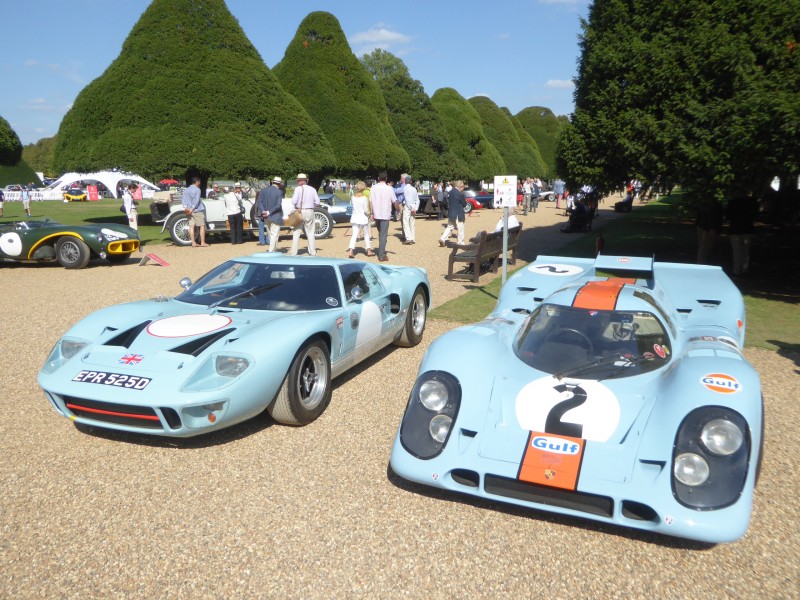







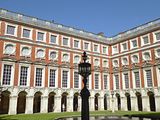
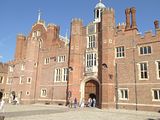
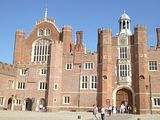
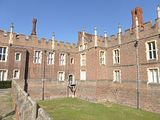
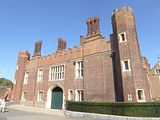
.jpg??width=180&height=120&fit=bounds)
.jpg??width=180&height=120&fit=bounds)
.jpg??width=180&height=120&fit=bounds)


.jpg??width=180&height=120&fit=bounds)

.jpg??width=180&height=120&fit=bounds)

.jpg??width=180&height=120&fit=bounds)
.jpg??width=180&height=120&fit=bounds)
.jpg??width=180&height=120&fit=bounds)
.jpg??width=180&height=120&fit=bounds)
.jpg??width=180&height=120&fit=bounds)
.jpg??width=180&height=120&fit=bounds)



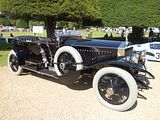
.jpg??width=180&height=120&fit=bounds)

.jpg??width=180&height=120&fit=bounds)
.jpg??width=180&height=120&fit=bounds)
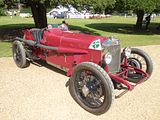
.jpg??width=180&height=120&fit=bounds)
.jpg??width=180&height=120&fit=bounds)
.jpg??width=180&height=120&fit=bounds)

.jpg??width=180&height=120&fit=bounds)
.jpg??width=180&height=120&fit=bounds)
.jpg??width=180&height=120&fit=bounds)
.jpg??width=180&height=120&fit=bounds)
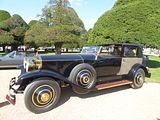
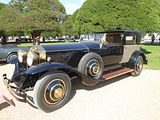

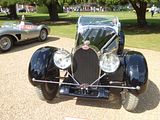
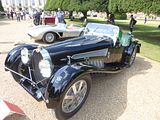
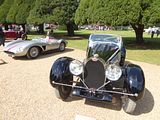
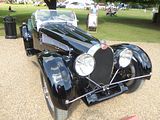
.jpg?width=180&height=120&fit=bounds)
.jpg?width=180&height=120&fit=bounds)
.jpg?width=180&height=120&fit=bounds)
.jpg?width=180&height=120&fit=bounds)
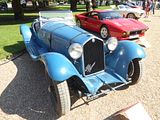
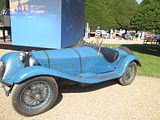
.jpg??width=180&height=120&fit=bounds)
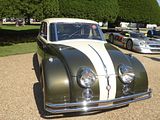
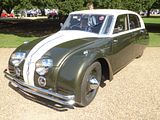
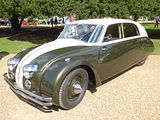
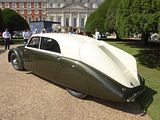

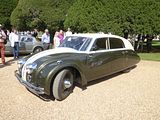
.jpg??width=180&height=120&fit=bounds)
.jpg??width=180&height=120&fit=bounds)


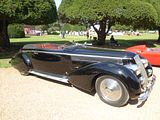
.jpg??width=180&height=120&fit=bounds)
.jpg??width=180&height=120&fit=bounds)

.jpg??width=180&height=120&fit=bounds)
.jpg??width=180&height=120&fit=bounds)
.jpg??width=180&height=120&fit=bounds)

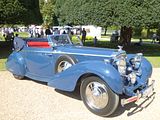
.jpg??width=180&height=120&fit=bounds)
.jpg??width=180&height=120&fit=bounds)
.jpg??width=180&height=120&fit=bounds)
.jpg??width=180&height=120&fit=bounds)
.jpg??width=180&height=120&fit=bounds)
.jpg??width=180&height=120&fit=bounds)
.jpg??width=180&height=120&fit=bounds)
.jpg??width=180&height=120&fit=bounds)

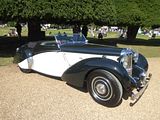
.jpg??width=180&height=120&fit=bounds)
.jpg??width=180&height=120&fit=bounds)

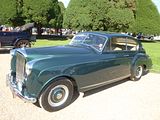
.jpg??width=180&height=120&fit=bounds)
.jpg??width=180&height=120&fit=bounds)
.jpg??width=180&height=120&fit=bounds)
.jpg??width=180&height=120&fit=bounds)
.jpg??width=180&height=120&fit=bounds)
.jpg??width=180&height=120&fit=bounds)
.jpg??width=180&height=120&fit=bounds)
.jpg??width=180&height=120&fit=bounds)
.jpg??width=180&height=120&fit=bounds)
.jpg??width=180&height=120&fit=bounds)
.jpg??width=180&height=120&fit=bounds)
.jpg??width=180&height=120&fit=bounds)
.jpg??width=180&height=120&fit=bounds)
.jpg??width=180&height=120&fit=bounds)
.jpg??width=180&height=120&fit=bounds)


.jpg??width=180&height=120&fit=bounds)
.jpg??width=180&height=120&fit=bounds)


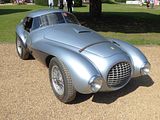
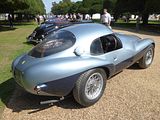
.jpg??width=180&height=120&fit=bounds)
.jpg??width=180&height=120&fit=bounds)
.jpg??width=180&height=120&fit=bounds)
.jpg??width=180&height=120&fit=bounds)
.jpg??width=180&height=120&fit=bounds)
.jpg??width=180&height=120&fit=bounds)
.jpg??width=180&height=120&fit=bounds)
.jpg??width=180&height=120&fit=bounds)
.jpg??width=180&height=120&fit=bounds)
.jpg??width=180&height=120&fit=bounds)
.jpg??width=180&height=120&fit=bounds)


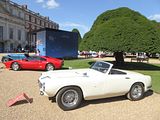
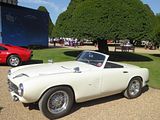
.jpg??width=180&height=120&fit=bounds)
.jpg??width=180&height=120&fit=bounds)
.jpg??width=180&height=120&fit=bounds)
.jpg??width=180&height=120&fit=bounds)
.jpg??width=180&height=120&fit=bounds)
.jpg??width=180&height=120&fit=bounds)
.jpg??width=180&height=120&fit=bounds)
.jpg??width=180&height=120&fit=bounds)
.jpg??width=180&height=120&fit=bounds)
.jpg?width=180&height=120&fit=bounds)
.jpg?width=180&height=120&fit=bounds)
.jpg?width=180&height=120&fit=bounds)
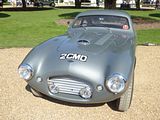
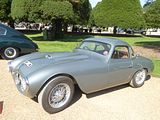
.jpg?width=180&height=120&fit=bounds)

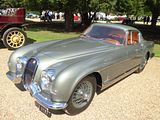
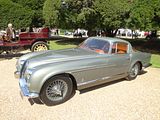
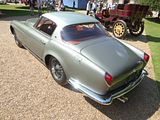
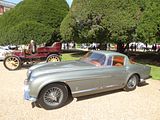
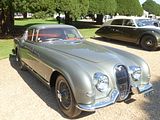
.jpg??width=180&height=120&fit=bounds)
.jpg??width=180&height=120&fit=bounds)
.jpg??width=180&height=120&fit=bounds)
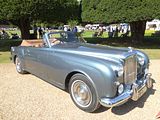
.jpg??width=180&height=120&fit=bounds)
.jpg??width=180&height=120&fit=bounds)
.jpg??width=180&height=120&fit=bounds)
.jpg??width=180&height=120&fit=bounds)
.jpg??width=180&height=120&fit=bounds)
.jpg??width=180&height=120&fit=bounds)
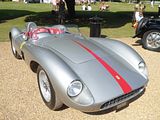

.jpg??width=180&height=120&fit=bounds)
.jpg??width=180&height=120&fit=bounds)
.jpg??width=180&height=120&fit=bounds)
.jpg??width=180&height=120&fit=bounds)
.jpg??width=180&height=120&fit=bounds)


.jpg??width=180&height=120&fit=bounds)

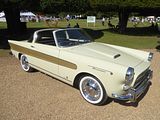
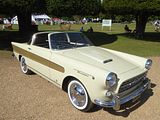

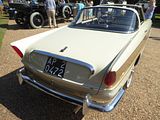

.jpg??width=180&height=120&fit=bounds)
.jpg??width=180&height=120&fit=bounds)
.jpg??width=180&height=120&fit=bounds)
.jpg??width=180&height=120&fit=bounds)
.jpg??width=180&height=120&fit=bounds)
.jpg??width=180&height=120&fit=bounds)
.jpg??width=180&height=120&fit=bounds)

.jpg??width=180&height=120&fit=bounds)
.jpg??width=180&height=120&fit=bounds)
.jpg??width=180&height=120&fit=bounds)
.jpg??width=180&height=120&fit=bounds)
.jpg??width=180&height=120&fit=bounds)
.jpg??width=180&height=120&fit=bounds)
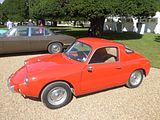
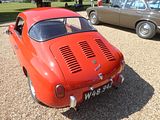
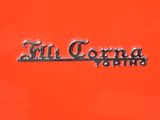
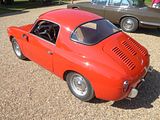
.jpg??width=180&height=120&fit=bounds)
.jpg??width=180&height=120&fit=bounds)
.jpg??width=180&height=120&fit=bounds)
.jpg??width=180&height=120&fit=bounds)
.jpg??width=180&height=120&fit=bounds)



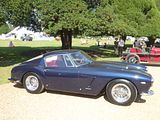
.jpg??width=180&height=120&fit=bounds)
.jpg??width=180&height=120&fit=bounds)
.jpg??width=180&height=120&fit=bounds)
.jpg??width=180&height=120&fit=bounds)
.jpg??width=180&height=120&fit=bounds)
.jpg?width=180&height=120&fit=bounds)
.jpg?width=180&height=120&fit=bounds)

.jpg?width=180&height=120&fit=bounds)
.jpg?width=180&height=120&fit=bounds)
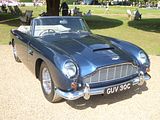
.jpg??width=180&height=120&fit=bounds)
.jpg??width=180&height=120&fit=bounds)
.jpg??width=180&height=120&fit=bounds)
.jpg??width=180&height=120&fit=bounds)
.jpg??width=180&height=120&fit=bounds)
.jpg??width=180&height=120&fit=bounds)
.jpg??width=180&height=120&fit=bounds)
.jpg??width=180&height=120&fit=bounds)
.jpg??width=180&height=120&fit=bounds)
.jpg??width=180&height=120&fit=bounds)
.jpg??width=180&height=120&fit=bounds)
.jpg??width=180&height=120&fit=bounds)
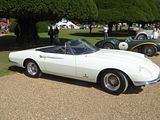
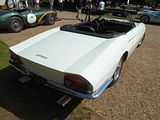
.jpg??width=180&height=120&fit=bounds)
.jpg??width=180&height=120&fit=bounds)
.jpg??width=180&height=120&fit=bounds)

.jpg??width=180&height=120&fit=bounds)
.jpg??width=180&height=120&fit=bounds)
.jpg??width=180&height=120&fit=bounds)
.jpg??width=180&height=120&fit=bounds)
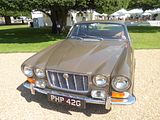

.jpg?width=180&height=120&fit=bounds)
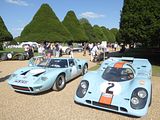
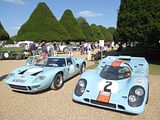
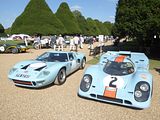
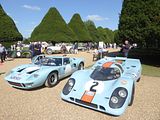

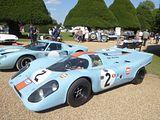
.jpg??width=180&height=120&fit=bounds)
.jpg??width=180&height=120&fit=bounds)
.jpg??width=180&height=120&fit=bounds)
.jpg??width=180&height=120&fit=bounds)

.jpg??width=180&height=120&fit=bounds)
.jpg??width=180&height=120&fit=bounds)
.jpg??width=180&height=120&fit=bounds)

.jpg??width=180&height=120&fit=bounds)
.jpg??width=180&height=120&fit=bounds)
.jpg??width=180&height=120&fit=bounds)
.jpg??width=180&height=120&fit=bounds)
.jpg??width=180&height=120&fit=bounds)
.jpg??width=180&height=120&fit=bounds)
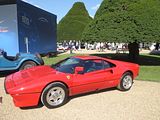
.jpg?width=180&height=120&fit=bounds)
.jpg?width=180&height=120&fit=bounds)
.jpg?width=180&height=120&fit=bounds)
.jpg??width=180&height=120&fit=bounds)
.jpg??width=180&height=120&fit=bounds)
.jpg??width=180&height=120&fit=bounds)
.jpg??width=180&height=120&fit=bounds)
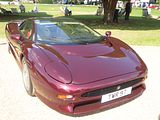

.jpg??width=180&height=120&fit=bounds)
.jpg??width=180&height=120&fit=bounds)
.jpg??width=180&height=120&fit=bounds)

.jpg??width=180&height=120&fit=bounds)
.jpg??width=180&height=120&fit=bounds)
.jpg?width=180&height=120&fit=bounds)

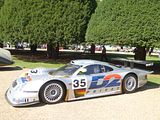

.jpg?width=180&height=120&fit=bounds)
.jpg?width=180&height=120&fit=bounds)
.jpg?width=180&height=120&fit=bounds)
.jpg?width=180&height=120&fit=bounds)
.jpg??width=180&height=120&fit=bounds)
.jpg??width=180&height=120&fit=bounds)
.jpg??width=180&height=120&fit=bounds)
.jpg??width=180&height=120&fit=bounds)
.jpg??width=180&height=120&fit=bounds)
.jpg??width=180&height=120&fit=bounds)
.jpg??width=180&height=120&fit=bounds)
.jpg??width=180&height=120&fit=bounds)
.jpg??width=180&height=120&fit=bounds)
.jpg??width=180&height=120&fit=bounds)
.jpg??width=180&height=120&fit=bounds)
.jpg??width=180&height=120&fit=bounds)
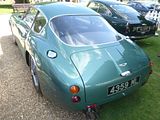
.jpg??width=180&height=120&fit=bounds)
.jpg??width=180&height=120&fit=bounds)
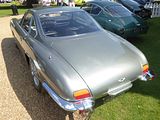
.jpg??width=180&height=120&fit=bounds)
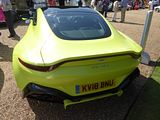
.jpg??width=180&height=120&fit=bounds)
.jpg??width=180&height=120&fit=bounds)
.jpg??width=180&height=120&fit=bounds)
.jpg??width=180&height=120&fit=bounds)
.jpg??width=180&height=120&fit=bounds)
.jpg??width=180&height=120&fit=bounds)
.jpg??width=180&height=120&fit=bounds)
.jpg??width=180&height=120&fit=bounds)
.jpg??width=180&height=120&fit=bounds)
.jpg?width=180&height=120&fit=bounds)
.jpg?width=180&height=120&fit=bounds)
.jpg?width=180&height=120&fit=bounds)
.jpg?width=180&height=120&fit=bounds)
.jpg?width=180&height=120&fit=bounds)
.jpg?width=180&height=120&fit=bounds)
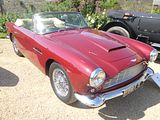
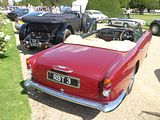
.jpg??width=180&height=120&fit=bounds)
.jpg??width=180&height=120&fit=bounds)
.jpg??width=180&height=120&fit=bounds)
.jpg??width=180&height=120&fit=bounds)
.jpg??width=180&height=120&fit=bounds)
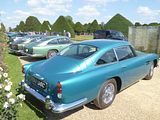
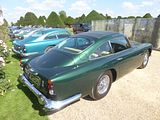

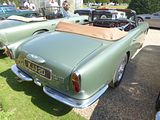
.jpg?width=180&height=120&fit=bounds)
.jpg?width=180&height=120&fit=bounds)
.jpg?width=180&height=120&fit=bounds)
.jpg?width=180&height=120&fit=bounds)
.jpg?width=180&height=120&fit=bounds)
.jpg?width=180&height=120&fit=bounds)
.jpg?width=180&height=120&fit=bounds)
.jpg?width=180&height=120&fit=bounds)
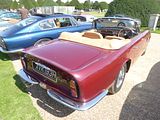
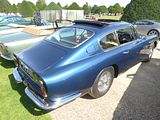
.jpg??width=180&height=120&fit=bounds)
.jpg?width=180&height=120&fit=bounds)
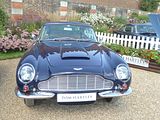
.jpg??width=180&height=120&fit=bounds)
.jpg??width=180&height=120&fit=bounds)
.jpg??width=180&height=120&fit=bounds)
.jpg??width=180&height=120&fit=bounds)
.jpg??width=180&height=120&fit=bounds)
.jpg??width=180&height=120&fit=bounds)
.jpg??width=180&height=120&fit=bounds)
.jpg??width=180&height=120&fit=bounds)
.jpg??width=180&height=120&fit=bounds)
.jpg??width=180&height=120&fit=bounds)
.jpg??width=180&height=120&fit=bounds)
.jpg??width=180&height=120&fit=bounds)
.jpg??width=180&height=120&fit=bounds)
.jpg??width=180&height=120&fit=bounds)
.jpg??width=180&height=120&fit=bounds)
.jpg??width=180&height=120&fit=bounds)
.jpg??width=180&height=120&fit=bounds)
.jpg??width=180&height=120&fit=bounds)
.jpg??width=180&height=120&fit=bounds)
.jpg??width=180&height=120&fit=bounds)
.jpg??width=180&height=120&fit=bounds)
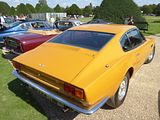
.jpg??width=180&height=120&fit=bounds)
.jpg??width=180&height=120&fit=bounds)
.jpg??width=180&height=120&fit=bounds)
.jpg??width=180&height=120&fit=bounds)
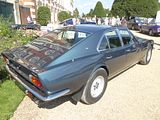
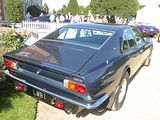
.jpg??width=180&height=120&fit=bounds)
.jpg??width=180&height=120&fit=bounds)
.jpg??width=180&height=120&fit=bounds)
.jpg??width=180&height=120&fit=bounds)
.jpg??width=180&height=120&fit=bounds)
.jpg??width=180&height=120&fit=bounds)
.jpg??width=180&height=120&fit=bounds)
.jpg??width=180&height=120&fit=bounds)
.jpg??width=180&height=120&fit=bounds)
.jpg??width=180&height=120&fit=bounds)
.jpg??width=180&height=120&fit=bounds)
.jpg??width=180&height=120&fit=bounds)
.jpg??width=180&height=120&fit=bounds)
.jpg??width=180&height=120&fit=bounds)
.jpg??width=180&height=120&fit=bounds)
.jpg??width=180&height=120&fit=bounds)
.jpg??width=180&height=120&fit=bounds)
.jpg??width=180&height=120&fit=bounds)
.jpg??width=180&height=120&fit=bounds)
.jpg??width=180&height=120&fit=bounds)
.jpg??width=180&height=120&fit=bounds)
.jpg??width=180&height=120&fit=bounds)
.jpg?width=180&height=120&fit=bounds)
.jpg?width=180&height=120&fit=bounds)
.jpg?width=180&height=120&fit=bounds)
.jpg?width=180&height=120&fit=bounds)
.jpg?width=180&height=120&fit=bounds)
.jpg?width=180&height=120&fit=bounds)
.jpg?width=180&height=120&fit=bounds)
.jpg?width=180&height=120&fit=bounds)
.jpg?width=180&height=120&fit=bounds)
.jpg?width=180&height=120&fit=bounds)
.jpg?width=180&height=120&fit=bounds)
.jpg?width=180&height=120&fit=bounds)
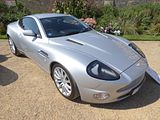
.jpg??width=180&height=120&fit=bounds)
.jpg??width=180&height=120&fit=bounds)
.jpg??width=180&height=120&fit=bounds)
.jpg??width=180&height=120&fit=bounds)
.jpg??width=180&height=120&fit=bounds)
.jpg??width=180&height=120&fit=bounds)
.jpg??width=180&height=120&fit=bounds)
.jpg??width=180&height=120&fit=bounds)
.jpg??width=180&height=120&fit=bounds)
.jpg??width=180&height=120&fit=bounds)
.jpg??width=180&height=120&fit=bounds)
.jpg??width=180&height=120&fit=bounds)

.jpg??width=180&height=120&fit=bounds)
.jpg??width=180&height=120&fit=bounds)
.jpg??width=180&height=120&fit=bounds)
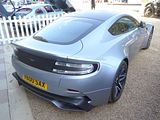
.jpg??width=180&height=120&fit=bounds)
.jpg??width=180&height=120&fit=bounds)
.jpg??width=180&height=120&fit=bounds)
.jpg??width=180&height=120&fit=bounds)
.jpg??width=180&height=120&fit=bounds)
.jpg??width=180&height=120&fit=bounds)
.jpg??width=180&height=120&fit=bounds)
.jpg??width=180&height=120&fit=bounds)
.jpg??width=180&height=120&fit=bounds)
.jpg??width=180&height=120&fit=bounds)
.jpg??width=180&height=120&fit=bounds)
.jpg??width=180&height=120&fit=bounds)
.jpg??width=180&height=120&fit=bounds)




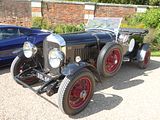
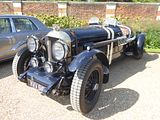
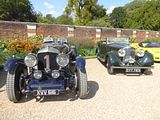
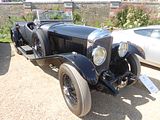

.jpg??width=180&height=120&fit=bounds)
.jpg??width=180&height=120&fit=bounds)
.jpg??width=180&height=120&fit=bounds)
.jpg??width=180&height=120&fit=bounds)
.jpg??width=180&height=120&fit=bounds)
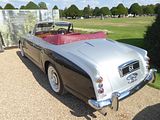
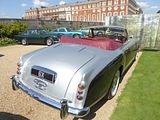



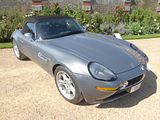
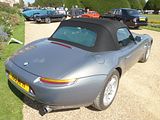
.jpg?width=180&height=120&fit=bounds)
.jpg?width=180&height=120&fit=bounds)
.jpg?width=180&height=120&fit=bounds)
.jpg?width=180&height=120&fit=bounds)

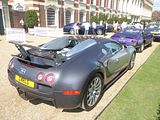
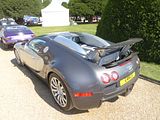


.jpg??width=180&height=120&fit=bounds)
.jpg??width=180&height=120&fit=bounds)


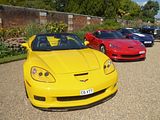

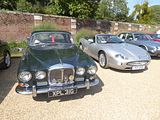

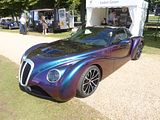
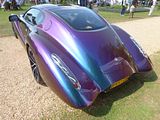
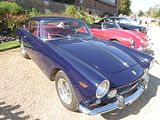
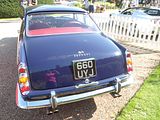
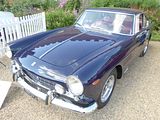
.jpg??width=180&height=120&fit=bounds)
.jpg??width=180&height=120&fit=bounds)
.jpg??width=180&height=120&fit=bounds)
.jpg??width=180&height=120&fit=bounds)
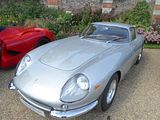
.jpg??width=180&height=120&fit=bounds)
.jpg??width=180&height=120&fit=bounds)





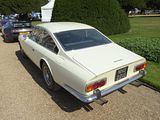
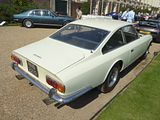

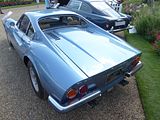

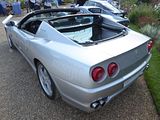
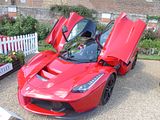
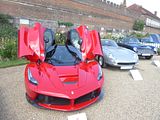

.jpg?width=180&height=120&fit=bounds)
.jpg?width=180&height=120&fit=bounds)
.jpg??width=180&height=120&fit=bounds)

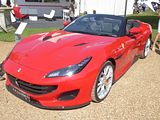
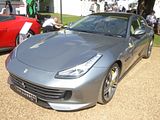

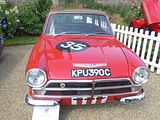
.jpg??width=180&height=120&fit=bounds)
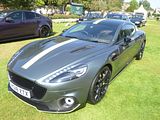
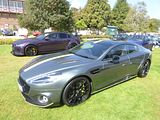
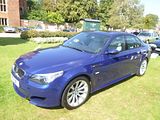
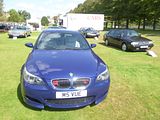
.jpg??width=180&height=120&fit=bounds)
.jpg??width=180&height=120&fit=bounds)

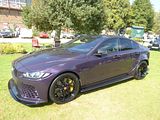
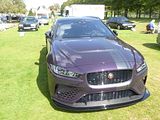



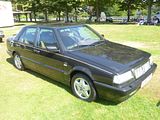
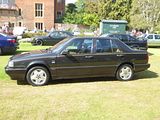
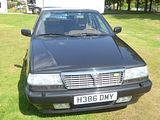


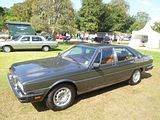

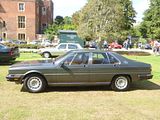


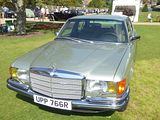
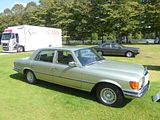


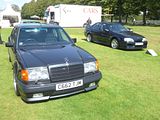


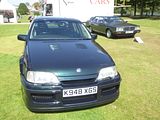
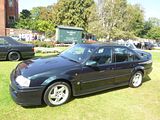
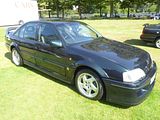

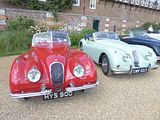
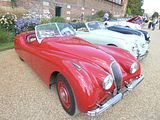



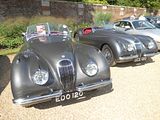

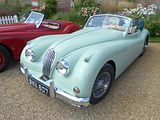

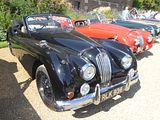
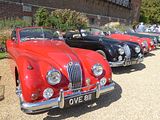

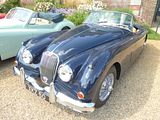
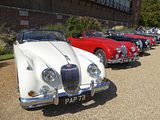








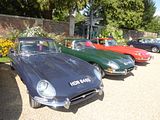
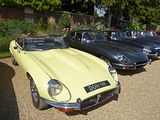
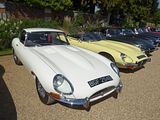

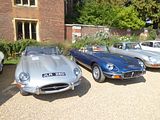
.jpg??width=180&height=120&fit=bounds)
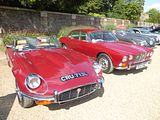
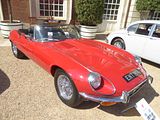



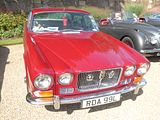
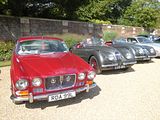

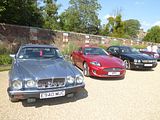




.jpg??width=180&height=120&fit=bounds)
.jpg??width=180&height=120&fit=bounds)
.jpg??width=180&height=120&fit=bounds)
.jpg??width=180&height=120&fit=bounds)
.jpg??width=180&height=120&fit=bounds)
.jpg??width=180&height=120&fit=bounds)
.jpg??width=180&height=120&fit=bounds)
.jpg??width=180&height=120&fit=bounds)
.jpg??width=180&height=120&fit=bounds)
.jpg??width=180&height=120&fit=bounds)
.jpg??width=180&height=120&fit=bounds)
.jpg??width=180&height=120&fit=bounds)
.jpg??width=180&height=120&fit=bounds)
.jpg??width=180&height=120&fit=bounds)
.jpg??width=180&height=120&fit=bounds)
.jpg??width=180&height=120&fit=bounds)
.jpg??width=180&height=120&fit=bounds)
.jpg??width=180&height=120&fit=bounds)
.jpg??width=180&height=120&fit=bounds)
.jpg??width=180&height=120&fit=bounds)
.jpg??width=180&height=120&fit=bounds)
.jpg??width=180&height=120&fit=bounds)
.jpg??width=180&height=120&fit=bounds)
.jpg??width=180&height=120&fit=bounds)
.jpg??width=180&height=120&fit=bounds)
.jpg??width=180&height=120&fit=bounds)
.jpg??width=180&height=120&fit=bounds)
.jpg??width=180&height=120&fit=bounds)
.jpg??width=180&height=120&fit=bounds)
.jpg??width=180&height=120&fit=bounds)
.jpg??width=180&height=120&fit=bounds)
.jpg??width=180&height=120&fit=bounds)
.jpg??width=180&height=120&fit=bounds)
.jpg??width=180&height=120&fit=bounds)
.jpg??width=180&height=120&fit=bounds)
.jpg??width=180&height=120&fit=bounds)
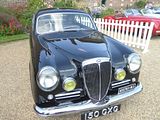

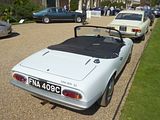
.jpg??width=180&height=120&fit=bounds)
.jpg??width=180&height=120&fit=bounds)
.jpg??width=180&height=120&fit=bounds)
.jpg??width=180&height=120&fit=bounds)
.jpg??width=180&height=120&fit=bounds)
.jpg??width=180&height=120&fit=bounds)
.jpg??width=180&height=120&fit=bounds)
.jpg??width=180&height=120&fit=bounds)
.jpg??width=180&height=120&fit=bounds)
.jpg??width=180&height=120&fit=bounds)
.jpg??width=180&height=120&fit=bounds)
.jpg??width=180&height=120&fit=bounds)
.jpg??width=180&height=120&fit=bounds)

.jpg??width=180&height=120&fit=bounds)
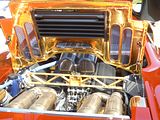
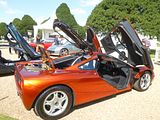
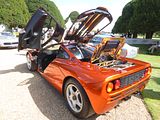
.jpg??width=180&height=120&fit=bounds)
.jpg??width=180&height=120&fit=bounds)
.jpg??width=180&height=120&fit=bounds)
.jpg??width=180&height=120&fit=bounds)
.jpg??width=180&height=120&fit=bounds)
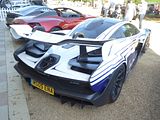
.jpg??width=180&height=120&fit=bounds)
.jpg??width=180&height=120&fit=bounds)
.jpg??width=180&height=120&fit=bounds)
.jpg??width=180&height=120&fit=bounds)
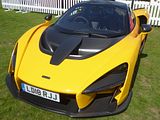
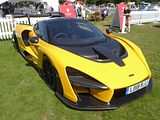
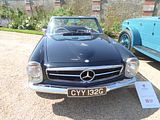
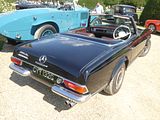
.jpg??width=180&height=120&fit=bounds)
.jpg??width=180&height=120&fit=bounds)
.jpg??width=180&height=120&fit=bounds)
.jpg??width=180&height=120&fit=bounds)
.jpg??width=180&height=120&fit=bounds)
.jpg??width=180&height=120&fit=bounds)
.jpg??width=180&height=120&fit=bounds)
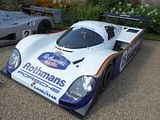
.jpg??width=180&height=120&fit=bounds)
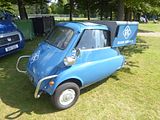
.jpg??width=180&height=120&fit=bounds)
.jpg??width=180&height=120&fit=bounds)
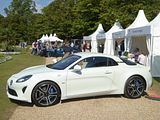
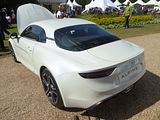
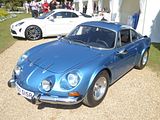

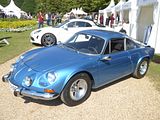
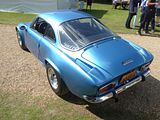
.jpg??width=180&height=120&fit=bounds)
.jpg??width=180&height=120&fit=bounds)
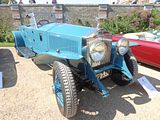
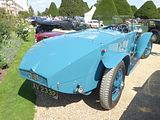
.jpg??width=180&height=120&fit=bounds)
.jpg??width=180&height=120&fit=bounds)
.jpg??width=180&height=120&fit=bounds)
.jpg??width=180&height=120&fit=bounds)
.jpg??width=180&height=120&fit=bounds)
.jpg??width=180&height=120&fit=bounds)
.jpg??width=180&height=120&fit=bounds)

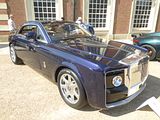
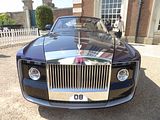


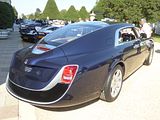
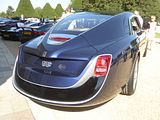
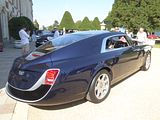
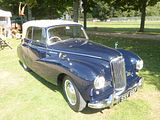
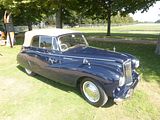
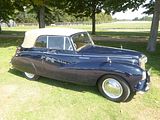
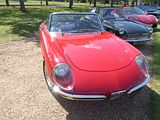
.jpg?width=180&height=120&fit=bounds)
.jpg?width=180&height=120&fit=bounds)
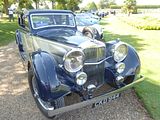
.jpg??width=180&height=120&fit=bounds)
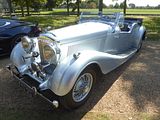
.jpg??width=180&height=120&fit=bounds)
.jpg??width=180&height=120&fit=bounds)
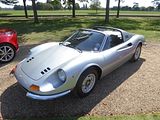
.jpg??width=180&height=120&fit=bounds)
.jpg??width=180&height=120&fit=bounds)
.jpg??width=180&height=120&fit=bounds)
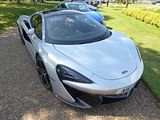
.jpg??width=180&height=120&fit=bounds)
.jpg??width=180&height=120&fit=bounds)
.jpg??width=180&height=120&fit=bounds)
.jpg??width=180&height=120&fit=bounds)

.jpg??width=180&height=120&fit=bounds)
.jpg??width=180&height=120&fit=bounds)
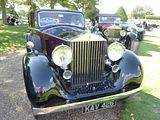
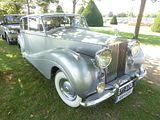
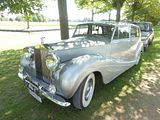
.jpg??width=180&height=120&fit=bounds)
.jpg??width=180&height=120&fit=bounds)
.jpg??width=180&height=120&fit=bounds)
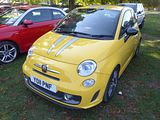
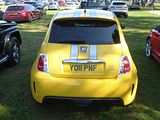

.jpg??width=180&height=120&fit=bounds)
.jpg??width=180&height=120&fit=bounds)

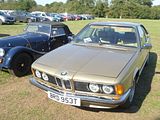
.jpg??width=180&height=120&fit=bounds)
.jpg??width=180&height=120&fit=bounds)

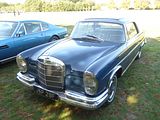
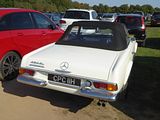
.jpg??width=180&height=120&fit=bounds)



